ONTHE FAST TRACK













































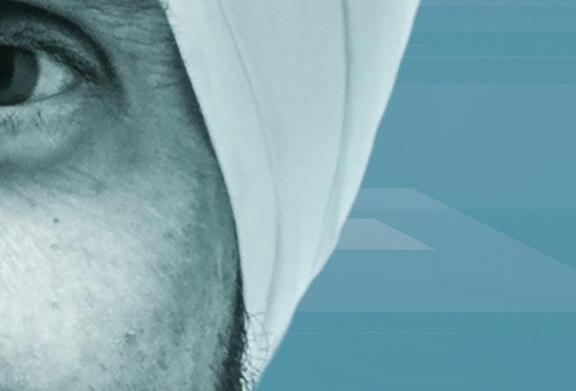



SPECIAL REPORT THE RAPID RISE OF EDTECH: HOW ADVANCED TECHNOLOGIES ARE TRANSFORMING THE WAY WE TEACH AND LEARN
AIOKA’S BALLY SINGH IS REIMAGINING THE SUPER LUXE F1 VISITOR EXPERIENCE BD 2.10 KD 1.70 RO 2.10 SR 20 DHS 20 gulfbusiness.com / SEPTEMBER 2023 P.14 IN THE LOOP: Business models powering the circular economy P.60 LEGACY OF LUXURY: Ayurveda-inspired Forest Essentials makes inroads into the Middle East
POWEREDBYHIGH-PROFILEPARTNERSHIPS,
Experience the Future of Living!

Join



From smart homes and renewable energy solutions to urban planning and sustainable design, the possibilities are limitless!
Immerse yourself in the next generation of property and explore over 300 exhibitors onsite from world-class developers, consultants, facilitators, designers, architects, �nancial institutions, PropTech developers, governments, and top-level industry experts.
Don’t miss the most anticipated event of the year!
@csglobalksa cityscapeglobal @csglobalksa cityscapeglobal.com Foundation Par tners Destination Par tner Sponsored by Co-Organised by 10 - 13 September 2023
Scan here to register for your free pass
Riyadh Exhibition & Convention Center Malham - Kingdom of Saudi Arabia
us
Uncover the
for a captivating journey into the future of living.
latest advancements that transform the way we live, work, and connect with our living spaces.
07 The brief




An insight into the news and trends shaping the region with perceptive commentary and analysis





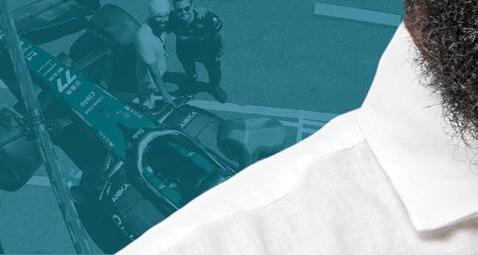







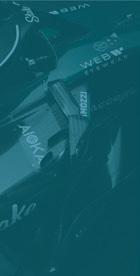
43


The convergence of education and technology



From blended learning and AI to gamification and online education, we look at how technology is reshaping the learning experience




30




Formula for success
Bally Singh, chairman and founder of Aioka, on the company’s ambition to create unique event experiences around the world


gulfbusiness.com September 2023 3
CONTENTS / SEPTEMBER 2023
Gulf Business
Illustration: Getty images/anyaberkut
Illustration: Getty images/Imagezoo













202 3
WITH US #GBWeb3Awards
BOOKINGS
ENQUIRIES manish.chopra@motivate.ae | mansi.khatwani@motivate.ae | sangeetha.js@motivate.ae VOTE HERE FIND OUT MORE GulfBusiness IN PARTNERSHIP WITH VOTE PROCESSING PARTNER PRESENTED BY
SHORTLIST ANNOUNCED
CONNECT
FOR EVENT SPONSORSHIP, TABLE
AND GENERAL
59 Lifestyle
A legacy of beauty: India’s premium Ayurveda skincare brand is making waves in the region p.60

Luxury unlimited: Why the Rolls-Royce Cullinan Black Badge is simply spectacular p.66

The SME Story
Interviews with entrepreneurs and insights from experts on how the regional SME ecosystem is evolving

Editor-in-chief Obaid Humaid Al Tayer
Managing partner and group editor Ian Fairservice
Chief commercial officer Anthony Milne anthony@motivate.ae
Publisher Manish Chopra manish.chopra@motivate.ae
Editor Neesha Salian neesha.salian@motivate.ae
Digital editor Marisha Singh marisha.singh@motivate.ae
Tech editor Divsha Bhat divsha.bhat@motivate.ae
Senior feature writer Kudakwashe Muzoriwa
Kudakwashe.Muzoriwa@motivate.ae
Senior art director Freddie N. Colinares freddie@motivate.ae
Senior art director Olga Petroff olga.petroff@motivate.ae
General manager – production S Sunil Kumar
Production manager Binu Purandaran
Production supervisor Venita Pinto
Group sales manager Mansi Khatwani
Mansi.Khatwani@motivate.ae
Senior sales manager Sangeetha J S Sangeetha.js@motivate.ae
Group marketing manager Joelle AlBeaino joelle.albeaino@motivate.ae
Cover: Freddie N Colinares
gulfbusiness.com September 2023 5
“Sustainable development and climate action are integral parts of our strategy to achieve continued economic and social growth for both present and future generations.”
Sheikh Mohamed bin Zayed Al Nahyan, President of the UAE and Ruler of Abu Dhabi
70
CONTENTS / SEPTEMBER 2023 HEAD OFFICE: Media One Tower, Dubai Media City, PO Box 2331, Dubai, UAE, Tel: +971 4 427 3000, Fax: +971 4 428 2260, motivate@motivate.ae DUBAI MEDIA CITY: SD 2-94, 2nd Floor, Building 2, Dubai, UAE, Tel: +971 4 390 3550, Fax: +971 4 390 4845 ABU DHABI: PO Box 43072, UAE, Tel: +971 2 677 2005, Fax: +971 2 677 0124, motivate-adh@motivate.ae SAUDI ARABIA: Regus Offices No. 455 - 456, 4th Floor, Hamad Tower, King Fahad Road, Al Olaya, Riyadh, KSA, Tel: +966 11 834 3595 / +966 11 834 3596, motivate@motivate.ae LONDON: Acre House, 11/15 William Road, London NW1 3ER, UK, motivateuk@motivate.ae Follow us on social media: Linkedin: Gulf Business Facebook: GulfBusiness Twitter: @GulfBusiness Instagram: @GulfBusiness
Images
Pic: Getty



























































































































































































































































SHORTLIST ANNOUNCED FOR EVENT SPONSORSHIP, TABLE BOOKINGS AND GENERAL ENQUIRIES manish.chopra@motivate.ae | mansi.khatwani@motivate.ae | sangeetha.js@motivate.ae #GulfBusinessAwards GulfBusiness CONNECT WITH US VOTE HERE FIND OUT MORE Presented By Vote Processing Partner Partner Venue Partners


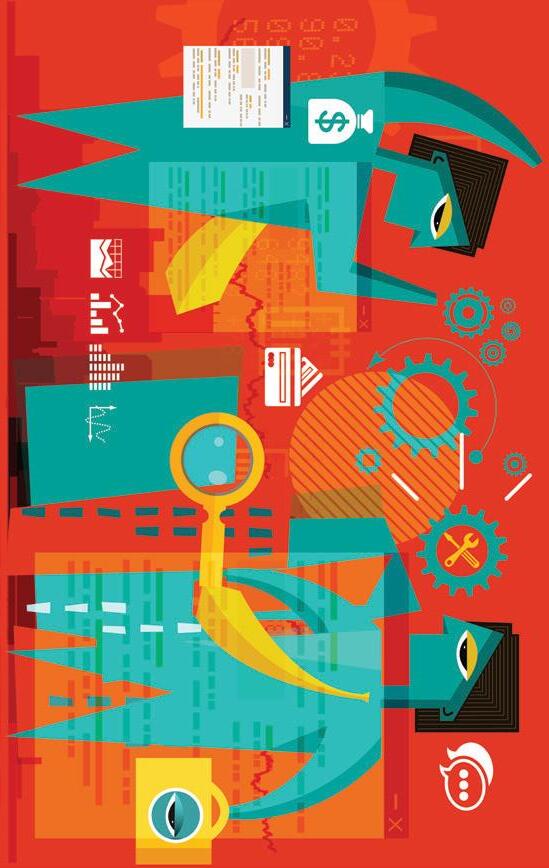
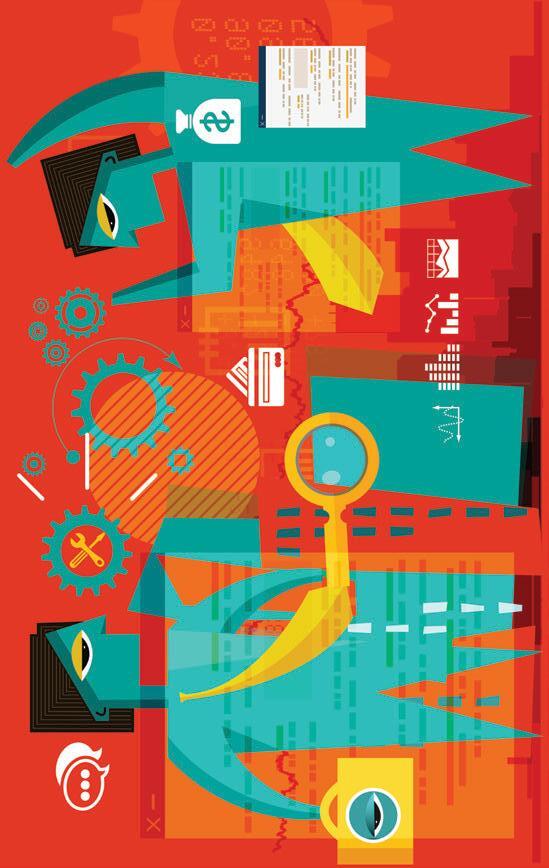
























gulfbusiness.com September 2023 7 Banking 08 Hospitality 10 Construction 11 Alan’s Corner 22 Productivity 24 SEPT 23 The Brief SOURCE: KNIGHT FRANK, YOUGOV ASIDE FROM DUBAI, THE REST OF THE EMIRATES ARE BECOMING INCREASINGLY APPEALING TO GLOBAL INVESTORS DUBAI ABU DHABI SHARJAH RAS AL KHAIMAH AJMAN OTHERS EMIRATES TARGETED FOR PROPERTY PURCHASES 66% 20% 4% 5% 1% 4% Coming full circle Embracing circular economy models on platforms can drive innovation, economic opportunities, job creation and sustainability p.14 ILLUSTRATION: GETTY IMAGES/ JAUHARI1
Banking on the cloud
Why cloud banking is emerging as the future of financial services

Extensive research suggests that the GCC neo-banking market will be worth $3.45bn by 2026. High internet usage, advanced fintech policies and frameworks, and a rapid shift towards cloud banking solutions are powering this growth.
The latter are transforming how fintechs and challenger banks innovate and serve their customers. Moreover, because of their infinite cost and operational benefits, cloud banking is rapidly becoming the only viable way for banks to survive.

Underpinning the importance of this new banking infrastructure is its structural ability to solve complex problems, making it faster, cheaper, and more accessible for banks to innovate new products and services. It becomes easier to roll out, test, and scale new services in quick succession. But what exactly is ‘cloud banking,’ and how does it work?
KEY DIFFERENCES
Cloud banking refers to the delivery of banking services through cloud computing technology –remote rather than on-site. This means that banks use
remote servers, rather than local servers or physical infrastructure, to store and process their data and applications. There are three key differences.
First, traditional banks store and process their data using physical infrastructure – which requires real-world on-site maintenance and constant physical upgrading. In contrast, cloud banking utilises third-party providers to store and process data in distant servers, allowing banks to save on hardware, software, maintenance, and upgrades because they can outsource their IT infrastructure to cloud providers.
Cloud banking is also more scalable than traditional banking. This is because cloud providers can quickly and easily add more computing resources to accommodate increases in demand: limitless, instant access to ever-greater computing power. Traditional banks, on the other hand, may require significant investments in physical infrastructure to expand their operations.
Cloud banking providers also use advanced encryption and multi-factor authentication to protect their customers’ data. And while it is true that traditional banks also have security measures, these can be time-consuming and costly to implement.
STAYING COMPETITIVE
This latter point – cost savings – makes cloud banking particularly important. Cloud banking allows banks
gulfbusiness.com 8 September 2023
The Brief / Banking
COMMENT ILLUSTRATION:
GETTY IMAGES/KOSTENKODESIGN
to save on hardware, so tware, and maintenance and to take advantage of pay-as-you-go pricing models. This provides significant flexibility (upgrading or downgrading in flex to market demands), making it possible for banks to rapidly adjust their balance sheets, respond to global events and deliver the right customer experience at the right time.
Cloud banking also enables banks to launch new products and services quickly and easily, such as mobile apps and digital wallets. The process of innovation and product development is accelerated. This agility is critical in a highly competitive market, where banks need to stay ahead of the curve to maintain their market position. It means that banks can improve the customer experience by o ering seamless, personalised, and convenient customer services through multiple channels, such as mobile, web, and social media. This can improve customer satisfaction and loyalty, increasing revenues and market share.
SECURITY CONCERNS
Cloud providers also use advanced security measures to protect their customers’ data, such as encryption and multi-factor authentication – which can be constantly updated to meet emerging threats without needing to purchase additional physical infrastructure. This can help UAE and Middle Eastern banks comply with local and international regulations, such as the General Data Protection Regulation (or GDPR) and the PCI Security Standards Council (or PCI DSS).
Despite these enormous benefits, there remain challenges. Security is one – because even though cloud banking solutions o er considerable benefits, banks need to trust that cloud providers can protect their sensitive data from cyber threats. To mitigate these concerns, banks must perform a comprehensive risk assessment, develop a
CLOUD PROVIDERS ALSO USE ADVANCED SECURITY MEASURES TO PROTECT THEIR CUSTOMERS’ DATA, SUCH AS ENCRYPTION AND MULTI-FACTOR AUTHENTICATION
Jaime Munoz, executive vice president and head of Retail Banking Technology, Mashreq
CLOUD BANKING ENABLES BANKS TO LAUNCH NEW PRODUCTS AND SERVICES QUICKLY AND EASILY, SUCH AS MOBILE APPS AND DIGITAL WALLETS
strong security strategy, and establish robust data encryption and access control protocols.
The issue of data protection also introduces new challenges related to regulatory requirements specific to the outsourcing of data management. Banks are held to exceptionally high standards of regulatory alignments – such as know-your-customer and antimoney laundering regulations. These can vary across di erent countries and regions.
Banks must ensure that their cloud service providers comply with these regulations domestically and across borders, which they can do by partnering with cloud service providers with a deep understanding of regulatory compliance.
THE CUSTOMER EXPERIENCE
With robust security in place, banks can utilise data processing to develop highly personalised services and solutions that are relevant to the individual customer in real-time. With robust analytics comes the ability to gain unparalleled insights into customer habits, behaviours, strengths, and weaknesses.
Customers who struggle to save can be provided with bespoke advice and product support to help them maximise their income and save for the future. New families can receive fi nancing support as their children grow and as their parents grow older – because with third-party machine learning algorithms, the potential for innovation expands exponentially.
While cloud banking is still a developing concept, it holds the potential to revolutionise the financial services industry. As technology evolves, financial institutions must explore innovative solutions that enhance customer experiences and drive operational e ciency. Cloud banking represents a potential pathway for achieving these goals, although each institution’s journey will be unique and dependent on its specific needs and considerations.
Cloud banking o ers exciting possibilities, however, it is crucial for financial institutions to evaluate its benefits and challenges in alignment with their individual requirements and regulatory obligations. The concept of cloud banking invites exploration and discussion as the financial services landscape continues to evolve.
gulfbusiness.com September 2023 9
“NEW FAMILIES CAN RECEIVE FINANCING SUPPORT AS THEIR CHILDREN GROW AND AS THEIR PARENTS GROW OLDER – BECAUSE WITH THIRD-PARTY MACHINE LEARNING ALGORITHMS THE POTENTIAL FOR INNOVATION EXPANDS EXPONENTIALLY”
Expanding the horizons of hospitality
Key trends impacting the hospitality and tourism sectors in the region
The hospitality sector, a vibrant pillar of the economy, has always been a reflection of our collective desire to explore and connect with the world. In the second half of 2023, this ever-evolving industry finds itself at a crucial juncture, witnessing transformative trends that are set to redefine the future of travel.
According to a recent report by Knight Frank, the tourism and travel sector is transforming and being positioned as one of the key growth drivers of future economies in the UAE and Saudi Arabia.
Today, more than 310,000 hotel rooms are being developed across those regions, that is due to be completed by 2030. In an ever-evolving industry, travel trends have continuously changed over the years and as we are in the second half of 2023, hotels remain agile to adapt to changing landscapes and preferences of the modern-day traveller. We thus find ourselves at the intersection of innovation,

technology, sustainability, and personalised experiences, all heavily impacting the hospitality market.
EMBRACING SUSTAINABLE PRACTICES
As climate change impacts become increasingly apparent, travellers are now prioritising environmentally-friendly destinations and looking for hotels that implement eco-friendly practices. According to the Sustainable Travel Report by Booking.com, 43 per cent are willing to pay extra for travel options with a sustainable certification, while 76 per cent of travellers desire to travel more sustainably, showcasing the significant shift in consumer preferences as they become more environmentally aware. Dubai, a prominent global tourism destination, has taken a remarkable step in promoting sustainable tourism within the emirate. Most recently, the Department of Economy and Tourism (DET) launched the “Dubai Sustainable Tourism Stamp”, a new sustainability initiative that seeks to recognise hotels with the highest adherence to DET’s 19 “Sustainability Requirements”.
The initiative aims to expedite progress in empowering the tourism sector to achieve its sustainability goals, while supporting the nation’s goal to achieve Net Zero by 2050. The UAE has set ambitious targets to reduce greenhouse gas emissions and increase renewable energy usage, and hotels have started to mirror the same vision as they increasingly implement sustainable practices and advocate for global change.
REDEFINING TRAVEL IN THE DIGITAL AGE
Technology’s influence on the travel industry is profound, particularly with the transformative impact of artificial intelligence (AI) on the customer experience. AI is revolutionising customer service by meeting the demand for faster responses on online platforms. Through AI-driven chatbots and instant messaging apps, businesses can provide swift and efficient responses, surpassing human capabilities.
gulfbusiness.com 10 September 2023 The Brief / Hospitality Trends
ILLUSTRATION: GETTY IMAGES/ XIAOYUN LI
IN
2022
ALONE, SAUDI
ARABIA
ATTRACTED AND IS DRIVING AMBITIOUS PLANS TO INVEST IN ITS NON-OIL ECONOMY, IN LINE WITH ITS VISION 2030 93.5 MILLION VISITORS
Not only does AI streamline customer interactions, but it also empowers hotels to gain valuable insights from the data. By understanding customer preferences, hotels can personalise offerings, ensuring guests’ needs are met and enhancing overall satisfaction. This data-driven approach also optimises pricing strategies, resulting in competitive advantages for businesses. Furthermore, the integration of technology extends to face-to-face interactions, where AI-powered solutions are reducing queues at reception desks and improving operational e ciency. These innovations enable the industry to create more immersive and seamless experiences, thereby fostering customer loyalty.

RISING DEMAND FOR LUXURY HOTELS
Over the past two years, the hospitality industry has recorded a rising demand for luxury travel. Customers are looking for tailored, high-end, and unique experiences – and are ready to pay for them.
Luxury travel is not limited to luxurious resorts and o erings, but it is important for hotel groups to create bespoke packages that combine the hotel’s diverse offerings and amenities as well as the local culture’s heritage and traditions, showcasing authenticity and uniqueness.
In the GCC, Saudi Arabia is becoming one of the leading global forces in the tourism sector. With its vast landscapes and wide resources, the kingdom is emerging as a prime destination for the hospitality industry, particularly, the luxury travel market. In 2022 alone, Saudi Arabia attracted 93.5 million visitors and is driving ambitious plans to invest in its non-oil economy, aligning with its Vision 2030. In fact, large hotel groups have already made their way to the kingdom. Looking ahead to H2 2023, we have ambitious plans to open seven additional properties across Saudi Arabia.
In conclusion, the hospitality industry is at a pivotal moment today, driven by sustainability efforts, cutting-edge technology, and a thriving regional market, and I believe the sector in the GCC looks particularly promising.
Seeking sustainable solutions using digital twins
A data and technology-driven approach can enable the built environment’s decarbonisation mission
In The Art of Taking Action, author Gregg Krech wrote, “We are all depending on each other, as we weave our lives, families and communities together. So, when we do not carry our weight, the fabric gets a buckle in it. I’d like to think that designing, building, and operating infrastructure plays a significant role in weaving our lives, families, and communities together, as Krech said. And with that, we carry the weight of advancing that infrastructure for a more sustainable, environmentally friendly existence.
As climate change continues to throw the world o balance, numbers show it is the designers, builders, and owner-operators of infrastructure who will need to lead the transition to low-carbon solutions, waste reduction, and energy conservation.

According to the UNOPS report Infrastructure for Climate Action, infrastructure “is responsible for 79 per cent of total greenhouse gas emissions and 88 per cent of all adaptation costs”.

Clearly, no one can tackle these sustainability challenges alone. So, how do we work together in the quest to meet and exceed sustainability goals while we design, build, operate, and maintain the world’s infrastructure?
EMPOWERING ACTION FOR SUSTAINABLE INFRASTRUCTURE
In 2015, all UN member states adopted the 2030 Agenda for Sustainable
gulfbusiness.com September 2023 11
Tim Cordon, chief operating officer, Middle East & Africa at Radisson Hotel Group
Rodrigo Fernandes, director of ES(D)G at Bentley Systems
ILLUSTRATION: GETTY IMAGES/ NAQIEWEI The Brief / Construction
TODAY, THERE ARE MORE THAN
310,000
HOTEL ROOMS ARE BEING DEVELOPED ACROSS THE UAE AND SAUDI ARABIA
Development with 17 sustainable development goals (SDGs) for humanity and the planet.
Using an infrastructure lens, we can zoom in on one goal to empower organisations in their effort to design, build, operate, and maintain infrastructure sustainably: Goal #17, to “strengthen the means of implementation and revitalise the global partnership for sustainable development”.
Empowering effective implementation and collaboration through partnerships requires a data-centric approach. Most data, while abundant, is typically siloed in different formats, multiple repositories, and various disciplines across the supply chains. Using a data-centric approach removes these boundaries and provides open access to extract value for problem-solving.
Likewise, digital twins enable organisations to visualise and analyse data to make more informed decisions. This decision intelligence has been proven to reduce waste and lower carbon emissions in the construction and operation of infrastructure, and even conserve energy and water.
FROM DECISION INTELLIGENCE TO SUSTAINABLE SOLUTIONS
In Finland, for example, the smart city of Helsinki uses natural gas to power its central heating system. Transmitting heat from a central source through a network of insulated pipes, these systems work to warm individual buildings. However, even with regular care, those heating and water systems deteriorate with age, leading to leakage events that can cause service outages, energy inefficiencies and water insecurity.
Action #1: Optimise data and expertise
Using a data-centric approach, Suur-Savon Sähkö Oy, one of the largest grid operators in Finland, partnered with an artificial intelligence (AI) laboratory to develop a data-driven asset optimisation service for the citywide pipe networks. They unified data from numerous systems into a single view of overall pipeline health.
Action #2: Let digital twins and AI do the work
These two organisations leaned heavily on digital twins and AI to develop a federated source of pipeline
network data that owner-operators could use to improve operations and eliminate water leakages.
The AI laboratory brought together all data, including information on heating and water supply, as well as detailed data on pipeline age, type, and condition. They then developed a method to analyse the data and visualise it in an intuitive user interface, leveraging an open, collaborative digital twin platform.
The AI-driven cooling performance analysis significantly improved energy efficiency and decreased fuel consumption, lowering the heating network temperature by 3 degrees Celsius.
By determining how to prioritise maintenance activities where leaks are likely to occur, the pipeline owner-operator also restricts water loss and prevents blockages and outages while reducing maintenance costs.
Action #3: Reuse and recycle
For most practical purposes, any data can be federated into a single digital twin, which becomes a kind of centralised data repository (connected data environment) open to all and easily consumed in its native format.
Resolving Helsinki’s central heating system challenges started with a data-centric approach, weaving artificial intelligence and digital twin technology into its infrastructure operations to bring energy savings and water security to its citizens.
An open, accessible digital twin platform where the disparate data is federated in one place empowers third-party companies and their customers to achieve sustainable development goals for infrastructure.
This is a true example of the collaborative ecosystem needed to accelerate the Global Goals implementation, and one of many implementations effectively changing how we design, build, and operate infrastructure to reduce our impact on the planet.
CHANGE AGENTS
Infrastructure professionals face the enormous task of sustainably adapting the fabric of our world. The good news is we can rely on the intelligence of digital twins to help carry the weight.
By embracing a data-centric and collaborative approach to problem-solving, we will enable an ecosystem of organisations that can advance infrastructure for a sustainable future.
The road ahead may be complicated, but experience shows us the most effective changes start with small steps. Using intelligent digital twins, we can work smarter and faster together to achieve these goals.”
gulfbusiness.com 12 September 2023 The Brief / Construction
THE AI-DRIVEN COOLING PERFORMANCE ANALYSIS SIGNIFICANTLY IMPROVED ENERGY EFFICIENCY AND DECREASED FUEL CONSUMPTION, LOWERING THE HEATING NETWORK TEMPERATURE BY 3 DEGREES CELSIUS

OCTOBER 19TH 2023 PALAZZO VERSACE DUBAI FIND OUT MORE EMIRATESWOMAN.COM/AWARDS @emirateswoman VENUE PARTNERS VOTE PROCESSING PARTNER PRESENTED BY
Closing the loop
We explore the business models powering the circular economy

The global shi t towards sustainability has prompted businesses to focus on circular economy practices. The circular economy is expected to reach $1.49tn by 2030, with circular platforms comprising 58 per cent of it.
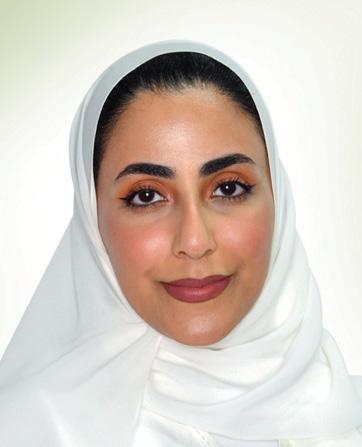
In recent years, the emergence of digital platforms has o ered significant potential to power the circular economy, creating a closed-loop system where resources are used for as long as possible through recycling, refurbishment, and reuse. Currently, circular platforms comprise 24 per cent of the circular economy, valued at $408bn. This indicates tremendous growth potential for circular platforms in the coming decade.
It also means that businesses and organisations embracing the circular economy and leveraging circular platforms benefit significantly from this growth. This intersection of circular economy and platforms presents a new frontier for business models that aim to make sustainability profitable. It clearly indicates that the circular economy represent a significant economic opportunity for those who are vocal and active in driving sustainability.
At the 2023 MIT Platform Strategy Summit, I had the opportunity to be part of a panel on ‘Powering the Circular Economy with Platform Business Models’ where we discussed how platform organisations are supporting the concept of the circular economy and reducing waste by creating a closed-loop system where products and materials are continually cycled through the economy.
CIRCULARITY ON DIGITAL PLATFORMS
Digital platforms have become crucial players in driving the circular economy forward. They leverage lower transaction costs, network e ects, and improved discovery engines, which can accelerate the adoption of circular practices.
Additionally, artificial intelligence (AI) capabilities can be integrated into these platforms to optimise resource allocation, match supply and demand e ciently, and enable predictive maintenance of products. AI technology o ers valuable opportu-
PRESENTLY, CIRCULAR PLATFORMS MAKE UP 24 PER CENT OF THE CIRCULAR ECONOMY, WHICH IS VALUED AT
gulfbusiness.com 14 September 2023
ILLUSTRATION: GETTY IMAGES/ MARYNA TERLETSKA $408BN
Maryam Al Mansoori, general manager at Rebound
nities to enhance the circular economy potential of digital platforms.
To fully harness the potential of circularity on digital platforms, it is essential to have access to accurate and extensive data about material use. Aggregating and analysing such data can help identify opportunities for circularity and inform decision-making for platform businesses.
Organisations like the Ellen MacArthur Foundation have played a pivotal role in investing in data about material usage, facilitating informed choices for businesses aiming to embrace circular practices. This data-driven approach can drive the adoption of circular business models on platforms.
KEY CHALLENGES
While the potential benefits of circular economy models on platforms are significant, various challenges must be addressed to ensure successful adoption. One key challenge is the limited availability of recycled materials, which hampers the ability of big brands to meet their sustainability commitments. Recycled materials are often scarce due to collectors and traders prioritising profit over maintaining the quality of these materials. To mitigate this situation, digital marketplaces such as Rebound have emerged. It aims to bring quality assurance, transparency, trust, and regulatory compliance to the recycled plastics market, providing a reliable platform to navigate the complexities of the recycled materials industry.
Supporting and encouraging existing platforms to adopt circular practices is another critical step. Smaller companies, in particular, can flexibly align their practices with their values and prioritise sustainable choices.
Platforms and online marketplaces have the potential to disrupt traditional retail models by offering direct relationships between customers and platforms, enhancing customer experiences and enabling sustainable consumption patterns.
Encouraging localised platforms that promote repair services, like Goodwill, can further extend the lifespan of products and reduce waste. Additionally, emerging platforms connecting consumers with local repair services can address barriers to repair, such as lack of knowledge and trust, presenting opportunities in fragmented repair markets.
ENCOURAGING CHANGE
Governments and corporate entities play a vital role in driving sustainable practices and encouraging circular business models on platforms. Education and public awareness initiatives are crucial for promoting circular practices and fostering a broader understanding of sustainability issues.
Platforms can act as catalysts for mindset change by driving sustainable practices within the private sector through collaboration and partnerships with governments.
Making a larger-scale impact requires a strategic focus on sustainable circular platforms. While the prices of recycled materials may be higher than virgin materials, investing in recycled materials today can result in substantial cost savings in the future.
Governments and companies should actively invest in circular platform models to support the growth and sustainability of the circular economy, recognising the long-term benefits that circular practices can bring to society and the environment.
Digital platforms have opened up significant opportunities for powering the circular economy by making sustainable practices profitable. By leveraging the potential of circularitxy on platforms, businesses can improve resource efficiency, reduce waste, and foster sustainable consumption patterns. Overcoming challenges such as limited access to recycled materials and consumer barriers to repair services requires collaborative efforts between governments, companies, and platform providers.
Embracing circular economy models on platforms can drive innovation, economic opportunities, job creation, and environmental sustainability. The United Nations (UN) is actively addressing the concept of ‘green jobs’ that contribute to preserving or restoring environmental quality, supporting sustainable development and combatting climate change.
To design and empower platforms for these jobs, individuals must develop specific skill sets related to renewable energy, sustainable practices, and environmental conservation. Through collaboration and innovation, we can accelerate upskilling and create a more sustainable future that integrates circular techniques into the fabric of our economy, benefitting both businesses and society.
gulfbusiness.com September 2023 15 The Brief / Sustainability
“RECYCLED MATERIALS ARE OFTEN SCARCE DUE TO COLLECTORS AND TRADERS PRIORITISING PROFIT OVER MAINTAINING THE QUALITY OF THESE MATERIALS”
THE CIRCULAR ECONOMY IS EXPECTED TO REACH $1.49TN BY 2030, WITH CIRCULAR PLATFORMS COMPRISING 58 PER CENT OF IT
Paving the way for a sustainable future

and outcomes; redefining climate action as an opportunity, not a risk; and reorienting public-private partnerships to achieve results in the near and long term.
Simply put, the UAE is the first to run COP like a business, which means its operationalising commitments, which lead to measurable and accountable metrics, key performance indicators and targets.
The UAE sees decarbonisation and the energy transition as a competitive advantage; it’s an opportunity for its people, industries and economy. Technology and innovation are fuelling this vision, backed by investments to enable its fruition.
ROGER MARTELLA, CHIEF SUSTAINABILITY OFFICER, GE AND GE VERNOVA, TALKS ABOUT THE UAE AS A GLOBAL DRIVER OF SUSTAINABILITY INITIATIVES AND EXPLAINS HOW PUBLICPRIVATE SECTOR PARTNERSHIPS CAN DRIVE DECARBONISATION
BY NEESHA SALIAN
Roger Martella, group vice president, chief sustainability officer - GE and GE Vernova, and the global head of Engagement, Government Affairs and Policy, GE Vernova, is a strong advocate of climate action. During a recent conversation with Gulf Business, Martella shared how the UAE is setting an example in climate innovation and investment. He also talked about GE’s role in supporting decarbonisation and electrification, and why publicprivate sector collaboration is essential to climate progress. Here are excerpts from the interview:
You have expressed your admiration for the UAE’s efforts in driving transformative climate action, referring to it as the “UAE Effect”. Tell us more about it.
The global spotlight is on the UAE, and a key reason for it is that the country is hosting
the 2023 United Nations Climate Change Conference (COP28) later this year. But there’s more to it: the UAE is rapidly emerging as a leading global influencer of climate change, decarbonisation and energy transition. Historically, the US and EU have led this space and will continue to do so, but I see the UAE rising to that level, particularly in the Middle East and Africa.
As it works towards COP28 and its ambitious net zero goals, the country and its leaders’ actions herald a new direction that will have a lasting global impact, just as the Paris Agreement has since 2015.
I refer to this as the “UAE Effect”– a phenomenon where the country is demonstrating leadership, investment and initiative in driving decarbonisation and innovation. With the UAE aiming to host the most consequential COP since Paris, the momentum is building towards a move from “policy” talk to “business” action. We are seeing a realigned direction that focuses on results
I admire the UAE for its commitment to youth and diversity. I see that represented when I visit its schools, universities and organisations. I see many women in leadership positions, both in the public and private sectors, and at COP28. The UAE is bringing together the best talent from all over the world. So, I appreciate how the country is promoting a culture of excellence across all sectors.
How is GE supporting the UAE’s focus on decarbonisation and energy transition? One of the things about GE and the UAE is the close alignment between how we approach these issues. The country’s leadership and GE both believe that solving climate change, enabling decarbonisation, and driving the energy transition involves innovation and technology. The UAE is invested in innovating the required technology, and we are the world’s leading company in the innovation of energy equipment. We also help produce 30 per cent of the world’s energy in 170 countries.
We have the most diverse portfolio of energy-producing equipment, from renewable energy to the world’s most efficient gas turbines to physical and digital grid solutions, as well as breakthrough technologies such as small modular reactors, hydrogen as a fuel, and carbon capture. And these are the technologies that we need to innovate and employ to solve climate change. So we have this opportunity to strengthen our incredible partnership with the UAE, where we don’t want to just be installing technology in the UAE; we also want to collaborate with it on the demonstration of technologies and the development of breakthrough
gulfbusiness.com 16 September 2023 INTERVIEW
Q
THE
BRIEF
technologies. We ultimately want to help the UAE build supply chains, so that the technology can be manufactured in the UAE and then exported to other countries in the region. This has benefits both from a workforce and economic perspective. It also advances decarbonisation.
We also regularly engage with the leaders on a daily basis in the UAE and the COP28 presidency to lend our support and expertise in these areas.
In terms of regulations, do you think we’re getting there globally?
We certainly are in a transformative era where things are moving in a much stronger direction. The momentum is much better. Historically, the approach to climate change regulation has been kind of a ‘stick’ or authoritative approach. And there still is some of that. What we saw last year in the US with the Inflation Reduction Act (IRA) was the first climate change law in the US. It used the ‘carrot’ approach, incentivising companies to do what they do best: innovate and deploy technology. We’re already seeing the dividends of that pay off very rapidly in the US in less than a year. At GE, we have announced new manufacturing for clean energy technology, involving thousands of jobs because of the policies linked to the act. We’re seeing more countries adopt these
incentive-based policies that are attractive to companies because companies love certainty. Certainty enables us to go to other places and build the workforce, factories and supply chain, and motivate more of the world to invest in the clean energy supply chain.
On a global scale, do you see us moving in the right direction, considering the urgency for decarbonisation?
I’ve been in this space my whole career, and I’ve been one of those people who’ve been critical – and often frustrated – because we’ve done a lot of talking about the issue (for decades) and not followed it up with enough action.

However, I have to credit the EU and US for their efforts toward decarbonisation. On an optimistic note, the past 18 months have left me hopeful – and excited. It’s the early days, but I see decarbonisation efforts gaining traction. In fact, I think the UAE is going to greatly accelerate the transition this year. I also believe it’s going to be the next generation, who will pick up the pace further as we go forward. What I want to do is to make sure that GE and our partners like the UAE, support these future leaders. I hope we can prime them well for the task – by creating momentum towards action, setting the right policies, incentives and framework. To paint a realistic picture,
it’s going to involve implementation over decades, but I am confident that we will continue to advance the breakthrough technologies that are needed to accelerate the transition to a sustainable future.
Where (in terms of sectors) will we see the fastest adoption?
We’ll see the most change in the energy sector, both because it’s a significant contributor of greenhouse gases and the least difficult to decarbonise. The energy sector will pave the way to help other sectors decarbonise. These sectors will rely on electrification to reduce emissions.
We’ll see transportation come next, particularly with the impact seen in segments such as passenger cars and lightduty trucks. Aviation, which is led by its own net zero goals, is also being impacted, with the growing focus on sustainable aviation fuels. There’s an increasing emphasis on heavy-emitting industrial sectors such as construction and other industrial applications, with electrification driving the change here as well.
At the grassroots, how people address energy efficiency and their carbon footprint – in their lifestyles, how they commute, etc – will also be a key factor. There are many opportunities – in residential and office building designs and transportation infrastructure – that can be leveraged to help us decarbonise. A lot of that is already happening, but I think we will see it advance in a more coordinated way in the near term.
Tell us about GE’s focus on electrification.


There are 700 million people in the world who lack access to reliable, affordable and sustainable electricity.
As a 130-year-old company in this space, we believe strongly that we must improve the quality of life for everybody in the world; everyone has a right to live a prosperous and comfortable life. And so, as we look to decarbonise, we also want to make sure we improve access to electricity for people in communities across the world. GE is as committed to electrification as it is to decarbonisation. These are the pillars of a sustainable world.
gulfbusiness.com September 2023 17
PICS: SUPPLIED
I ADMIRE THE UAE FOR ITS COMMITMENT TO YOUTH AND DIVERSITY. I SEE THAT REPRESENTED WHEN I VISIT ITS SCHOOLS, UNIVERSITIES AND ORGANISATIONS. I SEE MANY WOMEN IN LEADERSHIP POSITIONS, BOTH IN THE PUBLIC AND PRIVATE SECTORS, AND AT COP28”
Walking the talk
TAREK SULTAN, VICE CHAIRMAN OF AGILITY, SHINES THE SPOTLIGHT ON SUSTAINABILITY AND ITS IMPACT ON THE LOGISTICS SECTOR, AND HOW THE COMPANY IS SUPPORTING SMES AND FAIR TRADE
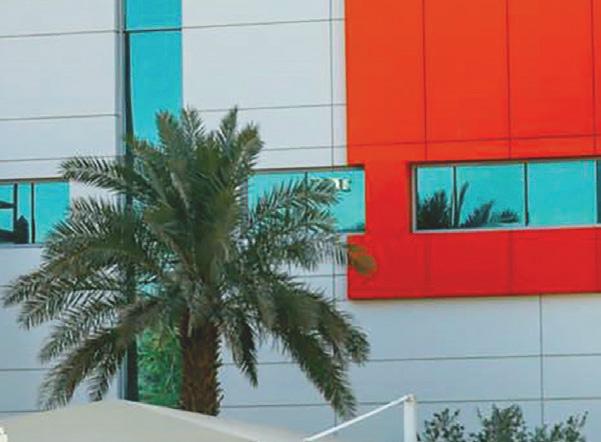 BY NEESHA SALIAN
BY NEESHA SALIAN
Global supply chain services, aviation and infrastructure company Agility achieved a number of milestones in 2022. The Kuwait-headquartered group, which employs over 45,000 people across six continents, acquired Menzies and merged it with NAS, creating the world’s largest aviation services company by countries served. The company operates in about 70 countries across six continents.
Last year, the group’s Tristar unit acquired a majority stake in HPG Storage, which meant a major expansion of its fuel storage capacity and distribution capability in 29 countries. In 2022, it
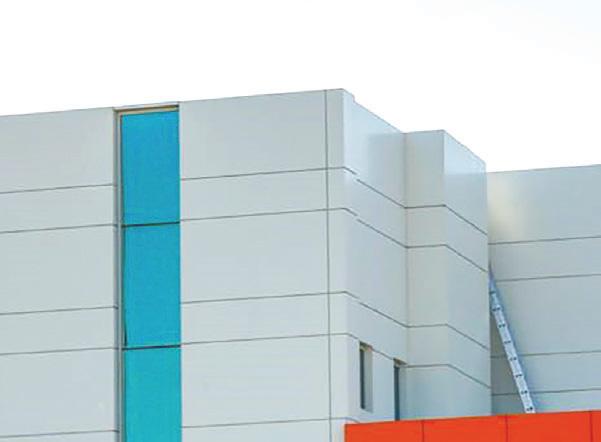

also announced a $163m investment in building a new logistics park outside of Jeddah, Saudia Arabia, alongside existing warehousing complexes in Riyadh and Dammam.
In H1 2023, the company’s net profit rose 2.3 per cent reaching KWD29.48m.
The group’s vice chairman, Tarek Sultan, who is also a key member of the World Trade Organisation’s Business Advisory Group, shares the company’s sustainability goals, key global trends impacting the logistics and supply chain sector and the importance of supporting SMEs and fair trade, which he strongly advocates.
Here are excerpts from the interview.
QWhat is the key strategy driving Agility’s growth, expansion, and diversification?
Agility is a di erent business than it was two years ago. Today, we have two parts to our business.
First, the businesses we own and operate. This includes the world’s largest aviation services company (Menzies Aviation), a global fuel logistics business (Tristar), a logistics parks developer and operator in the GCC, Africa, and South Asia, and customs digitisation, remote-site services, and digital logistics businesses.
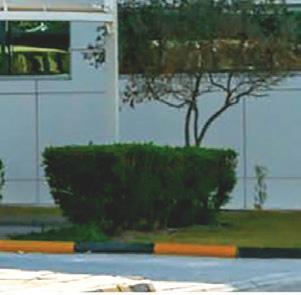

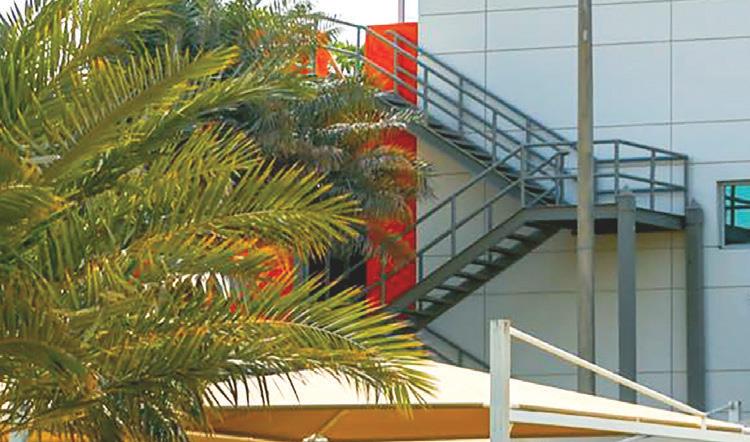
Second, our investments; minority stakes in listed and non-listed companies. This includes being the second largest shareholder in DSV, the world’s third-largest logistics and freight forwarding company, along with a growing number of venture investments in technology companies innovating in clean transport, alternative energy, e-commerce enablement, and more.
Our focus is on accelerating growth across our operating businesses, with each business following its own roadmap. Agility has a strong track record of building and scaling both global and emerging market businesses, deep expertise in supply chain services, and a commitment to strengthen the building blocks of global trade.
What are the key trends influencing the supply chain, logistics, and transportation industry?
The forces reshaping supply chains are profound. They include:
Geopolitics – US-China friction, Brexit, the crisis in Ukraine and parts of Africa and the Middle East – is giving rise to renewed trade protectionism and a desire to shield supply chains by moving or diversifying production.
Sustainability – including both regulatory and technological changes – is a key factor for the industry. Broadening recognition of the dangers posed by climate change is having both negative and positive e ects on supply chains. On the one hand, we’re experiencing climate- and weather-related events that are enormously disruptive and, in the most extreme cases, threatening lives as well as trade and commercial activity. On the other hand, those threats are driving a consensus for change that will revolutionise energy production, transportation, and
gulfbusiness.com 18 September 2023 INTERVIEW
THE BRIEF
PIC: SUPPLIED
building materials. They are forcing us to rethink our use of precious resources such as water, and to make changes in what and how much we waste. Hopefully, we are on a path toward a cleaner, safer planet.
Consumption patterns and consumer preferences have been permanently reshaped by both technology and the pandemic. That’s why we’ll see continued acceleration of cross-border e-commerce.
Lastly, the world’s continued digital transformation, the proliferation of data, and the use of artificial intelligence (AI) are going to change the nature of work, product-development cycles, production –virtually every element of the supply chain.
What are the steps that can be taken to support fair trade, SMEs and women-led businesses?
We believe that in order to make trade more fair and open to smaller businesses, women-led businesses and enterprises rooted in emerging markets, it’s important to build the ecosystem for more inclusive trade – including investing in infrastructure and technology.
Agility supports this vision through its businesses. Our Shipa businesses were built to serve small and medium-sized companies that needed tools to manage their own logistics. The company’s digital tools give these businesses virtual scale and level the playing field for them when they compete with larger competitors.
The same SME focus has guided our investments in e-commerce enablement; companies such as Zid and ShipRocket help smaller enterprises build online businesses and grow their online sales. And e-commerce often creates new opportunities for women as well, including in the MENA region, where the World Economic Forum says one out of three digital businesses are founded by a woman.
Our Agility Logistics Parks (ALP) have developed small, affordable, move-inready units for small, local companies that need world-class industrial infrastructure
to process, assemble, store and ship. At Reem Mall in Abu Dhabi, we’re setting aside space for smaller companies, as well. In Kuwait, our home base, we have mentored smaller companies, and built the infrastructure and network that helps them bring their ideas and products to market.
We’re proud of the fact that Agility itself has emerging market roots. Our business started in Kuwait, and we’ve built ourselves into a global company that now operates in six continents.
How would you describe responsible leadership and is Agility reflecting these values?
We started almost 20 years ago, so nothing about our approach to sustainability – our ‘term’ for responsible leadership –is new. The three areas that we focused on most in those early years were fair labour, community contributions, and humanitarian response.
At a time when companies in the Middle East and Africa were under intense scrutiny on labour issues, we were developing standards, training, monitoring programmes, and practices intended to safeguard workers’ rights. We were deepening our involvement in the communities where we operate by making targeted contributions in training and education. And we were part of a small number of global companies responding to natural disasters and conflict with expertise and assets intended to speed the delivery of humanitarian assistance. Today, we remain focused on those areas, but we have also increased our investment in innovations aimed at addressing climate change and other ESG issues.
Tell us about Agility’s sustainability targets and the progress made on them.
Our biggest business, Menzies Aviation, has
set science-based targets to achieve net zero across all three scopes by 2045. This includes taking an electricfirst approach to the procurement of new group support equipment, which includes a lot of the ground vehicles you would see at airports. Menzies is also contributing to industry partnerships to help accelerate the adoption of sustainable aviation fuels and push them to 10 per cent of global fuel supply by 2030 (currently 1 per cent).
The Tristar liquid logistics business is looking to be net zero in line with the UAE’s 2050 target. It expects to introduce biodiesel or alternative sustainable fuels in 2023, and to commission its first hybrid-fuelled coastal barge in 2024. Tristar is also a founding member of the First Movers Coalition, an initiative to decarbonise heavy industry. One of the coalition’s goals is to have at least 5 per cent of deep-sea shipping powered by zero-emissions fuels by 2030.

The ALP business is building new warehousing complexes with sustainability features. The warehouse in Riyadh was the first facility in the GCC to be EDGE Advanced certified, which means it is at least 40 per cent more energy efficient than others in the market. Further EDGE certification for Agility facilities is in progress in India and Côte d’Ivoire.
In Kuwait, a new planned project features a cooling system that aims to reduce electricity consumption from air conditioning by 40 per cent and to implement 100 per cent treatment and reuse of wastewater for cooling and irrigation.
Any advice for young leaders in the industry?
My advice would be to look over the horizon constantly, and always be willing and eager to learn. Leaders should be the most curious people in the room, and the most willing to try new ideas. Move fast. Stay close to technology changes, and don’t lose sight of people – those on your team and those you serve.
gulfbusiness.com September 2023 19
CONSUMPTION PATTERNS AND CONSUMER PREFERENCES HAVE BEEN PERMANENTLY RESHAPED BY BOTH TECHNOLOGY AND THE PANDEMIC. THAT’S WHY WE’LL SEE CONTINUED ACCELERATION OF CROSS-BORDER E-COMMERCE”
Driving financial independence
SAID ZATER, GROUP CEO OF CONTACT FINANCIAL HOLDING, SHARES THE EGYPT-BASED GROUP’S EFFORTS TO SERVE AND BOLSTER THE COUNTRY’S GROWING NON-BANK CREDIT MARKET
 BY MARISHA SINGH
BY MARISHA SINGH
QWhat are the trends boosting the region’s consumer nonbank credit market today?

The consumer non-bank credit market in the Middle East, particularly Egypt, is a rapidly changing landscape. While there are several trends at play, I would like to highlight the top three. First, the region has seen an increased demand for accessible and personalised financial solutions. This demand is being fuelled by an up-and-coming youth demographic combined with urbanisation. Egypt is the most populous country in the
Arab world. Its demographic trends, characterised by a rising youth population, are the drivers of demand for accessible credit solutions. Additionally, technological advancements have ushered in a new era. Digital platforms have overhauled the way financial services are delivered. This aligns with the emergence of innovative payment systems and fintech disruptors that cater to the preferences of digitally savvy consumers.
Another significant trend is the growing emphasis on sustainability and an
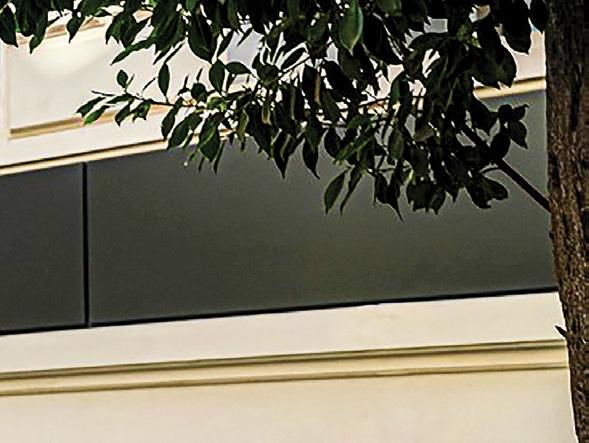
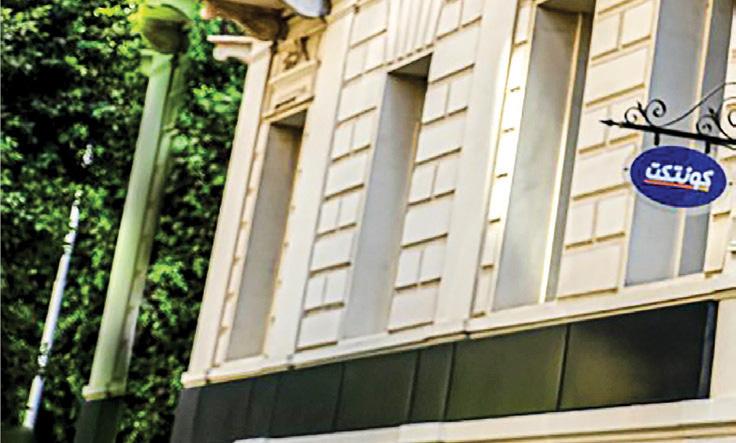


environmentally conscious investor segment. This is pushing market players to o er green finance products and socially responsible lending solutions. Environmental considerations and sustainability will increasingly shape investment preferences and contribute to the growth of green finance. Additionally, regulatory reforms will play a pivotal role in defining the sector’s framework and ensuring consumer protection. These factors combined are likely to determine the trajectory of the region as well as Egypt’s debt capital market.
What role does the group play in Egypt’s credit market?

As a leader in the non-bank financial services sector in the country, Contact plays a vital role in shaping and driving the dynamics of Egypt’s credit market. Since its inception in 2001, the company has been a catalyst for change, redefining how individuals and businesses access financial services. As the first licensee of consumer finance in Egypt, Contact has played a pivotal role in both advocating for and contributing to the dra ting of the consumer finance law — a significant legislative milestone in the Egyptian financial


gulfbusiness.com 20 September 2023 INTERVIEW
THE BRIEF PICS: SUPPLIED
landscape. Operating under the regulatory supervision of the Financial Regulatory Authority, the company continues to expand credit accessibility and reshape the credit market landscape.
Tell us about your offerings.
Contact provides a comprehensive suite of financial solutions designed to cater to the diverse requirements of its clients. Its expansive portfolio covers a wide array of sectors, underscoring its commitment to streamlining financial processes and adapting to the evolving demands of Egypt’s credit market.
In its financing division, Contact offers a range of consumer financing choices for both new and used vehicles, serving both passenger and commercial segments (trucks and other similar vehicles). Moreover, consumer durables financing is facilitated through Contact Credit, while Contact Mortgages offers mortgage solutions to facilitate access to homeownership. Addressing commercial needs, Contact Leasing and Contact Factoring provide customised financing solutions. The insurance segment is robust, featuring Sarwa Insurance and Sarwa Life Insurance, which offer comprehensive coverage for individuals and families. Additionally, Contact Insurance Brokerage enhances the insurance spectrum, making the company a comprehensive partner in the financial well-being of individuals and businesses.
Contact’s innovation also extends to digital financial services through Contact Creditech and Contact Pay, contributing to a holistic financial ecosystem. The company’s corporate financing activities encompass securitsation, structured debt and debt investment management. Additional offerings include specialised products such as watercraft finance, education finance, maintenance finance, home finishing finance, wedding finance, club membership finance, motorcycle finance, and furniture finance.
How has the group navigated Egypt’s fluctuating economic conditions?
Egypt has recently been buffeted by a complex mix of economic headwinds. These include currency market fluctuations, inflation and logistics-related challenges. Despite these prevailing factors, both our financing and insurance divisions have exhibited remarkable growth rates.
The performance is a reflection of our resilience which can be attributed to robust mitigation strategies, innovative product offerings, and an agile business model that can swiftly adapt to changing economic circumstances.
Tell us about the group’s performance in H1 2023.
In the first half of 2023, Contact Financial Holding exhibited strong operational and financial growth despite facing challenging macroeconomic conditions. Our operating income within the financing and insurance divisions recorded year-on-year growth rates of 37 per cent and 48 per cent, respectively, during this period.
The net income from financing experienced a remarkable surge of 21 per cent in H1 2023 and 71 per cent in Q2 2023. It is worth highlighting that Contact Financial Holding holds a substantial market share of 35 per cent in Egypt’s consumer finance sector.
How has the group leveraged digital transformation?
We have embraced innovation to ensure our continued relevance in this changing financial landscape. Our revamped ContactNow app offers services such as instant credit, account management, and bill settlement. Notably, we’ve witnessed a 65 per cent yearon-year increase in instant credit requests during the six-month period, highlighting the success of our digital strategy. Our innovative approach extends to digital financial services as well, with Contact Creditech and Contact Pay contributing to a holistic financial ecosystem.
How has your leadership impacted the firm and Egypt’s credit market?
Through my position at Contact Financial Holding and role as the chairman of the Egyptian Federation for Consumer Finance, I’ve worked towards bringing about significant transformation for both the firm and Egypt’s credit market.
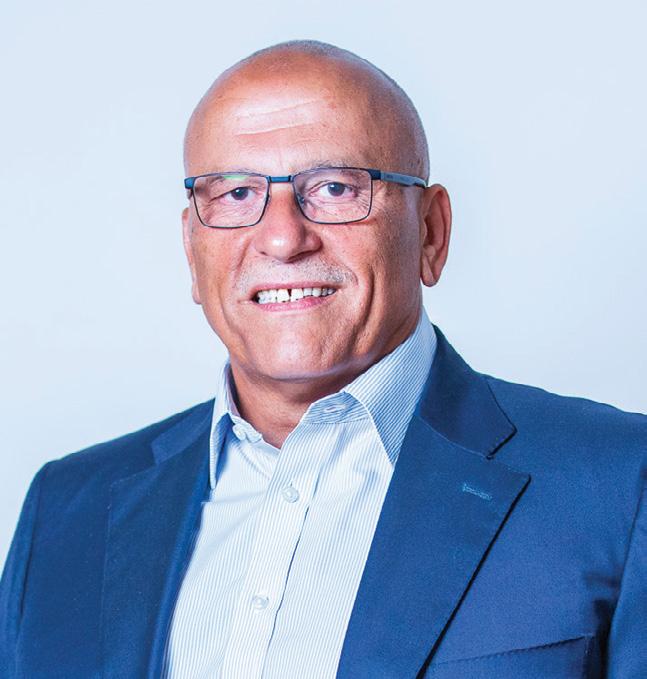
As a group, we have achieved substantial growth, expanding our service portfolio, and playing a pivotal role in shaping Egypt’s credit landscape for the better. Our efforts have always been to raise awareness among customers and peers about the evolving potential within the financial sector.
What is your outlook for the coming year?
A pivotal facet of our forward-looking strategy is our dedicated pursuit of green finance. Our introduction of the ‘Green Finance’ product stands as a testament to our resolute dedication to sustainable development.
This innovative product encompasses a range of offerings, including financing for solar energy equipment – an essential component of renewable energy adoption. Moreover, our green finance initiative extends to supporting specific agricultural equipment such as greenhouses, irrigation systems, and advanced agricultural machinery. By doing so, we are not only promoting the growth of vital sectors but also aligning ourselves with the global momentum towards eco-friendly practices.
This emphasis on green products not only signifies our adaptability to evolving market needs but also reinforces our role as a catalyst for positive transformation in Egypt’s financial landscape.
gulfbusiness.com September 2023 21
IN THE FIRST HALF OF 2023, CONTACT FINANCIAL HOLDING EXHIBITED STRONG OPERATIONAL AND FINANCIAL GROWTH DESPITE FACING CHALLENGING MACROECONOMIC CONDITIONS”
Alan’s Corner










 Alan O’Neill Managing director of Kara, change consultant and speaker
Alan O’Neill Managing director of Kara, change consultant and speaker










Thefirst 100 days
New leaders use the fi rst 100 days in offi ce to listen to their teams, formulate an informed strategy, gain key stakeholder buy-in, and then roll out the strategy
The fourth quarter of the year is when many organisations cra t a new strategy and sometimes plan changes to the structure. It’s also a time when many new hires prepare to join a company with a vision, dreams and plans to change all before them. If you are one of those people, how do you make the right impact? And how quickly should you be seen to be making changes?
It was Franklin D Roosevelt’s presidency in 1933 that gave us the reference to the ‘first 100 days’. In his inaugural address, Roosevelt announced that he would move with unprecedented speed to address the problems facing the nation. They were di cult times that demanded urgent action.


Today, the first 100 days concept has been adapted for modern businesses. Because new leaders don’t always have the luxury of Roosevelt’s foresight to be able to plan before they even start, the first 100 days is o ten seen as a honeymoon period, used to get a good grip on priorities.


I believe it actually takes more than a year in reality. Every industry has its seasonal cycles and a new leader has to experience all of those in a year to really understand the business. But of course, you can’t wait a year to make an impact. It is typically expected that new leaders are seen to be making decisions and adding value a ter the first 100 days.
Don’t fall into the trap of making changes too quickly. Yet in the meantime, there are o ten urgent and obvious decisions to be taken early on. Now there’s a conundrum. So, if you land in a job either as a new hire or through promotion, here are some tips and watchouts for your first 100 days.





LEADERSHIP LESSONS
01.
Get to know your own team and your boss. Work out who is who. Organisation charts are a starting point, but they don’t always reflect the real authority and decision-making lines. Be impartial as you listen to stories and views. If you go along with

gulfbusiness.com 22 September 2023
ILLUSTRATION: GETTY IMAGES/ JAUHARI1
a convincing person too early, you may have to change your mind later.
02.
Learn the product range and what makes the company unique in its competitive space. Which are the best sellers, worst sellers, the big margin and the tight margin products? In studying the numbers, get a handle on trends. Which are the ones in growth and which are in decline? How much newness is there or is there an over-reliance on an ageing portfolio?
03.
Who are your best customers? How do they place orders? Do you have access to customer feedback? To what extent has digitisation been embraced?
04.
Understand production and the supply chain. Where are the bottlenecks? How much change has there been since the pandemic and recent big increases in sea-going container transport?
05.
Get a feel for the rhythm of the business and the corporate culture that sets the way things get done. Is the business customer-focused? Do colleagues show each other su cient respect? Do individuals take personal ownership of their actions? Does it move at pace?
06.
Take time to assess the big picture. What’s going on in the wider marketplace that will present opportunities and threats to your business? Who
are your main competitors and what are they doing that will impact on your business?
07.
Even if you are not directly involved in the commercial side of the business, take time to understand customers, products and supply chain. A ter all, that’s what will occupy much of the conversation in the boardroom.
08.
For all of the above, what are the main risks to the business and your function in particular?
Then..
09.
Identify and make some quick-win decisions. Rather than waiting till day 101, are there some opportunities for you to make an impact with some ‘wins’ that show that you mean action? Try to find wins across your stakeholder mix. Bear in mind that various people are watching you. You can’t please them all. My advice is to find quick wins across all key pillars of the business mix, i.e. product, people, place and internal controls.
THE LAST WORD
As crazy as this sounds, plan your legacy already. In other words, what do you want people to say about you in the future when you eventually leave your new employer? Be the leader you aspire to be and work towards that legacy now.
While I know it’s a cliché, remember you have two ears and one mouth, so try to use them in that proportion. Here is an easy tool to help you in your quest for building a picture. Remember Rudyard Kipling’s rhyme: “I keep six honest servingmen. They taught me all I knew. Their names are What and Why and When and How and Where and Who”. Use these ‘Ws’ to ask the right questions, and don’t make judgments too soon.
gulfbusiness.com September 2023 23
“TODAY, THE FIRST 100 DAYS CONCEPT HAS BEEN ADAPTED FOR MODERN BUSINESSES. BECAUSE NEW LEADERS DON’T ALWAYS HAVE THE LUXURY OF ROOSEVELT’S FORESIGHT TO BE ABLE TO PLAN BEFORE THEY EVEN START, THE FIRST 100 DAYS IS OFTEN SEEN AS A HONEYMOON PERIOD, USED TO GET A GOOD GRIP ON PRIORITIES”
The Brief / Alan’s Corner
“I KEEP SIX HONEST SERVING-MEN. THEY TAUGHT ME ALL I KNEW. THEIR NAMES ARE WHAT AND WHY AND WHEN AND HOW AND WHERE AND WHO ”
—Rudyard Kipling
Time for a break
Completing tasks more slowly; having to re-read a paragraph more often than normal
Gravitating towards trivial tasks, such as checking email and social feeds

To overcome this, I have a set of activities to help me take a break from my work. These involve going for a short walk, exercising, or listening to an audiobook or podcast.
Here are some other suggestions that you might also want to try:
Taking a brisk walk. It’s better if it’s in a green area
When I start to get distracted, struggle to focus and get sidetracked by trivial matters, it’s a sure sign I am short of sleep. I often slip into coasting, not thinking about what I should be doing. Some of the other signs that indicate my energy levels are low are the following:
Regular task switching; struggling to concentrate Intentions falling by the wayside; becoming more disorganised
Listening to or reading an enjoyable story
Chatting with some friends
Meditating
Listening to some relaxing music
Serving others, whether they are family members or people in need
Spending time on a craft, such as woodwork, painting, or photography
How often you need to take a break will vary on
gulfbusiness.com 24 September 2023
Taking regular breaks can reduce your stress levels and help you re-focus at work
ILLUSTRATION: GETTY IMAGES/ WE ARE COMMENT
several factors, including what type of person you are: outgoing or more introverted.
Research (based on a Tork survey) points to significant advantages acquired from taking regular breaks as well as a lunch break. The benefits are:
IMPROVED PRODUCTIVITY: Breaks can boost productivity by resetting your focus and energy levels when you step away from work. A lunch break can also help you avoid the afternoon energy slump, so long as you do not overeat.
INCREASED WELLBEING: Taking a break from work can help reduce stress, especially if you combine it with a healthy lunch and a walk.
SURGE IN CREATIVITY: Stepping away from work can bring a fresh perspective. If you are looking at the same thing the whole day, it can become difficult to make progress. A break stimulates more creative thinking.
HEALTHIER HABITS: Breaks can allow for healthier eating habits, exercise, meditation and self-care.
HERE’S WHAT YOU CAN DO…
If you can build in a 10 to 15-minute break every hour, or a 20 to 30-minute break every 90 minutes, then you will help yourself not become distracted. Our energy levels, much like REM sleep, operate in 90-minute intervals, and taking a break after this period aligns with our bodily rhythms.
Along with ensuring you are getting sufficient sleep every night and are maintaining the right energy levels throughout the day, there are a couple of other things you can pay attention to that will
STEPPING AWAY FROM WORK CAN BRING A FRESH PERSPECTIVE. If you are looking at the same thing the whole day, it can become difficult to make progress.
Rehan Khan, author and founder and CEO of Improve Executive Focus
help you become less distracted. These are related to what you eat, what you drink and how much exercise you do.
EAT MORE UNPROCESSED FOOD: It takes longer for the body to digest unprocessed food. The body converts whatever we eat into glucose – a sugar our body and brain burn for energy.
Unprocessed food takes longer to digest as our body switches it to glucose at a much slower rate, giving us a steady drip of energy throughout the day. Processed food gets converted into glucose quickly, but it does not provide us with as much energy over a longer period of time.
CAFFEINE AND WATER: Caffeine prevents your brain from absorbing a chemical called adenosine, which normally tells your body it’s tired. It takes about 8-14 hours after consuming caffeine for your body to metabolise it out of your system. Whilst travelling overseas on business trips, I’ve often drunk coffee mid-morning when I have a nighttime flight, so that as the effect starts to wear off, I’m ready to sleep on the airplane. Or if I’ve taken an overnight flight and landed the next day and had to go to work, I’ve taken a coffee shortly after landing so that my body can last till early evening, when I head straight to bed and crash for a long night’s sleep. I would also suggest that you drink water first thing in the morning. There are a number of studies on the benefits of drinking water. Some suggest that it fires up our metabolism in the morning.
Another study found that people who drank water before meals lost weight because water partly fills the stomach.
Water also helps us think more clearly and reduces the risk of certain diseases and ailments.
EXERCISE: When we work out, especially with aerobic exercise, our brain releases a number of chemicals that allow us to fight stress. We also increase the blood flow to the brain, which is positive for our mental performance – we feel less tired and have more focus.
When we exercise, our brain releases BDNF (brain-derived neurotrophic factor), a chemical that helps create new brain cells – a lot of this growth happens in the hippocampus, the part of your brain responsible for memory. Exercise can even boost mood and build cells in brain regions damaged by depression.
There are several measures we can take to prevent ourselves from becoming distracted. All of these are well within our capacity to perform but we will only do it if we assign importance to it.
gulfbusiness.com September 2023 25 The Brief / Productivity
“BREAKS CAN BOOST PRODUCTIVITY BY RESETTING YOUR FOCUS AND ENERGY LEVELS WHEN YOU STEP AWAY FROM WORK. A LUNCH BREAK CAN ALSO HELP YOU AVOID THE AFTERNOON ENERGY SLUMP, SO LONG AS YOU DO NOT OVEREAT”
IT TAKES ABOUT 8-14 HOURS AFTER CONSUMING CAFFEINE FOR YOUR BODY TO METABOLISE IT OUT OF YOUR SYSTEM
IS AI A MAJOR ENABLER FOR YOUR BUSINESS?
A RECENT SURVEY TARGETING IT LEADERS SHOWED THAT ORGANISATIONS ARE INVESTING MORE HEAVILY IN ESTABLISHED DATA SCIENCE PLATFORMS TO BUILD AND MAINTAIN AI MODELS
Q: In the face of today’s economic volatility, what are THE TOP THREE BUSINESS GOALS your company is looking to achieve regarding AI over the next five years?




TO ACCELERATE BUSINESS GROWTH 64% 56% 28% 30% 18%
TO CUT COSTS 50% 54%
(UAE) SOURCE : DATAIKU STUDY (SURVEY OF OVER 700 IT LEADERS ACROSS FIVE COUNTRIES IN EMEA )
(UAE)






The Brief / Infographics gulfbusiness.com 26 September 2023
(UAE) 66% 32%
Q: WHAT IS THE TOP REASON your organisation originally adopted AI? TO STAY AHEAD OF THE COMPETITION 2% INNOVATION COMPETITIVE ADVANTAGE TIME SAVING COST REDUCTION INCREASED REVENUE IMPROVED CUSTOMER EXPERIENCE RISK MANAGEMENT
Q: ARE YOU CURRENTLY ABLE TO MEASURE THE ROI OF YOUR AI INVESTMENT? YES NO 94% 6%
The UAE is an early adopter of AI. It’s also the first country to appoint a minister of state to oversee its development
Q: Can business users ACCESS AND WORK with your data and AI to attain your business goals?

92%





YES, 100%
OUR BUSINESS USERS HAVE SOME BASIC, LIMITED ACCESS TO OUR DATA AND AI FOR ATTAINING OUR BUSINESS GOALS
NO
DON’T KNOW
of UAE respondents said they were using LOW-CODE OR NO-CODE development platforms to make AI more accessible to business users and help automate and improve daily decisionmaking processes




Q: HOW MUCH OF YOUR TECH BUDGET are you currently investing in AI? OF BUSINESS DECISION MAKERS IN THE UAE SEE AI AS A MAJOR ENABLER WHEN LOOKING FOR WAYS TO BE MORE RESILIENT AMID CURRENT ECONOMIC CONDITIONS
98%


While the UAE was aligned with the overall EMEA area on the top priority, innovation — 64% OF UAE ORGANISATIONS chose this as a five-year business goal
Interestingly, at a time when we see unprecedented media buzz around large-language models like OpenAI’s ChatGPT, Google’s Bard, and Microsoft’s revamped Bing, we asked companies in the UAE if they had invested in data science platforms to build and maintain AI models over the past five years. They all said ‘yes’. That’s 100 per cent of companies saying they have taken the AI plunge.”
— Sid Bhatia , RVP and GM, Middle East and Turkey at Dataiku
gulfbusiness.com September 2023 27 UAE EMEA (UAE) 42% 47.4% 48.7% 2.7% 1.1% 56% 2% 14% 54% 18% 14%
1-25% 26-50% 51-75% 76-100%













The Brief / Lightbox gulfbusiness.com 28 September 2023
Brazilian superstar Neymar Jr is presented as a new player with Al Hilal Saudi FC ahead of the Saudi Pro League football match between Al Hilal Saudi FC and Al-Fayha FC at the King Fahd International Stadium on August 19 in Riyadh, Saudi Arabia.
PHOTO: ADAM NURKIEWICZ/GETTY IMAGES



























































































































































































































PRESENTED BY VOTE PROCESSING PARTNER BEVERAGE PARTNER SPONSORS AUDIO VISUAL PARTNER VOTING NOW OPEN VOTE HERE FIND OUT MORE WhatsOn.ae #WONightlifeAwards WhatsOnDubai FOR EVENT SPONSORSHIP, TABLE BOOKINGS AND GENERAL ENQUIRIES varsha@motivate.ae | violeta.popescu@motivate.ae BEST LADIES’ DAY | BEST LADIES’ NIGHT | BEST DJ | BEST BAND
EXCLUSIVE ACCESS

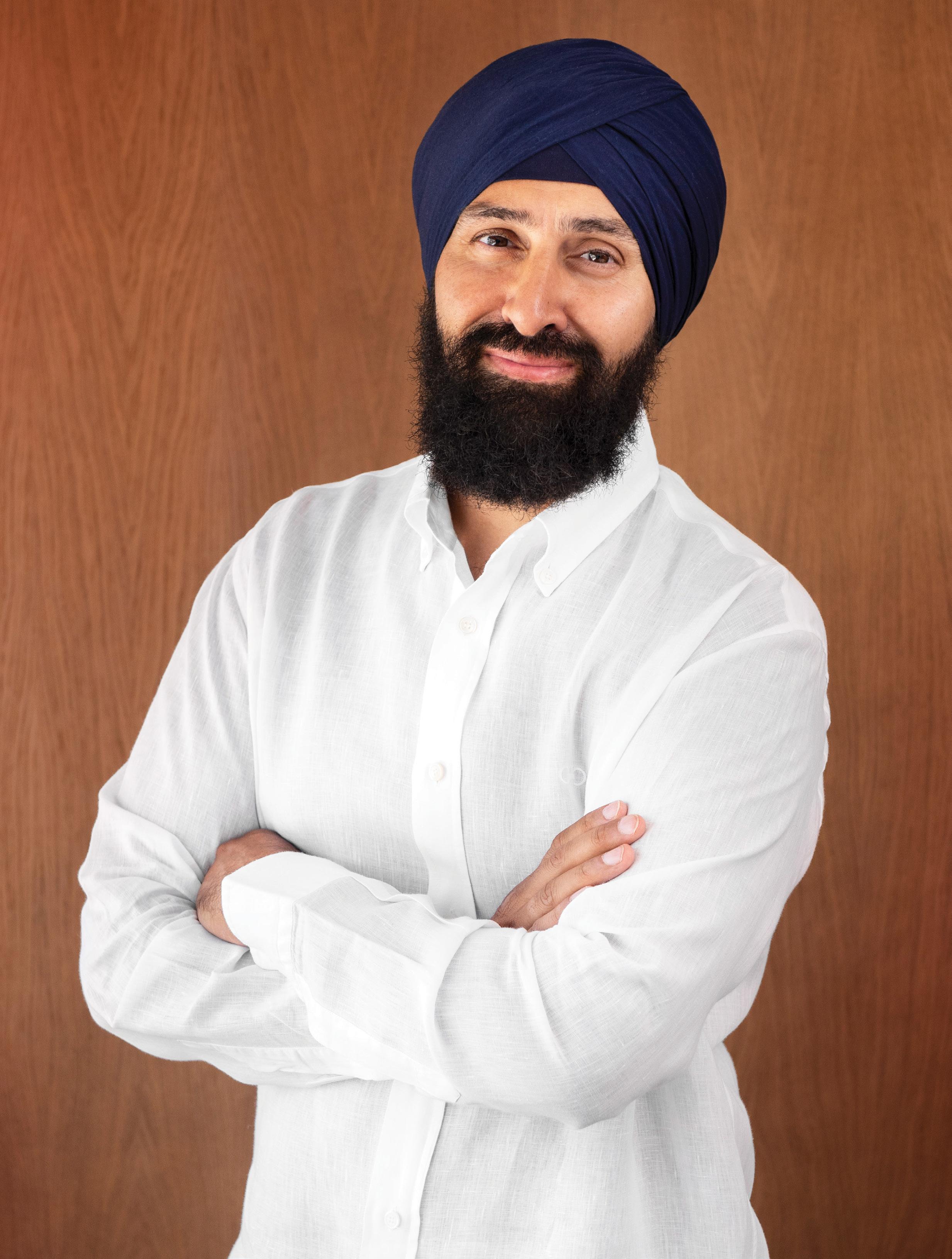
gulfbusiness.com 30 September 2023
COVER STORY
BALLY SINGH , CHAIRMAN AND FOUNDER OF AIOKA, REVEALS HOW THE BRAND IS PIONEERING BESPOKE AND EXCLUSIVE EXPERIENCES FOR F1 AFICIONADOS
ACROSS THE REGION
WORDS: DIVSHA
BHAT
portfolio – a venture that was launched over 10 years ago. The business started with two key areas – The Rich List creation at Abu Dhabi Race Weekend for HNWIs to access this. In addition to this, there was the consultancy and event management side to the business that was more traditional from an agency perspective where the company serviced major blue-chip corporations in their sport or entertainment sponsorships in events.
ny true F1 fan will attest to the exhilarating experience of being at the races: sleek cars that whizz pass at blistering speeds of more than 200km/h, glamourous international celebrities rubbing shoulders with superstar race drivers, busy pit crews priming for action, exclusive lounges with VIPs, pit lane walks, paddock tours and photo ops.
But there’s more for those looking to immerse themselves even deeper into this high-octane world. These discerning customers are looking for ‘money can’t buy experiences’, says Aioka’s Bally Singh.

The businessman and entrepreneur, who has more than 25 years of experience in the sports and entertainment space, adds: “Standard hospitality experiences are a thing of the past. Our exclusive clientele is looking for everything from private charters, yacht soirees and Michelin-starred dining experiences to meet-and-greets with drivers and team principals.”
AT YOUR SERVICE
UAE-based Aioka, previously known as The Rich List, has been servicing high-net-worth individuals (HNWIs) across the GCC and Europe for the past 15 years. It is part of Hoko’s
Hoko advised these corporations on what they should do in varying sports and then executed these activations or campaigns.
“Our business continued to grow through the IP (intellectual property) of The Rich List until it became what it is today – as Aioka – across multiple F1 races globally, with many revenue streams linked to it.
Our consultancy business continues to grow as we look to build out our experience of helping sponsors or corporations involved or wanting to get involved with F1,” says Singh, the company’s chairman and founder.
“What sets us apart is our attention to detail. When creating an event, our primary focus is the customers’ journey and their experience from the moment they arrive to the days a ter when they leave and carry on talking about the event to their friends and colleagues.
“From selecting the venue to the international sta ng with silver service to finding the most suitable entertainment. Our events are tailored to our consumers’ expectations.
A
LUXURY CONCIERGE SERVICES gulfbusiness.com September 2023 31
A


gulfbusiness.com 32 September 2023 COVER STORY
The Monaco Grand Prix 2023 saw Aioka partner with Alfa Romeo F1 Team Stake to enhance guest, corporate and individual experiences throughout the championship. The brand collaborated with Alfa Romeo F1 Team Stake to create bespoke customer experiences with its global concierge service thus making any event memorable from the start until the very end”
SINGH’S HIGH-PROFILE EVENTS HAVE ATTRACTED CELEBRITIES SUCH AS THE WEEKND, BELLA HADID, KEVIN HART AND FRENCH MONTANA
We pride ourselves on the fact that so many international celebrities, such as The Weeknd, Bella Hadid, Kevin Hart and French Montana, have attended our past events purely to enjoy the atmosphere we offer,” adds Singh.
EXCLUSIVE PARTNERSHIP WITH ALFA ROMEO F1 TEAM STAKE
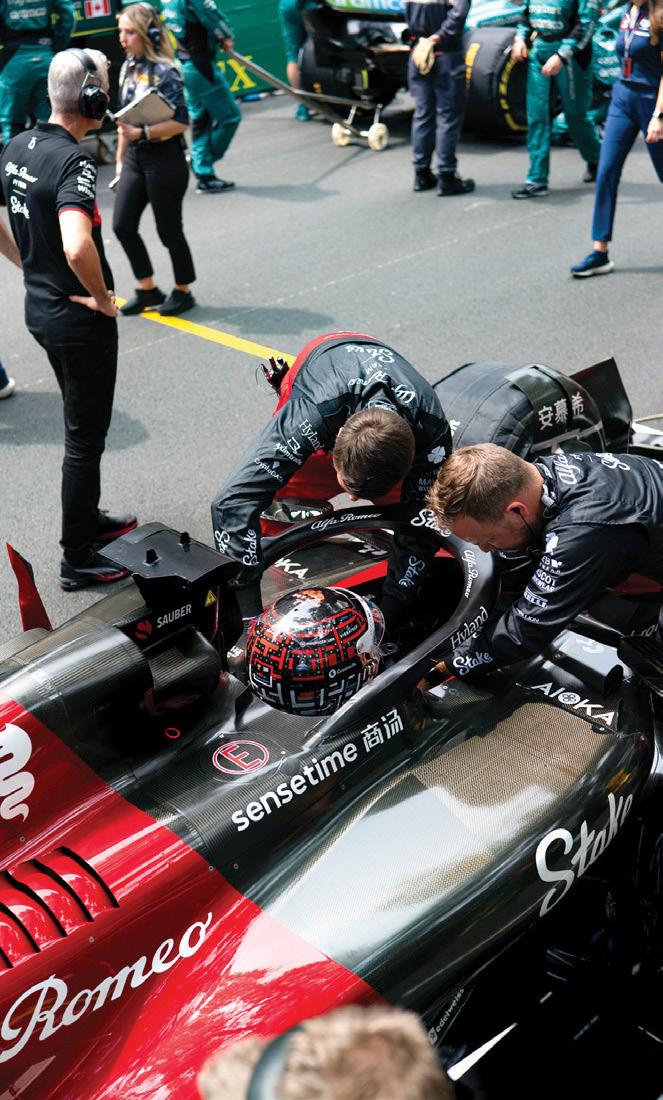
The Monaco Grand Prix 2023 saw Aioka partner with Alfa Romeo F1 Team Stake to enhance guest, corporate and individual experiences throughout the championship. The brand collaborated with Alfa Romeo F1 Team Stake to create bespoke customer experiences with its global concierge service, thus making any event memorable from the start until the end – from sourcing exclusive hospitality options to arranging additional features such as travel, accommodation, dining and entertainment.
As part of the partnership, Aioka will enhance the team’s offer to guests, as well as to corporate groups and individuals, with memorable add-on experiences available over the course of the 2023 Formula One World Championship – be it private factory visits, meet and greets with team principals and drivers, team dinners or unique visits to the team’s garages during race weekends.
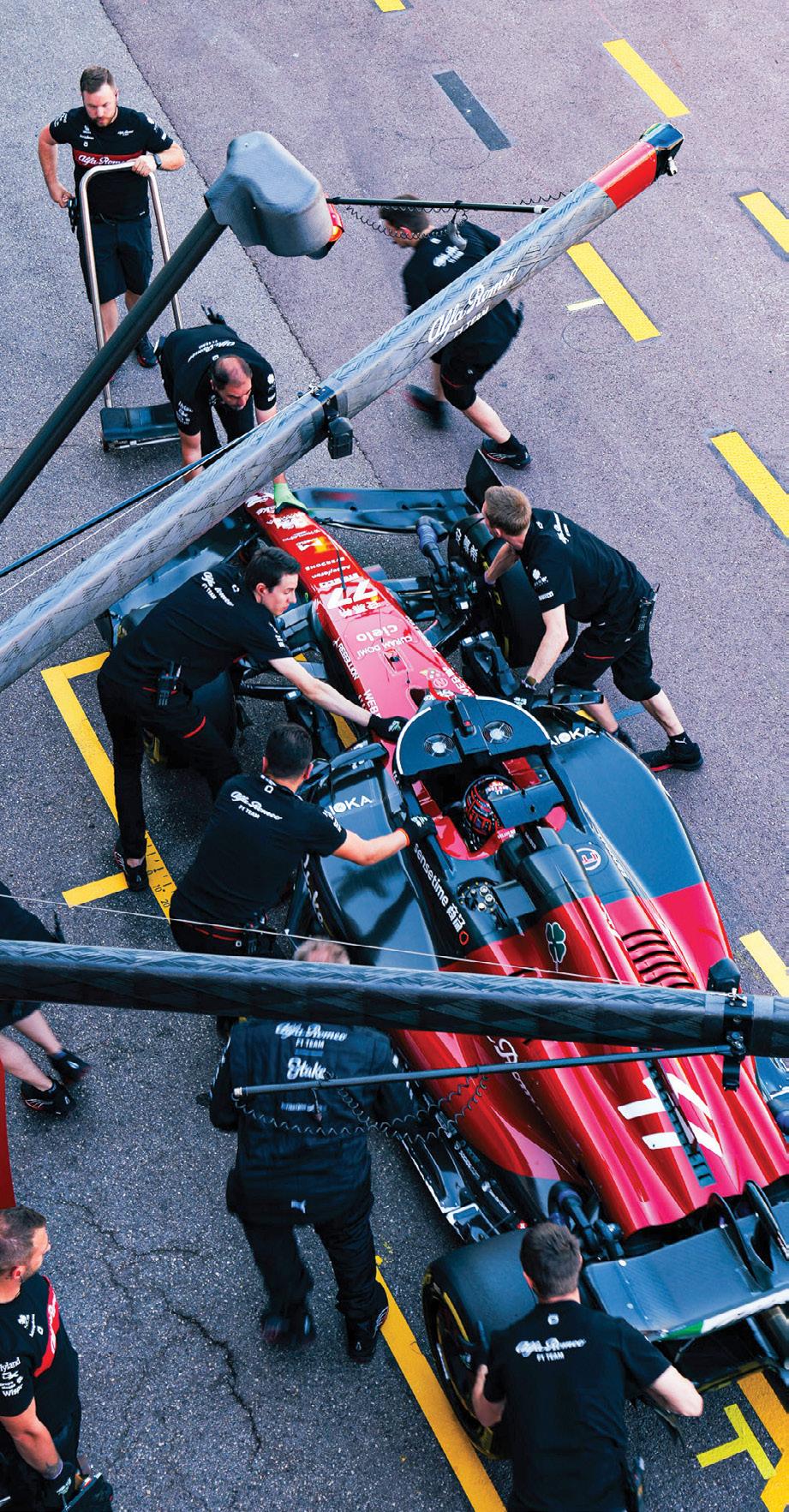
LUXURY CONCIERGE SERVICES gulfbusiness.com September 2023 33
“With most of our senior team having experience in the sports and entertainment industry for over 20 years, we are well-versed in creating unique and amazing experiences in conjunction with Alfa Romeo F1 Team Stake. It is a wellestablished and accessible team as a partner, and we can curate these experiences that no one else can put together. This is what makes the di erence when both parties have this vested interest in creating the most memorable experiences for clients,” says Singh.
REIMAGINING LUXURY WITH TECH
As a company that has always looked toward the future, Aioka has employed nascent technology to create benefits for current customers, as well as to introduce new consumers to the brand. Using artificial intelligence (AI) in the concierge industry provides a variety of benefits, such as the ability to catalogue and pass on information about the newest restaurants, charter companies and experiences. Further, Singh’s expertise in technology from the past has contributed to his success in numerous ways.
“For a number of years, I saw the disconnect between new technologies such as the blockchain industry and the commercial and corporate worlds – neither seemed to fully understand the other. We managed to create a solution, via our events, that bridged that gap and allowed the two worlds to intersect and collaborate with each other. This goes to our whole ethos of bringing people together from any background, industry or world.
“The key for us is to provide supreme e ciency and information and solutions at our customers’ fingertips whilst retaining

“ SURROUND YOURSELF WITH PEOPLE WHO ARE SMARTER THAN YOU, AND IF POSSIBLE, EVEN MORE PASSIONATE THAN YOU . POSITIVE ENERGY BRINGS POSITIVE RESULTS”
“THE COMPANY’S VISION IS TO CONTINUE DEVELOPING IN ITS FIELD, CREATING OUTSTANDING AND UNIQUE EVENT EXPERIENCES AROUND THE WORLD – WITH THE SUPPORT OF A DIVERSE TEAM OF SPECIALISTS WHO EMBODY AND REPRESENT THIS PHILOSOPHY”
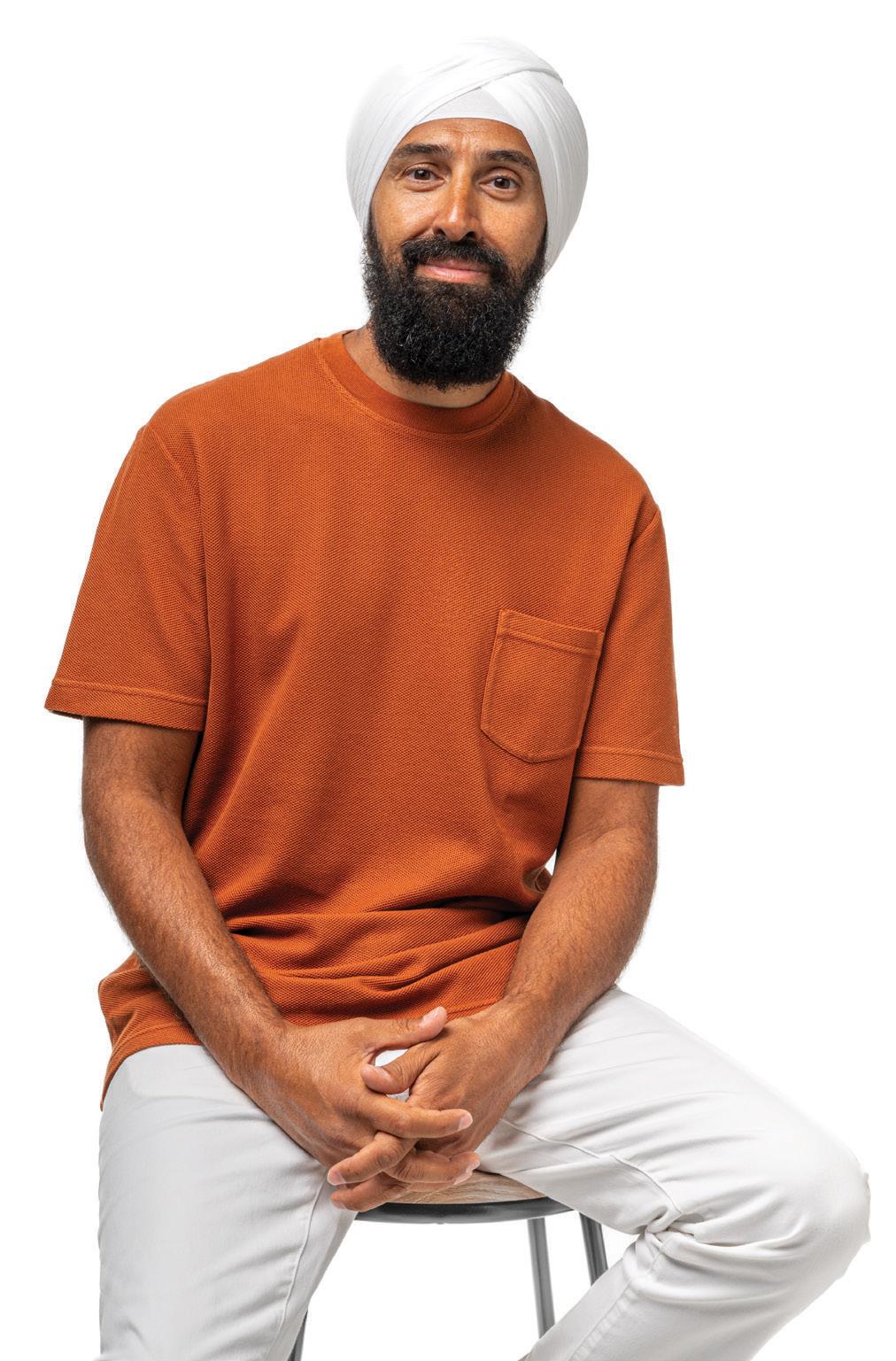
gulfbusiness.com 34 September 2023 COVER STORY
We managed to create a solution via our events, that bridged that gap and allowed the two worlds to intersect and collaborate with each other. This goes to our whole ethos of bringing people together, from any background, industry or world”
IN LIGHT OF HOKO’S HEADQUARTERS BEING LOCATED IN THE UAE AND THE COMPANY’S EXTENSIVE DATABASE THROUGHOUT THE GCC, IT WAS A NATURAL PROGRESSION TO EXPAND AIOKA’S OPERATIONS TO ALL FOUR RACES IN THE REGION
HOKO IS LOOKING TO EXPAND IN 10 CITIES IN 2024 AND OFFER DISTINCT SERVICES SUCH AS EVENT MANAGEMENT, PUBLIC RELATIONS AND MARKETING
the personal touch that we have become known for. We are beginning with a small pilot scheme, both geographically with the UAE and demographically with HNWIs. This will allow us to fully test the technology and the proof of use within an area we already know and a client base and partners we are already working with.
As we begin to consider the option of a stand-alone app or programme, it may be the right time to engage with VC firms to add capital but also specialist know-how to ensure successful implementation and execution,” explains Singh.
Aioka remains on the cutting edge by keeping its events fresh and forward-looking and by introducing new products as they enter the market to make its customers’ experience more pleasant throughout the entire process.
POWERED BY PEOPLE
Singh attributes the success to his diverse team, which adeptly navigates the ever-changing trends of today’s competitive market. “The company’s vision is to continue developing in its field, creating outstanding and unique event experiences around the world – with the support of a diverse team of specialists who embody and represent this philosophy, ” says Singh.
I believe you should “surround yourself with people who are smarter than you, and if possible, even more passionate than you. Positive energy brings positive results”.
He believes in creating a team where people feel comfortable putting their ideas forward and empowering them with the necessary tools to do their jobs.
“One of the characteristics that set us apart is how agile and flexible we are,” he says.
HOKO HAS EMPLOYED NASCENT TECHNOLOGY TO CREATE BENEFITS FOR CURRENT CUSTOMERS, AND TO INTRODUCE NEW CONSUMERS TO THE BRAND EXPERIENCE
RACING TOWARDS THE FUTURE
Moving ahead, Hoko is looking to expand in 10 cities in 2024 and offer distinct services such as event management, public relations and marketing.
Meanwhile, having spent more than a decade in Abu Dhabi as part of The Race Weekend, Aioka’s GCC races have become a significant focus on the calendar, now comprising four races. Currently, the brand is involved in two of them, and this year, it has launched in Saudi Arabia.
Furthermore, its plans for 2024 include participating in all four races as it expands to include Bahrain and Qatar in the calendar. “With Hoko’s headquarters in the UAE and a comprehensive database covering the GCC, this expansion feels like a natural progression,” concludes Singh.

LUXURY CONCIERGE SERVICES gulfbusiness.com September 2023 35
CHINA OR INDIA:





HOW TO INVEST IN THE COMING ASIA BOOM

EXPERTS SHARE WHY THE TWO ASIAN ECONOMIES HOLD IMMENSE POTENTIAL FOR GLOBAL INVESTORS


Money managers are navigating a historic shi t: India’s population, at 1.43 billion, edged past China’s this year. Now the world’s most populous country, India could experience a decades-long investment boom. Goldman Sachs Group analysts expect its share of global equity market capitalisation to quadruple between now and 2075 – reaching 12 per cent, when it will be neck and neck with China’s. (Over that same period, the US share is projected to drop by half, to 22 per cent.)

India and China both offer investors the chance to profit from rising powers’ economic growth. China is the world’s second-largest economy, featuring a massive



MARK MOBIUS, partner and co-founder, Mobius Capital Partners, Dubai
consumer market and advanced manufacturing. India has friendlier relations with the West and a young workforce. Its economy is expected to grow 6 per cent to 7 per cent a year, outpacing China’s. Its budding middle class will be spending well beyond essentials.
Conrad Saldanha, a portfolio manager focusing on emerging-markets equity at Neuberger Berman, says India will benefit as companies look for manufacturing alternatives to China. “India is probably singularly one of the best structural growth stories globally,” he says. For Sukumar Rajah, a director of portfolio management at Franklin Templeton, India’s increased consumer spending,
including on premium products, will open up new investment opportunities.



But Hugues Rialan, chief investment o cer for Asia at Pictet Wealth Management, says Indian stocks are expensive. The country’s equity benchmarks have gained in every single year from 2016 through 2022. “Over the next 12 to 24 months, we prefer China given that we expect the economy to reaccelerate and its equity valuations are low today,” he says.
While it’s not necessarily a binary choice, investors are increasingly comparing the two giant Asian markets as they decide where to place bets. Read on to see which sectors and stocks are likely to benefit from the demographic shi t.

Over the long term, India’s macro factors are more favourable because of demographics, as well as specific companies’ growth prospects. Picking stocks in India is all about technology and digitisation. We like APL Apollo Tubes, whose steel structures are used to construct buildings, and Metropolis Healthcare, a medical testing firm. We also like so tware company Persistent Systems and digital mapping company CE

Info Systems, as well as Dreamfolks Services, which o ers services at airports. China will not achieve the high growth of the past, and thus opportunities will be limited. Nevertheless, it’s an enormous market, and there will certainly be pockets of opportunities.
MICHAEL OH, portfolio manager, Matthews Asia, San Francisco
We are ‘overweight’ both markets. This is not a zerosum game. Demographically, India is in a better place. However, given the size of the Chinese market, it
gulfbusiness.com 36 August 2023
Illustration: getty images/Digital Vision
remains very important. For India, I like banks, as consumers still lack basic financial services. ICICI Bank is well positioned to benefit. I would avoid state-owned enterprises in general and focus on privately owned businesses.
I am not too worried about China’s ageing population yet, since it can still improve productivity and income levels. If gross domestic product per capita can grow from around $10,000-$12,000 currently to $20,000-$30,000, there will be tremendous growth. Top Chinese stock picks are KE Holdings, which handles housing transactions and services, and Trip.com Group, an online travel agency.
HIREN DASANI, managing director, Goldman Sachs Asset Management, Singapore
Both markets will follow their own dynamics. Investors may rotate from one market to the other, but over time both should do well. India for us is a long-duration, stronger-for-longer kind of growth story. It’s one of those markets which gives a combination of three critical things – scale, growth and profitability.

China was all about exports, infrastructure and real estate. Going forward, it will focus more on domestic consumption as the next growth driver. We certainly believe there is a lot of pent-up savings and demand. [As of the end of May, top China holdings in Goldman’s emerging-markets equity portfolio included Tencent Holdings and Alibaba Group Holding, the nation’s two largest internet companies, as well as liquor maker Kweichow Moutai, according to data compiled by Bloomberg.]
AYAZ EBRAHIM, emerging markets and Asia Pacific equities portfolio manager, J. P. Morgan Asset Management, Hong Kong
Fundamentally, we like both markets. But over the next year or so, purely on valuations, we have a bit of preference for China. We like the theme of industrial upgrade and companies that have


IF CHINA’S GROSS DOMESTIC PRODUCT PER CAPITA CAN GROW FROM AROUND $10,000-$12,000 CURRENTLY TO $20,000-$30,000, THERE WILL BE TREMENDOUS GROWTH INDIA’S HUGE, YOUNG POPULATION IS A POWERFUL DRIVER OF GROWTH. WHILE STILL A DEVELOPING COUNTRY, THERE’S NO DOUBT INDIA IS IN MANY RESPECTS A CUTTING-EDGE DIGITAL ECONOMY
moved up the value chain. We see companies in health care as well as renewable energy that are embracing new technology to evolve.
In India, we favour the financials, especially private banks and insurers. The economy is growing strongly, and an expanding middle class will continue to increase demand for financial products and services. The other area we like is the consumer sector, due to a growing population and higher spending power. [Top holdings in the JPMorgan India fund as of May 31 were financials ICICI Bank and Housing Development Finance Corp, as well as Infosys, the information technology company.]
CECILIA CHAN, chief investment officer for Asia Pacific, HSBC Asset Management, Hong Kong

India will be a bright spot because of its booming population, growing affluence, structural reforms and good policy mix. We particularly favor the real estate sector, where there is improving affordability, strong demand, robust launches and sales. We also like the financial sector, especially the largest private banks. [As of May 31, top holdings in HSBC’s Indian equity portfolio included HDFC Bank and ICICI Bank, as well as conglomerate Reliance Industries.]
As China ages, technology has the potential to enhance the quality of life. We favour communication services, information technology and industrials and also find opportunities in stateowned enterprises. [As of May 31, top holdings for HSBC’s Chinese stock portfolio included Tencent, Alibaba and online gaming company NetEase.]
JASON PIDCOCK, investment manager for Asian equity income, Jupiter Asset Management, London
India’s huge, young population is a powerful driver of growth. While still a developing country, there’s no doubt India is in many respects a cuttingedge digital economy. We think the consumer, financials and utilities sectors will benefit the most from India’s demographic dividend. But you have to be very selective within them. [As of May 31, the top holding for Jupiter Asia Pacific Income Fund was Indian tobacco company ITC.]
We own no mainland Chinese companies. The geopolitical tensions between China and not just the US, but also Japan, South Korea and Europe, are likely to increase in the coming years. We don’t favour the domestic situation with the government taking a greater influence over the likes of Tencent and Alibaba.
gulfbusiness.com August 2022 37 FEATURES / ASIAN MARKETS
Bloomberg
INVESTORS MAY ROTATE FROM ONE MARKET TO THE OTHER, BUT OVER TIME BOTH SHOULD DO WELL. INDIA FOR US IS A LONGDURATION, STRONGER-FOR-LONGER KIND OF GROWTH STORY”
Unlocking Dubai’s investment potential
Dubai, with its iconic skyline and modern marvels, has carved a distinctive niche on the global stage. Its strategic geographic position between the East and West offers a host of unique advantages to potential investors.
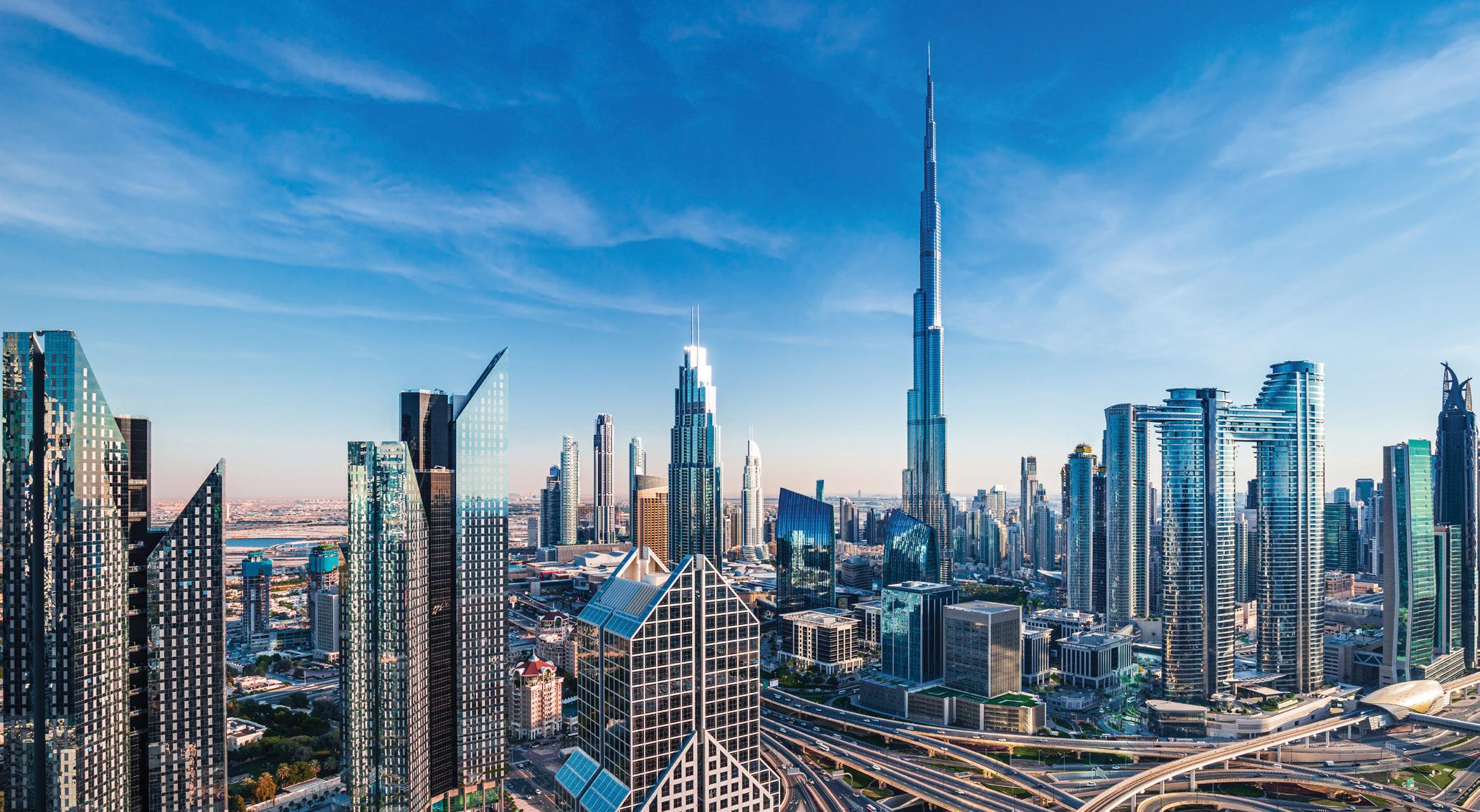
A GATEWAY TO OPPORTUNITIES
The emirate has served as a magnet for international investors seeking unparalleled access to a diverse range of industries. Dubai has meticulously steered its economy toward diversity, shattering its dependence on oil revenues. It is synonymous with ambitious infrastructure projects that redefine urban living, ultramodern transportation systems and cutting-edge commercial hubs — all of which amplify its real estate appeal and value proposition. The city’s property market has matured over the years, embracing greater transparency and regulation.
This evolution has enhanced investor confidence, ushering in an era of reduced risks and heightened security. The emirate’s bustling tourism industry also generates consistent demand for accommodations and commercial spaces, offering a secure investment avenue.
AIX Investment Group (AIX), one of Dubai’s leading investment firms, believes that by nurturing sectors such as finance, tourism, and real estate, the emirate has developed a robust and stable economy, a cornerstone for a thriving property market.
The real estate market offers diversity, catering to a spectrum of investment preferences.
From luxury apartments to commercial spaces, the range ensures that potential investors can align their choices with their investment objectives.
ELEVATING INVESTMENT WITH PROPERTY SECURE
Dubai’s multifaceted real estate market demands more than just financial capital; it requires insights, strategies from trustworthy and established experts.
AIX’s marquee offering, ‘Property Secure’, stands as a testament to the investment advisory firm’s commitment to investors’ prosperity.
The innovative product offers investors the chance to generate secured and fixed rental returns ranging from 14 per cent to 20 per cent on pre-established dates. “At AIX, our focus is on empowering investors to make well-informed decisions in the investment landscape. We believe that

From premium residences to ultra modern commercial spaces, the city’s real estate market offers diverse and lucrative opportunities for investors
the key to successful investing lies in understanding the unique goals of each investor,” says Fadi Dabbagh, AIX’s president of the board.
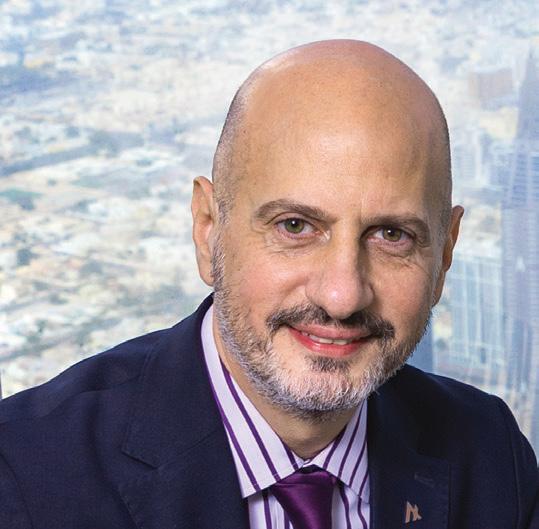
“Through personalised consultations and a diverse range of options, we aim to provide tailored strategies that align with our clients’ aspirations.”
Moreover, these returns are directly credited to the investor’s beneficiary account. The product allows investors to enjoy the assurance that their principal investment is safeguarded, via the asset.
The unique structure provides a sense of security even in the face of market volatility, setting AIX apart as a dependable partner in the investment journey.
DIVERSE INVESTMENT OFFERINGS

In addition to Property Secure, AIX offers a range of investment products designed to cater to various investor preferences. The investment advisory firm presents innovative avenues for investors to diversify their portfolios. The AIX Bond, for instance, offers a secure and predictable investment vehicle, allowing investors to tap into fixed-income
opportunities while benefiting from the company’s trusted track record.
This bond not only serves as a stable addition to investment portfolios, but also reflects the firm’s commitment to creating financial instruments that align with investor goals.
With a commitment to market understanding, tailored approaches, and an array of comprehensive services, the investment advisory firm is the guiding star towards unlocking success in Dubai’s real estate arena.
A HOLISTIC APPROACH TO INVESTMENT
While enlisting the service of expertise can undoubtedly illuminate the path, investors must conduct independent research, seek input from multiple sources, and evaluate their financial circumstances before embarking on any investment journey.
“The investment landscape is dynamic and full of potential, but it can also be intricate to navigate with an abundance of opportunities available in the market. Where AIX comes in – is to offer our expertise and guidance, through unique and bespoke structures, where transparency and capital protection
serve as key pillars of our offering,” says Harish Prithvi, AIX’s chief operating officer.
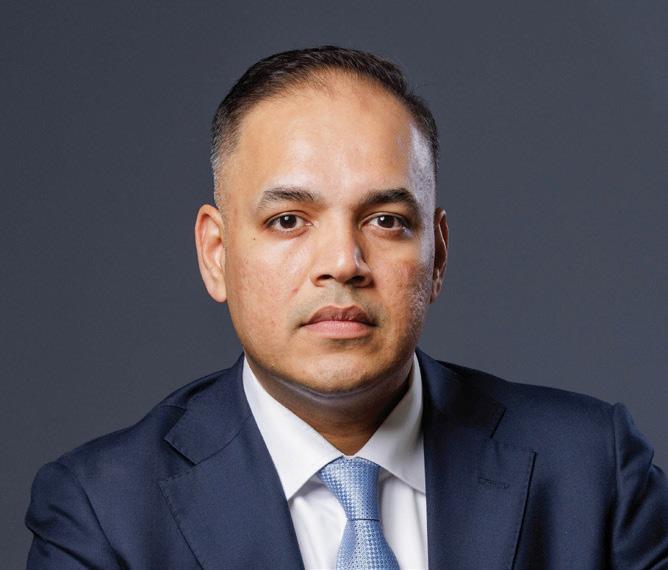

By synergising personal diligence with the insights provided by expert partnerships, investors can confidently explore Dubai’s real estate market and navigate the realm of possibilities it holds.
“With our finger on the pulse of market trends and a global perspective, we present investors with a holistic view of their opportunities. It’s not just about transactions but about fostering lasting relationships and helping investors achieve their financial goals at the same time,” adds Prithvi.
Having the right guidance can make all the difference when it comes to navigating investments, and that is where AIX steps in, providing a beacon of expertise and support for investors.
With a commitment to tailored strategies, transparency, and comprehensive support, the company stands ready to guide investors through the intricacies of the market, ensuring that each decision is a step toward success.
NAVIGATING RISKS
While the horizon glimmers with promise, it’s paramount to tread cautiously. Potential risks include market volatility, evolving regulations, and potential oversupply in certain segments. As with any investment, meticulous research, expert advice and a comprehensive evaluation of personal financial goals are essential for informed decision-making.
Dubai’s real estate market beckons with opportunities as vibrant as its skyline. With careful consideration and the right guidance, investors can potentially unlock a realm of rewards within this thriving landscape.
The investment landscape is dynamic and full of potential, but it can also be intricate to navigate with an abundance of opportunities available in the market. Where AIX comes in – is to offer our expertise and guidance, through unique and bespoke structures”
BRAND VIEW
At AIX, our focus is on empowering investors to make well-informed decisions in the investment landscape. We believe that the key to successful investing lies in understanding the unique goals of each investor”
Fadi Dabbagh, AIX’s president of the board
Harish Prithvi, AIX’s chief operating o cer
REWRITING THE RULES IN GAMING WITH AI
From San Francisco to Tokyo and Hong Kong, the plethora of companies that power the digital entertainment sphere are responding to decades of escalating costs and stagnant prices by feverishly adopting and developing new AI tools. Hundreds of thousands of jobs are on the line. Yet company leaders and studio chiefs told Bloomberg News that the changes, while inevitable and painful, can empower smaller studios, boost creativity and ultimately benefit gamers around the world.
The head of one major Japanese studio is preparing for a future where half his company’s programmers and designers will be unnecessary within five years. At Hong Kong-listed Gala Sports, executives have mothballed non-AI research projects, forced department heads to study machine

learning and o ered bounties of as much as $7,000 for novel AI ideas. They worry they might already be late.


“Basically every week, we feel that we are going to be eliminated,” Gala Technology Holding CEO Jia Xiaodong told Bloomberg News. “The impact of AI on the game industry in the past three to four months may be as dramatic as the changes in the past 30 or 40 years.”
The video game industry is among the first to feel the full brunt of AI because it’s largely digital – encoded in an AI-readable language and created by so tware engineers well prepared to use, adapt and improve new computing tools.


The advent of AI o ers the industry a rare chance to overhaul a business model that in some cases has grown bloated and formulaic – not dissimilar to criticisms


AT HONG KONG-LISTED GALA SPORTS, EXECUTIVES HAVE MOTHBALLED NON-AI RESEARCH PROJECTS, FORCED DEPARTMENT HEADS TO STUDY MACHINE LEARNING AND OFFERED BOUNTIES OF AS MUCH AS $7,000 FOR NOVEL AI IDEAS

FEATURES / TECHNOLOGY gulfbusiness.com 40 September 2023
Artificial intelligence is bringing a sea change in how digital content is being created
AI IS THE GAME CHANGER I’VE BEEN
WAITING FOR. BY FREEING DEVELOPERS FROM THE BURDEN OF MASS-PRODUCING GRAPHICS, IT PROMISES TO REVITALISE THE ENTIRE INDUSTRY. PUBLISHERS WILL BE ABLE TO TAKE MORE RISKS, CREATORS CAN BECOME CREATIVE AGAIN, AND USERS AS A RESULT CAN CHOOSE FROM A MUCH WIDER VARIETY OF GAMES”
directed at risk-averse Hollywood today. Game production costs have spiralled upward faster than sales, with recent blockbusters The Last of Us Part II and Horizon Forbidden West reportedly costing Sony Group more than $200m each and requiring years of work from hundreds of sta .
“Nothing can reverse, stop, or slow the current AI trend,” said Masaaki Fukuda, who helped build PlayStation Network while at Sony. Now a vice president at Japan’s largest AI startup, Preferred Networks, Fukuda sees a tidal wave of change in how digital content is created and his company has become involved with an anime creator named Crypko.
Character illustrations that typically cost upward of YEN100,000 ($720) each to outsource can be obtained from Crypko for a flat monthly fee of YEN4,980 and a commercial licence of YEN980 per image. It still needs human artists to finish the AI’s work, but the company is improving the tool daily and should be able to solve most imperfections within a few years, Fukuda said.
The scale of demand for such content has ballooned over the years, with mobile games that used to cost around YEN40m to produce 15 years ago now requiring a minimum of YEN500m, mostly because of graphics, according to former Touken Ranbu producer Yuta Hanazawa.
For the 25-year industry veteran, the new tech was compelling enough to start a new company, AI Works, to sell machine-drawn game illustrations.
“AI is the game changer I’ve been waiting for,” Hanazawa said. By freeing developers from the burden of massproducing graphics, it promises to revitalise the entire industry. “Publishers will be able to take more risks, creators can become creative again, and users as a result can choose from a much wider variety of games.”
AI is also becoming a powerful in-house tool. Gala Sports used publicly available AI services – image generators
CHARACTER ILLUSTRATIONS THAT TYPICALLY COST UPWARD OF YEN100,000 ($720) EACH TO OUTSOURCE CAN BE OBTAINED FROM CRYPKO FOR A FLAT MONTHLY FEE OF YEN4,980 AND A COMMERCIAL LICENCE OF YEN980 PER IMAGE
GALA SPORTS USED PUBLICLY AVAILABLE AI SERVICES – IMAGE GENERATORS STABLE DIFFUSION AND MIDJOURNEY – TO BUILD INTERNAL TOOLKITS FOR RENDERING REALISTIC 3D HEAD MODELS, SLASHING THE COST OF A TASK THAT PREVIOUSLY WOULD TAKE TWO WEEKS AND AS MUCH AS CNY200,000 WHEN OUTSOURCED. NOW IT TAKES ONLY HALF A DAY’S LABOUR
Stable Di usion and Midjourney – to build internal toolkits for rendering realistic 3D head models, slashing the cost of a task that previously would take two weeks and as much as CNY200,000 ($28,000) when outsourced. Now it takes only half a day’s labour.
The downside to all this automation is a corresponding loss of jobs. “AI might eventually wipe out entire job categories in gaming such as quality control, debugging, customer support or translation,” said industry analyst Serkan Toto.
That future was put on display last month when Tokyo-based Morikatron showed off an entire game made by AI. Murder mystery simulator Red Ram uses Stable Di usion and ChatGPT to generate its content based on a player’s prompts.
Tsubasa Himeno, a voice actor with many game credits to her name, said the new technology will make it more di cult for young people to get a start in the business.
Jiro Ishii, known for creating the live-action novel 428: Shibuya Scramble, in a decade or two expects everyone will be able to create their own games.
Most see opportunity. Yosuke Shiokawa has operated on both ends of the spectrum, as a former producer of Sony’s hit smartphone game Fate/Grand Order as well as founder of two-yearold Fahrenheit 213. He started dabbling with AI creation for a video trailer before using it as an aid to create in-game objects and backgrounds, adding extras his four-person team previously wouldn’t have thought to try due to limited resources.
“Soon, it will be a matter of your creativity, not your budget, that determines the value of games,” Shiokawa said.
THE SCALE OF DEMAND FOR SUCH CONTENT HAS BALLOONED OVER THE YEARS, WITH MOBILE GAMES THAT USED TO COST AROUND YEN40M TO PRODUCE 15 YEARS AGO NOW REQUIRING A MINIMUM OF YEN500M
FEATURES / TECHNOLOGY gulfbusiness.com September 2023 41
Bloomberg
Revolutionary, new out-of-home (OOH) advertising medium, powered by innovative technology.
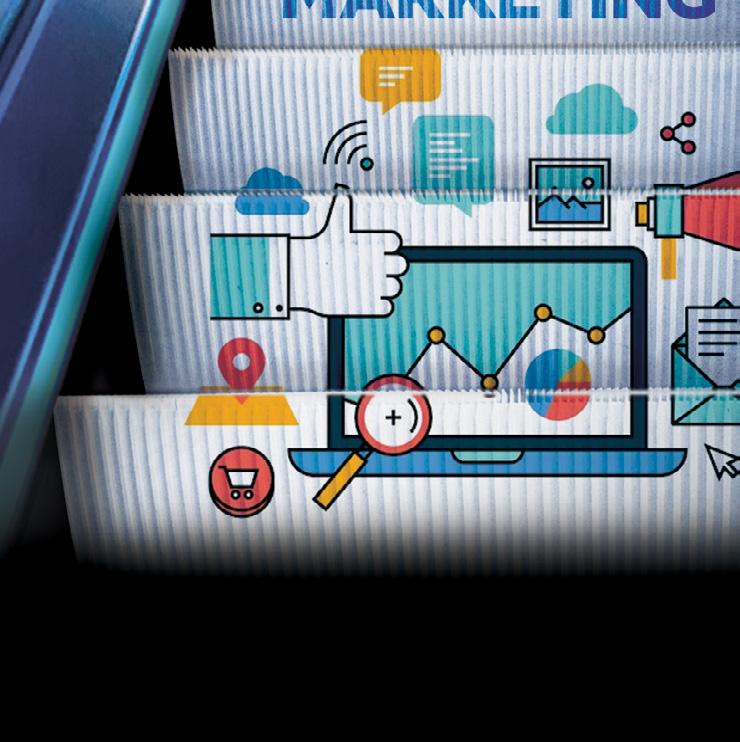



This unique and globally patented Escalator Step Branding Solution that gives brands an unrivaled opportunity to connect with audiences.





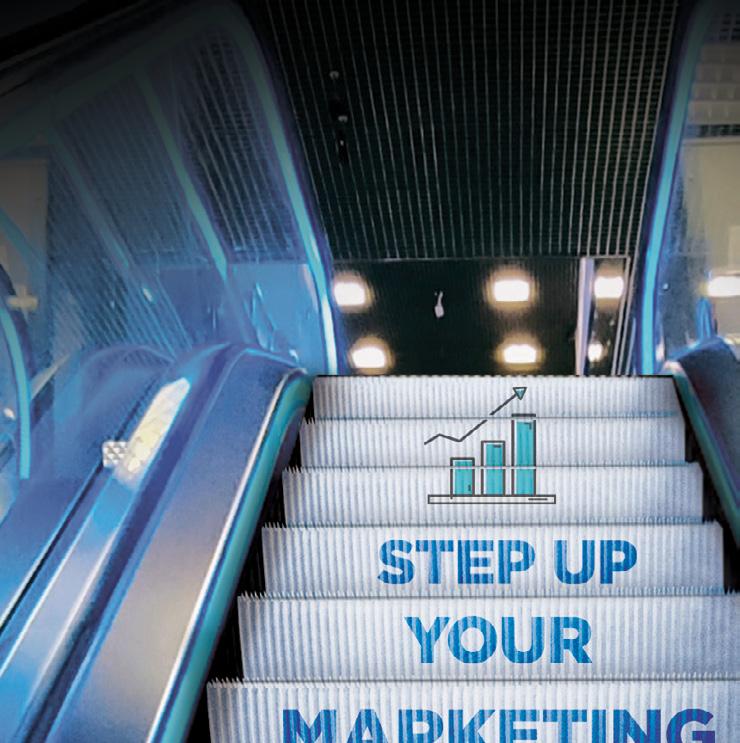






CONTACT US TODAY fatima.alkhalidi@motivate.ae +971 4
3000
427
THE RISE OF EDTECH


TECHNOLOGY IS CONSTANTLY TRANSFORMING THE WAY WE LEARN AND EDUCATE. HERE, WE EXPLORE THE LATEST DEVELOPMENTS THAT ARE SHAPING THE REGION’S EDUCATION SECTOR





SPECIAL REPORT
Illustration: Getty Images/agsandrew
JOURNEY THE LEARNING PERSONALISING

WE LOOK AT HOW EDTECH HAS FUNDAMENTALLY TRANSFORMED THE EDUCATION SECTOR, EMPOWERING LEARNERS AND EDUCATORS WORLDWIDE WITH INTERACTIVE OPPORTUNITIES
BY DIVSHA BHAT
Education technology is transforming the way students, teachers and educational organisations communicate with each other. In recent years, the surge in popularity of e-learning platforms and edtech tools has been propelled by the impact of the Covid19 pandemic.


According to research and consulting company Grand View Research, the global education technology market size is expected to expand at a compound annual growth rate of 13.6 per cent from 2023-2030. This is driven by several factors, including the increasing demand for online education, the growing adoption of digital technologies in the classroom and the increasing investment in edtech startups.
RISE OF TECHNOLOGICAL ADVANCEMENTS




Technology enhances the learning experience for students by equipping them with the tools and resources necessary to succeed. From online resources that help simplify complex concepts to interactive learning experiences that keep students engaged, technology provides students with the support they need to thrive in the classroom and beyond.
Artificial intelligence (AI) plays a significant role in this shi t. AI-powered technologies, including facial recognition, natural language processing, and machine learning, are becoming more prevalent in educational settings, enhancing learning experiences and interaction. AI-driven learning environments can deliver personalised



44 Pic: Getty Images
learning journeys for students and enable educators to tailor lessons to cater to each pupil’s unique requirements.
Meanwhile, augmented reality (AR) and virtual reality (VR) technologies help create immersive learning experiences. It allows students to delve into virtual realms, practise tasks and engage in simulations customised to their specific needs.
Moreover, as wearable technologies attain greater ubiquity and adaptability, their impact on educational settings will be substantial. Wearable tech can facilitate progress tracking, o er performance feedback and provide real-time tailored guidance. Additionally, students can listen to audio lectures, receive class updates, take voice notes and more through wearable tech such as smartwatches and VR headsets. This would enhance the accessibility and e cacy of learning, benefitting both educators and parents.
For instance, last year, Proven Reality, a VR and AR company and the Center for Advanced Simulation in Healthcare, Gulf Medical University signed a memorandum of understanding to enhance healthcare education through VR solutions.
The VR Medical Education Simulation Platform, Simbios, o ers students a virtual learning environment where they can go over their medical scenarios, test their skills with pathology and investigations and conclude their diagnosis as if they were in a real-life environment. The VR devices they will use simulate the real-life environment without limitation.
Portable devices such as smartphones and tablets are supplanting traditional learning mediums. Mobile e-learning solutions ensure that the learning process remains uninterrupted.
“We have seen that technology can be used to great e ect to facilitate communication between


parents and daycare providers and encourage parent engagement, so they have a better understanding of what is involved in early years learning and their child’s physical, emotional and language development,” says Geraint Barton, CEO and founder at Kinderly.
“Another area that we have seen technology play a crucial role in is helping to raise the standards of the teachers in early childhood education. We are seeing technology be used to provide easily accessible, high quality and engaging online learning for the teachers, so they can keep up to date with the latest teaching aids and tools and continue their professional development,” he adds.
SURGE IN THE MIDDLE EAST
The Middle East has witnessed a remarkable surge in the adoption of educational technology. The region, which is characterised by its rich cultural heritage and diverse populations, is now embracing innovative digital solutions to transform its education landscape.
“Over the last few years, specifically post-Covid, we have seen a dramatic increase in technology tools for education. There have been changes in learner, parent and teacher behaviour,” says Emre Ekmekci, co-founder at Fundomundo.

“Teachers are now more open to using remote learning tools, as they have experienced the success of these during the pandemic. Learners are more eager to spend time online and on tools. Parents are more comfortable with their kids’ screen time. The result of behaviour change has been a surge of tools in digital learning platforms and e-learning initiatives like virtual classrooms and online courses, blended learning approaches and gamification and interactive learning,” he adds.
The proliferation of smartphones and widespread internet access have played a pivotal role in boosting the growth of edtech in the Middle East. Countries such as the UAE, Saudi Arabia and Qatar have invested heavily in developing their digital infrastructure, facilitating the seamless integration of technology into education. This has paved the way for various edtech startups, platforms and initiatives catering to a wide range of educational needs.
With the UAE leading the Middle East in the edtech revolution, the government has actively fostered the use of technology in education. An excellent example of its achievements can be traced even before the pandemic in October 2018 when the UAE government launched Madrasa. This free e-learning platform provides 5,000 free
45
Features / Edtech Trends
Artificial intelligence (AI) plays a significant role in this shift as technology advances rapidly. AI-powered technologies, including facial recognition, natural language processing, and machine learning, are becoming more prevalent in educational settings, enhancing learning experiences and interaction”
EMRE EKMEKCI, Co-founder, Fundomundo
Arabic videos in general science, math, biology, chemistry and physics. Additionally, it o ers educational content for students from kindergarten to 12th grade that totals 11 million words.

Meanwhile, according to the latest GCC Education Industry Report by UAE-based investment banking advisory firm Alpen Capital, the UAE has boosted the education budget allocation in 2023 to 15.5 per cent, or $2.7bn to improve educational quality and integrate technology into teaching and learning techniques.
Other countries in the Middle East that are seeing strong growth in edtech include Saudi Arabia, Qatar and Egypt. These countries are investing in edtech startups and initiatives and are seeing a spurring demand for online education.
According to the same report, Saudi Arabia is introducing various reforms to build a knowledgebased economy such as allocating 17 per cent of its budget, amounting to $50.4bn, to the education sector alone, as part of its Vision 2030 strategy.
Meanwhile, language diversity is a significant factor in the Middle East, with Arabic being the primary language for many. The use of edtech solutions that o er content in Arabic has been gaining considerable traction over recent years, bridging the gap between traditional classroom instruction and the modern means of learning. These platforms provide personalised learning experiences that adapt to each student’s pace and style, enabling more e ective learning outcomes.
EMBRACING OPPORTUNITIES, OVERCOMING CHALLENGES
Edtech adoption in the Middle East presents several opportunities for the region’s education system. Access to quality education, regardless of geographic barriers, is one of the most significant advantages of this system. Using remote and online learning platforms, students who live in remote areas can access educational resources from all over the world and communicate with top educators worldwide. This has the potential
to democratise education and reduce educational inequality.
In addition to this, edtech solutions provide innovative ways to engage students and improve their learning experiences through the use of technology. Interactive simulations, VR and AR applications can bring complex concepts to life, making learning more engaging and memorable.
“The Middle East has a sizable youth population that is o ten more tech-savvy and open to adopting new technologies. Governments and institutions in the Middle East are investing in digital transformation. The Middle East has a strong demand for language learning due to its multicultural nature. Edtech platforms offering language courses, including English and Arabic, have a large potential audience. Investment in the Middle Eastern edtech sector has been growing. This support can help edtech companies scale their operations and refine their o erings,” states Ekmekci.
While the growth of edtech in the Middle East is promising, it has its challenges. Cultural factors and traditional teaching methods can also challenge the widespread adoption of edtech. Some educators and parents may resist change, viewing technology as disrupting the established educational system. Convincing stakeholders of the value and e cacy of edtech solutions requires careful communication and evidence-based demonstrations of their benefits.
“The key challenges are around regulatory and, cultural and language diversities across the region. Edtech platforms need to develop content and technology that caters to diverse linguistic and cultural backgrounds and navigate regulatory frameworks and policies. The Middle East edtech market is competitive, with both local and international companies vying for market share. Edtech companies need to di erentiate themselves by o ering unique and valuable solutions,” believes Ekmekci.
THE FUTURE FORWARD
It cannot be denied that by harnessing the power of technology, educators can create personalised learning experiences for students in a better, more engaging way. However, while technologies continue to be explored as educational tools, human educators’ importance and creativity remain irreplaceable in the classroom.
With the right balance of technology and human expertise, the future of education is filled with unlimited possibilities.
46
Features / Edtech Trends TO
IMPROVE EDUCATIONAL QUALITY AND INTEGRATE TECHNOLOGY INTO TEACHING AND LEARNING TECHNIQUES $2.7 bn
THE
UAE HAS BOOSTED THE EDUCATION BUDGET ALLOCATION IN 2023 TO 15.5 PER CENT, OR
EXCLUSIVE PAINTINGS, SCULPTURES, PHOTOGRAPHY AND TIMEPIECES FROM AWARD-WINNING INTERNATIONAL ARTISTS






 Limited Edition Clock by David Galbraith
Photograph by Joachim Guay
Limited Edition Clock by David Galbraith
Photograph by Joachim Guay
THROUGH GAMIFICATION TRANSFORMING EDUCATION









CRAIG SHOTLAND, CEO OF MATIFIC, SAYS THE TRADITIONAL ‘ONE-SIZE-FITS-ALL’ APPROACH TO EDUCATION IS NO LONGER PRACTICAL AND WHY GAMIFICATION HOLDS THE KEY TO ENHANCING THE LEARNING EXPERIENCE





The global push to enhance science, technology, engineering and mathematics (STEM) education and foster a skilled workforce is gaining traction across continents. With Microso t Data Science projecting the creation of 149 million new jobs globally in the technology sector by 2025 and United Nations anticipating that 75 per cent of jobs in the world will be STEM-related by 2050, the adoption of innovative strategies in the MENA region is crucial to bridge the STEM talent gap. The traditional ‘one-size-fits-all’ approach to education is no longer practical and gamification has emerged as a powerful force in revolutionising education.
INTERACTIVE EXPERIENCES


Gamification proves highly e ective in boosting student and teacher engagement in math education. Gamification in education, implemented through various digital platforms,
classroom activities, educational games, or online learning platforms, transforms traditional educational approaches into interactive and engaging experiences. The integration of gamification principles into pedagogical practices bridges the divide between formal and informal education by recognising the value of ‘play’ as a powerful catalyst for learning. Market research indicates that by the end of 2026, game-based learning will generate global revenue of $29.7bn. This underscores the rising significance of gamified learning as students increasingly seek more interactive and engaging forms of instruction.
Despite being in its nascent phase, edtech, particularly gamifi cation, demonstrates the potential to tailor the education curriculum to match students’ individual capabilities. This method encourages active participation, problem-solving, and critical thinking but also caters to the nuances of each country’s educational environment.
48
Pic: Getty Images
CRAIG SHOTLAND
OVERCOMING UNIQUE CHALLENGES
The region possesses diverse educational landscapes, which present unique challenges to STEM education. For instance, at the onset of the global pandemic, countries in the region struggled to adapt to remote learning, hindering progress in STEM. In the UAE however, the government, together with other e-learning platforms, launched specialised edtech portals to support remote learning. Almost overnight, the UAE successfully moved 1.2 million students online.
According to McKinsey, educational outcomes vary considerably within the region. Among MENAP countries, only the UAE has achieved a primary education level of over 60 per cent for children.
In addition, a lack of skilled talent in STEM fields hampers innovation, stifles economic growth, and exacerbates socioeconomic disparities, according to the report. As the tech-driven region continues to experience exponential growth, the demand for skilled STEM talents intensifies.
According to PwC’s Middle East Workforce Hopes and Fears 2022 survey, a substantial number of employees in Kuwait (75 per cent), Qatar (60 per cent), Saudi Arabia (58 per cent), and the UAE (46 per cent) expressed a strong awareness of the need for specialised skills in areas such as maths and technology in their respective countries.


This widening gap between demand and supply highlights the urgency to cultivate a robust pipeline of STEM professionals.
COLLABORATIVE EFFORTS FOR A SUSTAINABLE PIPELINE OF STEM PROFESSIONALS
However, there is room for optimism as governments in the region amp up their e orts to address both edtech innovation and bridging the gender gap in specialised fields.
In Dubai, the government launched the One Million Arab Coders in 2017 which continues to thrive today, with the goal of developing digital literacy in Arab youth. This was done through a digital platform that provides online programming
THE EDUCATION SECTOR STANDS AS ONE OF THE LARGEST INDUSTRIES GLOBALLY, CONTRIBUTING TO OVER 6 PER CENT OF THE WORLD’S GDP, WITH A PROJECTED POTENTIAL TO REACH
$404BN BY 2025
MARKET RESEARCH INDICATES THAT BY THE END OF 2026, GAME-BASED LEARNING WILL GENERATE GLOBAL REVENUE OF $29.7BN
courses accessible to Arab youth worldwide. In addition, according to research by UNESCO, 57 per cent of graduates in STEM fields in Arab countries are women. In the UAE specifically, an impressive 61 per cent of university students pursuing STEM disciplines are female.
To fully address the challenges in the STEM field and education, it is imperative for governments, educational institutions and industry leaders to collaborate and invest in the development of gamification in STEM programmes.
Prior to the Covid-19 pandemic, the UAE lacked a comprehensive digital education system. However, in a proactive response to the crisis, the government swi tly implemented Matific and 15 other platforms within just two months.
This rapid implementation not only ensured uninterrupted learning for over 100,000 students but also showcased the power of collaboration between the government and edtech platforms, setting a global benchmark for e cient digital education integration.
As per research by HolonIQ, the education sector stands as one of the largest industries globally, contributing to over 6 per cent of the world’s GDP, with a projected potential to reach $404bn by 2025.
This forecast highlights the tremendous opportunities for embracing edtech. By fostering an innovative ecosystem that nurtures STEM vocations, the region can create a sustainable pipeline of skilled professionals that are equipped to tackle the challenges of the future.
IN THE UAE SPECIFICALLY, AN IMPRESSIVE 61 PER CENT OF UNIVERSITY STUDENTS PURSUING STEM DISCIPLINES ARE FEMALE
49
Features / Gamification
In Dubai, the government launched the One Million Arab Coders in 2017 which continues to thrive today, with the goal of developing digital literacy in Arab youth. This was done through a digital platform that provides online programming courses accessible to Arab youth worldwide”
TO COACH AI SAY HELLO
WHY

Coursera chief executive o cer Je Maggioncalda wants to give you an AI-generated personal tutor.
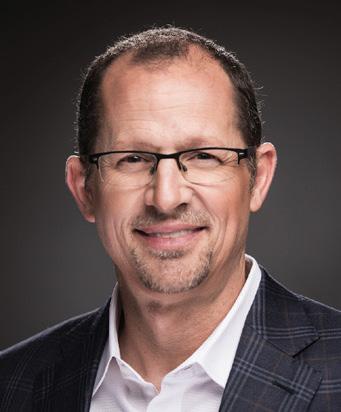
The online learning platform has recently launched Coach, a chatbot tool that plugs into ChatGPT. It answers questions by si ting through and summarising Coursera’s entire curricula.

Maggioncalda o ers up a quick demo to start o our interview. “Can you explain in terms that a 10-year old would understand what a convolutional neural network is,” he asks.
And the AI coach almost instantly responds via text. “Imagine you have a picture of a car and you want to find out where the car is in the picture. One way to do this is to look at small parts of the picture one at a time and see if any of those parts look like a car. This is called a sliding window. A
JEFF MAGGIONCALDA
convolutional, neural sliding window is a way to do this more e ciently using a computer. Instead of looking at every single small part of the picture, the computer looks at groups of small parts all at once.”


Coursera is investing in such generative AI because it’s changing how teaching is conducted, both in person and remotely, in schools and universities, Maggioncalda says. In 2017, McKinsey estimated 15 per cent of work done by trainers, teachers and professors would be a ected by AI based on the existing technology. The arrival of generative AI has pushed that forecast to 54 per cent.
Bloomberg Work Shi t talked to Maggioncalda about remote learning post Covid, the hot skills to learn now and why he’s not switching to a fourday week anytime soon. (Responses are edited and condensed.)
Many people enrolled in online courses during Covid. What does remote learning look like now?
It’s more hybrid. Online learning is now a part of

50 Pic: Getty Images
Interview / AI-based Learning
COURSERA’S CEO WANTS THE COMPANY CHATBOT TO BECOME YOUR PERSONAL TUTOR
almost all educational systems as well as workforce development e orts from governments. Then there’s generative artificial intelligence (AI). The faster things are changing, the more the need to learn new skills.
The pandemic was a huge step forward in how fast things changed. Customers not walking into shops anymore and remote working pushed up demand for digital skills. Now generative AI is another accelerant.
Besides the chatbot, what are the other ways you’re using AI?
We’re helping clients create their own courses on any topic using AI. And AI is also getting very good at translations. We’re translating 2,500 courses into seven di erent languages by the end of the year. This means that people all around the world, including those who don’t speak English, will have access to all these courses that were originally created in English.
What do the top courses tell us about the job market?
AI courses are doing really well. I don’t know how many AI builders we’re really going to have, it’s a lot more the people who are going to be using AI tools. We also see the biggest driver of our consumer segment is people taking courses to switch to digital-based careers like data science, so tware engineering, IT support and digital marketing.
In the UK, for example, we have three million learners (individuals and corporations). That’s up about 20 per cent year on year. The top courses in the UK are foundations of data, foundations of
IN 2017, MCKINSEY ESTIMATED 15 PER CENT OF WORK DONE BY TRAINERS, TEACHERS AND PROFESSORS WOULD BE AFFECTED BY AI BASED ON THE EXISTING TECHNOLOGY...
THE ARRIVAL OF GENERATIVE AI HAS PUSHED THAT FORECAST TO 54 PER CENT
project management, the science of well-being, foundations of user experience, technical support. People are really thinking, I want to make more money, I want to have more flexibility. These digital jobs are in high demand, but you need to be skilled up for them.
Are companies cutting down on training due to recession fears?
If we look at the UK, the proportion of firms intending to increase investment in training and development over the next year has fallen to only 38 per cent of companies in 2022 from 53 per cent in 2021. This is the recession, right? The UK economy has obviously been struggling quite a bit. You’ve got to cut budgets and one of the first places people are cutting is in education.

Besides macro e ects, which take a longer time to show up, we know the UK employer is investing on average half of what the EU employer is investing on skills training. UK employers would need to invest an extra GBP6.5bn to spend the same as the EU average. Days spent in training in the UK are also at an all-time low.
What’s your view on the four-day week and is it applicable for your business?
It would be nice, but it just doesn’t seem practical. We have competitors out there who are working five days or six days a week.
We wouldn’t have been able to build Coursera Coach if we were only working four days a week. It would have taken 20 per cent longer. I don’t think that we have the luxury of working only four days a week when the world is changing so quickly.
Bloomberg

51
We’re helping clients create their own courses on any topic using AI. And AI is also getting very good at translations. We’re translating 2,500 courses into seven different languages by the end of the year. This means that people all around the world, including those who don’t speak English, will have access to all these courses that were originally created in English”
A PARADIGM SHIFT
What has been driving the shift towards online education?
The shi t towards digital education is being driven by a range of factors, including advances in technology, improvements in educational methodologies, changing social and economic needs, and the ongoing impact of Covid-19.
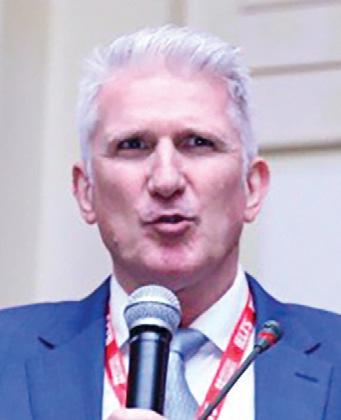
One of the key drivers of digital education has been the increasing availability of technology and digital tools. From mobile devices to cloudbased platforms, technology has made it easier than ever for students and educators to access and share information, collaborate on projects, and engage in learning activities. Teaching and learning methodologies have also evolved to leverage the potential of these technologies rather than just move old analogue practices onto a computer. Another factor driving the shi t towards digital education is the changing nature of the workforce and the skills needed to succeed in today’s economy. As digital technologies continue to transform industries and create new opportunities, there is a growing demand for workers with digital skills, and education systems must adapt to meet these needs.
What are the emerging education trends following the pandemic?
BY KUDAKWASHE MUZORIWA
How is online education perceived in the job market?
Online education degrees are increasingly being recognised in the job market, particularly in industries where skills and knowledge are more important than a physical presence.

According to the QS Graduate Employability Rankings2022, employers are increasingly valuing candidates with online degrees, with employers in the Middle East and North Africa region reporting that they are more likely to hire candidates with an online degree than in previous years.
This shi t is seen as a result of the pandemic, which accelerated the adoption of remote and digital working practices and has led to an increased acceptance of online degrees as a valid form of education. However, it should be noted that the perceived value of online degrees may vary depending on the industry and the specific job requirements.

The pandemic accelerated several education trends, including a greater acceptance of digital technology, flexible learning models, and an increased focus on wellbeing and mental health.
It also highlighted the importance of developing skills for the future, such as critical thinking, problem-solving, and creativity. A survey by the World Economic Forum revealed that 50 per cent of employees will need reskilling by 2025 due to technological changes.
What is the institution doing to support the new academic landscape in the UAE?
We are committed to supporting the new academic landscape by o ering a range of programmes and services. The British Council works closely with schools, universities, and policymakers to provide English language training, teacher training, curriculum development support, and international educational opportunities. Over the years we have been investing in learning and development, for instance in 2019-2020 the
52 Pic: Getty Images
JAMES SHIPTON
JAMES SHIPTON, REGIONAL EXAMS DIRECTOR, MENA, BRITISH COUNCIL, SPOTLIGHTS THE EVOLUTION IN EDUCATION AND HOW THE UAE IS INVESTING EXTENSIVELY TO POSITION ITSELF AS A GLOBAL HUB FOR EDUCATION
council conducted training for over 1,200 teachers and teacher trainers across the UAE.
What initiatives are you implementing to solidify the UAE’s position as an international education hub?
We believe that education is a key driver of economic growth and social development, and we are working closely with our partners in the UAE to support a range of initiatives aimed at enhancing the quality of education and promoting the country’s attractiveness as a destination for international students.
The council is committed to supporting the UAE’s efforts to solidify its position as a leading international education hub. We offer IELTS, the world’s most popular English language proficiency test, which is recognised by over 120 institutions across the UAE for higher education and global migration purposes. One of the initiatives we are implementing is the promotion of the UK’s world-renowned education system in the UAE. Through our network of offices and partner institutions, we are working to build awareness of the UK’s high-quality universities and colleges, as well as the diverse range of courses and qualifications on offer.
The council also supports the development of local talent in the UAE. We are working with local institutions to provide training and professional development opportunities for teachers, as well as supporting the development of English language skills among students and professionals.
Why is the UAE investing extensively in education?
If we look at the numbers, the National Bureau of Statistics reports that the UAE has been investing heavily in education in recent years, with government spending on education increasing from Dhs10.7bn in 2011 to Dhs27.2bn in 2020. This investment is seen as key to achieving the country’s long-term economic and social development goals.
The UAE recognises that education is crucial for economic growth and social development. By investing in education, the country aims to create a highly skilled workforce, attract international talent, and foster innovation and entrepreneurship.
There has been an increase in collaboration between academic institutions in the UAE. Why is it important for the future of education?
The council believes that collaboration between
academic institutions in the UAE is crucial for the future of education in the country. Collaboration can bring together the strengths and resources of different institutions, leading to a more diverse and vibrant education system that is better equipped to meet the needs of students and society.
One of the key benefits of collaboration is that it can help to foster innovation and creativity in education. By working together, institutions can share ideas, expertise, and resources, leading to the development of new approaches and solutions that can improve learning outcomes and enhance the overall quality of education.
It can also help to promote the exchange of knowledge and expertise between institutions. This can be particularly important in the UAE, where there is a growing demand for a diverse range of skills and expertise. By working together, institutions can share knowledge and resources, creating a more interconnected and dynamic education system that is better able to meet the needs of students and the economy.
How can education help achieve the UN’s Sustainable Development Goal 4 (SDG 4)?
Education has a significant impact on the local economy and achieving SDG 4 is crucial for creating a more sustainable and prosperous future for the UAE. According to a report by the British Council, education is an important driver of economic growth, with each additional year of education increasing a person’s income by 10 per cent.
The UAE has made significant investments in education, including the establishment of world-class universities and the development of vocational and technical education, and training programmes, creating a highly skilled workforce, which is essential for a knowledge-based economy.
The country has also made significant progress in achieving universal access to education, with a literacy rate of over 90 per cent and a high enrolment rate in primary and secondary education.
Furthermore, the government has taken steps to promote lifelong learning opportunities for all, including through the establishment of the National Qualifications Authority and the development of vocational and technical education and training programmes.
Overall, education is essential for promoting economic growth and development and ensuring that citizens have access to the knowledge and skills needed to thrive in the 21st century.
53
Interview / Online Education
50 PER CENT OF EMPLOYEES WILL NEED RESKILLING BY 2025 DUE TO TECHNOLOGICAL ADVANCES
IN 2019-2020, THE COUNCIL CONDUCTED TRAINING FOR OVER
1,200 TEACHERS AND TEACHER TRAINERS ACROSS THE UAE
LANDSCAPE AN EVOLVING
The education sector in the GCC has advanced significantly in recent years, with the amalgamation of technology and substantial investments from the government to improve standards. Governments have taken several initiatives such as establishing quality assurance authorities, building favourable policies, encouraging public-private partnerships (PPPs) and technology-driven education, among others. They are also continuing to allocate sizable portions of their budget to the education sector as they look to develop a sustainable environment for economic and social development.
While this made up for the supply side of the industry, the demand side has been driven by a rising school-age population, high per capita income, and rising expatriate population. This
tunity for investors and school operators.

RISE IN STUDENT POPULATION
According to Alpen Capital’s latest report on the GCC education industry, the total number of students in the region is projected to increase by 1.1 million to reach 14.2 million by 2027, growing at a compound annual growth rate (CAGR) of 1.6 per cent from an estimated 13.1 million in 2022.


Enrollments in the pre-primary and tertiary segments are expected to increase at a faster pace as they provide a wider scope of growth due to comparatively low gross enrolments rates.
Enrollment in Saudi Arabia and UAE is projected to grow at a CAGR of 1.6 per cent and 1.8 per cent, respectively, primarily driven by increasing private sector investments to raise the quality of education.
Although public school enrollments will continue to dominate the K-12 education segment, enrollment in private schools is projected to increase at a slightly higher CAGR of 1.7 per cent compared to 1.5 per cent in public schools.
54
Opinion / GCC Education
FROM AFFORDABLE EDUCATION TO DIGITAL TRANSFORMATION, HERE ARE THE KEY TRENDS IMPACTING THE GCC’S EDUCATION SECTOR
ENROLLMENT IN SAUDI ARABIA AND UAE IS PROJECTED TO GROW AT A CAGR OF 1.6 PER CENT AND 1.8 PER CENT, RESPECTIVELY
STEM GAINS GROUND


There are several trends gaining ground across the sector owing to the significant transformation that has been taking place to build a competitive education landscape in the GCC. The pandemic, which accelerated the process of digital transformation, led to an exponential growth in edtech platforms across the region.

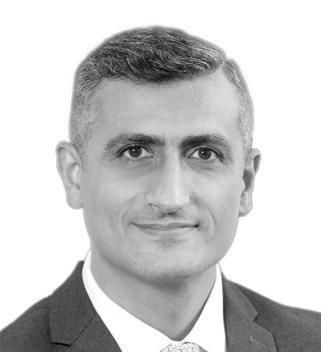
This is enabling schools to provide higher engagement, flexibility, and accessibility in new and relevant ways. Formats such as video-learning, artificial intelligence (AI) based content models and digital libraries are becoming a part of the learning experience. Science, technology, engineering and mathematics (STEM) education is also gaining further importance largely driven by the shi ting job landscape that has evoked the need for a more specialised and dynamic skill set.
Several international schools are integrating STEM in their curricula and running labs that o er a space to explore and investigate. It is an ideal way to provide students with practical hands-on learning experiences and prepare them for a career in a highly specialised field.
A number of foreign colleges and universities, particularly from the UK and US, have successfully set up their base across the GCC to meet the growing demand. Over the past few years, the UAE has established reputed international colleges and universities, and is becoming a global education hub. Similarly, Saudi Arabia and Qatar have also been actively attracting and funding leading American and European institutions to build campuses in the country.
At the same time, local universities from the UAE and Saudi Arabia have been rising in their global rankings based on their education modules
and overall improvements. These developments indicate a marked achievement in quality of education, a key barometer for the growth of the tertiary segment in the GCC.
QUALITY COUNTS AS DOES COST

The demand for quality a ordable schools is on the rise as the cost of education di ers widely based on the curriculum at o er and the infrastructure facilities available. Fees charged by international schools o ering British, American and International Baccalaureate (IB) curricula are the highest while the tuition fee for private schools o ering Indian and Arabic curriculum is relatively lower. Consequently, the demand for Indian curriculum, which promotes skill-based education, is increasing across the region.
Factors such as high cost of construction, inflationary pressure, long gestation period, rising competition, and lack of subsidies are increasing cost pressures and eroding profit margins for private operators in the education sector.
The sector also continues to face a shortage of skilled teachers which is expected to intensify given a healthy pipeline of new international schools set to open in the region. Despite these challenges, growth within the education sector will be driven by rise in population, government support, high per capita income and investments in technology.
There have been several intra-regional mergers and acquisitions (M&A) transactions over the past two years as valuations normalised post Covid-19 and larger operators sought tuckin acquisitions to broaden their geographic reach and increase market share. Going forward, acquiring stakes in edtech platforms is anticipated to gain interest.


Additionally, the rise in demand for a ordable schooling and the need to build digital infrastructure to remain competitive will present interesting opportunities across the region.

55
THE TOTAL
OF STUDENTS IN THE
IS PROJECTED TO INCREASE BY 1.1 MILLION TO REACH 14.2 MILLION BY 2027, GROWING AT A COMPOUND ANNUAL GROWTH RATE OF 1.6 PER CENT 2027 14.2 MILLION 1.6 per cent Compound Annual Growth Rate
NUMBER
REGION
KRISHNA DHANAK, managing director, Alpen Capital
Over the past few years, the UAE has established reputed international colleges and universities, and is becoming a global education hub. Similarly, Saudi Arabia and Qatar have also been actively attracting and funding leading American and European institutions to build campuses in the country”
CONNECTING THE DOTS
MOHAMED ZOHAIR, CO-FOUNDER AND THE CEO OF YASCHOOLS, SPEAKS TO GULF BUSINESS ABOUT THE SAUDI ARABIA-BASED PLATFORM’S ROLE IN BRINGING TOGETHER SCHOOL ADMINISTRATORS, TEACHERS AND PARENTS IN A ONE-OF-A KIND ECOSYSTEM
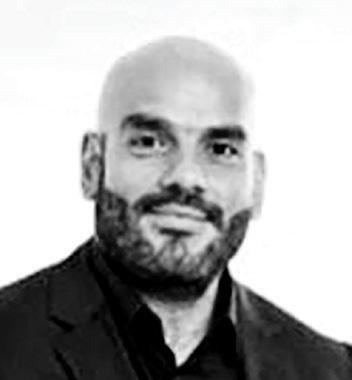
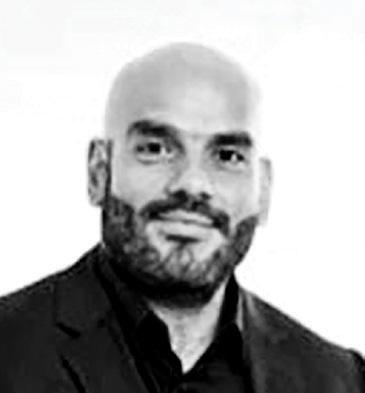 BY MARISHA SINGH
BY MARISHA SINGH
Tell us about YaSchools and its USP.
The initial motivation to launch a platform such as YaSchools was to simplify parental access to school-related information.
The prevailing school data was notably limited and frequently outdated. Even if it existed, it was scattered which meant that one had to look for more than one source to get a full picture.
Additionally, parents did not seem to have a voice. The opinions or the experiences of current parents with the schools their children studied in were unpublished. Which meant that new parents had to do a lot of groundwork, physically visit school facilities to compare and choose the best for their children.
Hence, the main objective was to create a platform that brought all of this information in one place to make it easier for parents to choose schools. This was just the start of the platform as we have gone on to add dozens of other services since then.
Walk us through your platform’s evolution.
YaSchools started as a simple school directory that hosted information of about 200 schools. Our initial aim was to be a platform that informed users and helped them compare between various schools. Soon enough, market trends and feedback led us to add many more services such
WE ALSO USE BIG-DATA MANAGEMENT TECHNIQUES IN ADDITION TO ARTIFICIAL INTELLIGENCE TECHNIQUES
as discounts on tuition fees, facilitating the financing of tuition fees, managing private tutoring, and a specialised marketplace for our partners’ services and products.
We expanded our services to educational companies such as setting up a digital page for each school, enhancing their digital presence, creating a channel to manage communication with parents, managing personal interviews for new students, creating questionnaires, integration with the internal school ERP system and other services.

This database is today a repository of more than 1,750 schools and their facilities and we are now an educational management solutions firm.
What are some educational technology trends you have harnessed for your platform?
Our focus is on using technology based on the process automation concept to save resources (time and cost). We want to ensure educational companies and their administrators can communicate easily with all stakeholders and thus improve the child and the parents’ experience for the better.
We also use big-data management techniques in addition to artificial intelligence (AI) techniques, especially machine learning to ensure that parents receive the information that they need from the platform.
How will you leverage AI in the edtech sector?
We believe the development of the learning process depends on helping students obtain the right knowledge and skills, in addition to the development of educational facilities, those who manage them and interact with students.
Similarly, the development of AI is in its nascent stage and will see significant growth.
We are hence, working to develop several services that are supported by AI to ensure higher accuracy in helping parents obtain the information they need to better educate their children – not only in schools but in other support services such as private education, sports, ancillary learning and self-development.
We are also working to develop a product that will help education companies hire the best talent for their companies through a matching-making mechanism between candidates, job requirements and available jobs.
56
Interview / Edtech Ecosystem
Pic: Getty Images
MOHAMED ZOHAIR
Explain how the convergence of educators, parents and schools impacts the company and its stakeholders.
At YaSchools, our aim is to aid parents in the educational journey that they take as their children grow and develop. It is centered on enhancing the parental involvement in their children’s educational journey as well. This is the point of convergence for our service.
We recently, unveiled the ‘e-Teachers’ platform, empowering educators to create comprehensive profiles and seamlessly stay abreast of updates, employment openings, and even receive direct inquiries for private tutoring from both students and parents.
Additionally, we launched our online marketplace that houses a diverse array of specialised stores catering to the needs of our students. This integral addition substantially bolsters the overall educational experience for students.
What are some of the challenges you anticipate?
Like any startup, our foremost challenge revolves around creating an equilibrium between the influx of incoming requests and our existing operational capacities. We find ourselves confronted with an immensely robust demand within the local market, compounded by entreaties from regional representatives in other markets.
We aspire to provide further financial resources and human competencies to support our team, thereby enhancing the role of YaSchools as an assistant and planner for parents in the local as well as upcoming markets.
Tell us about your funding structure and your plans to utilise it.



We’ve secured a funding of $600,000 courtesy of a consortium of angel investors. A significant portion of this investment will be allocated towards boosting our sales and marketing capabilities.
We will also focus on amplifying our foothold in untapped markets.
On the expansion front, our market research led us to the decision to expand in the Jordanian market. We anticipate the debut of our services in Jordan in the fourth quarter of this year.

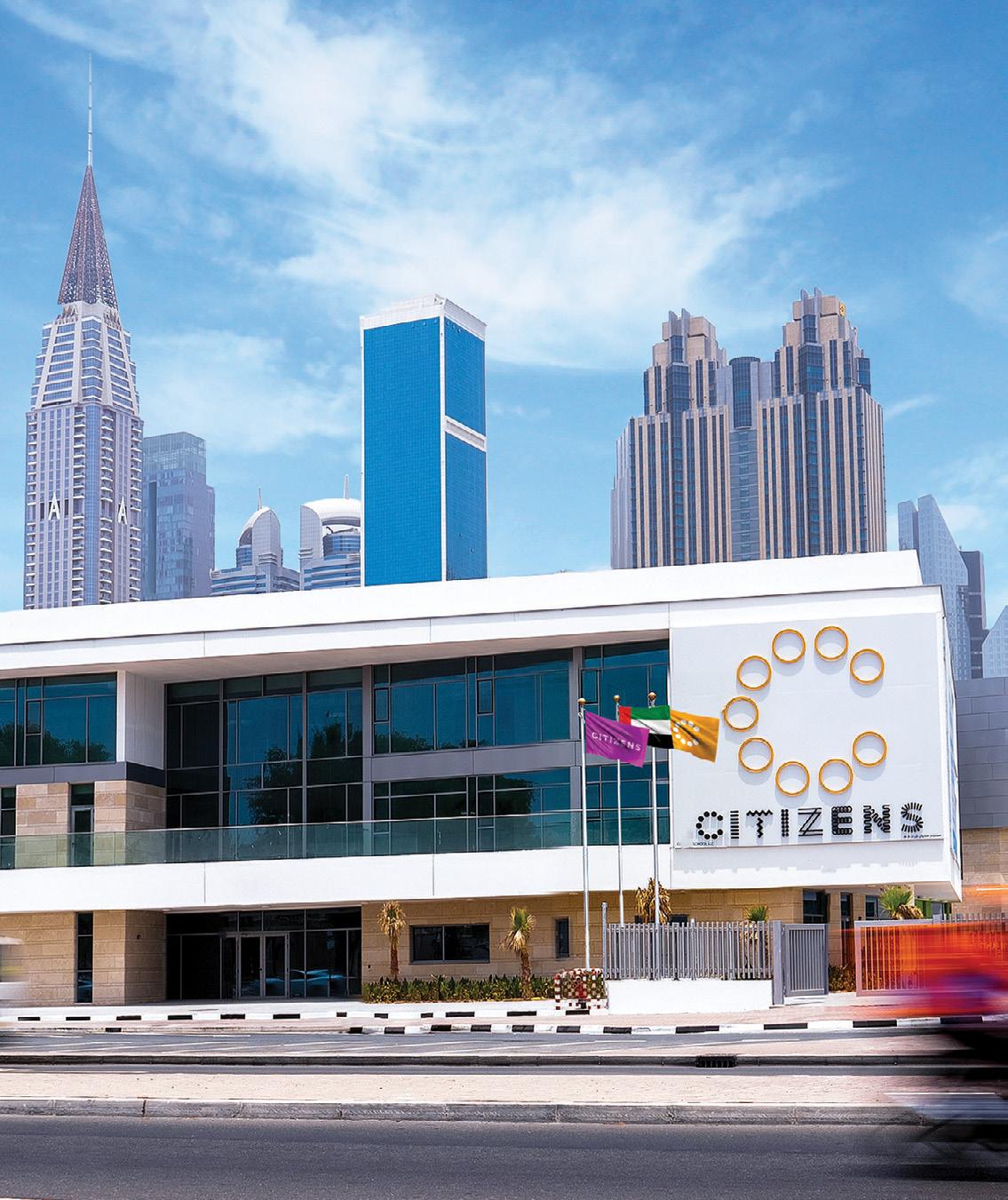
EVOLVING NEEDS CHANGING TIMES,

EXPECTATIONS OF STUDENTS AND SOCIETY ARE CHANGING RAPIDLY, AND SCHOOLS MUST BE ABLE TO ADAPT THEIR CURRICULUMS TO MEET THESE CHANGING DYNAMICS
DR ADIL ALZAROONI, founder, Citizens School






Education is the backbone of any society, and the UAE is no exception. With the pace of technological advancement and changing economic trends, the UAE needs to equip its future workforce with the necessary skills to thrive in the years to come. As the British writer and scholar C S Lewis said, “The task of modern education is not to cut down jungles, but to irrigate deserts” . The World Economic Forum has raised the need for a global framework for shi ting learning content and experiences towards the need of the future, and has coined it ‘Education 4.0’. The pillars of the framework include fostering global citizenship skills, innovation and creativity skills, technology skills and interpersonal skills.

57
Opinion / The Future of Education
Pics: Supplied
The UAE Future of Learning
that memorisation and rote learning should no longer be the primary focus of education.
TECHNOLOGY RULES
Additionally, it has been made clear that schools need to do more to prepare students for the digital world. Artificial intelligence, virtual reality, crypto, metaverse, blockchain and NFTs were the top five technologies chosen by parents as the ones that will have the most significant impact on their children’s future success. Yet less than half of the parents surveyed believe that their child’s education and learning experience is preparing them for these technologies. This suggests that schools need to incorporate these technologies into the curriculum and ensure that students are prepared for the digital world that they will inherit.

LIFE SKILLS IN FOCUS
AREAS FOR IMPROVEMENT

School curriculums have evolved over time, but there are still many areas that need improvement. In many cases, curriculums are still heavily focused on traditional academic subjects and memorisation of facts, rather than developing the critical thinking, creativity, and problem-solving skills that are becoming increasingly important in today’s rapidly changing world. Moreover, the needs and expectations of students and society are changing rapidly, and schools must be able to adapt their curriculums to meet these changing needs.
The UAE Future of Learning 2022 Survey conducted by Citizens School revealed that the UAE’s education system needs to focus on cultivating a more holistic set of skills. While digital literacy is crucial, so t skills such as mental wellbeing, social responsibility, and creative thinking are equally essential. The ability to take exams and tests ranked low on the list of skills deemed necessary for future success, suggesting
Moreover, the survey findings showed that parents want their children to learn skills such as decisionmaking, public speaking, money management, self-care, and entrepreneurship. This aligns with the findings of the KHDA’s future of education study, which emphasises the importance of innovation, and thus entrepreneurship and creativity, in the context of the workplace of the future. These so t skills are essential to thriving in the future workforce and need to be incorporated into the curriculum.
To futureproof the education system, schools need to adopt a more rounded approach to education that focuses on developing both hard and so t skills. This includes incorporating new technologies, teaching so t skills, and ensuring that the curriculum is relevant to the needs of the future workforce.
Schools need to reimagine the traditional classroom and embrace new and innovative ways of teaching that can engage students and prepare them for the future.
In conclusion, the UAE needs to focus on equipping its future workforce with a more holistic set of skills that go beyond digital literacy.
So t skills such as mental wellbeing, social responsibility, and creative thinking are crucial to thriving in the future workforce. Research into the sector can help provide valuable insights that allow us to shape the future of education in the UAE and beyond.
By adopting a more holistic approach to education, schools can ensure that students are well-equipped to succeed in the present and future.
58 Opinion / The Future of Education
ARTIFICIAL INTELLIGENCE, VIRTUAL REALITY, CRYPTO, METAVERSE, AND BLOCKCHAIN AND NFTS WERE THE TOP TECHNOLOGIES CHOSEN BY PARENTS AS THE ONES THAT WILL HAVE THE MOST SIGNIFICANT IMPACT ON THEIR CHILDREN’S FUTURE SUCCESS
2022 Survey conducted by Citizens School revealed that the UAE’s education system needs to focus on cultivating a more holistic set of skills. While digital literacy is crucial, soft skills such as mental wellbeing, social responsibility, and creative thinking are equally essential”
Lifestyle 23
Understated luxury
The Rolls-Royce Cullinan Black Badge’s twin-turbo 6.7-litre, V-12 engine provides 563hp, and is whisper quiet, lest it disturbs the VIPs in the cabin p.66

“With a growing awareness of environmental concerns paired with new global standards, sustainability is no longer a philanthropic quest. For us, sustainability is a mindset and an ongoing process instead of a single activity or event”
Samrath
Introduced in 2018, the HM9 ‘Flow’ pays homage to the automotive and aeronautic designs of the 40s and 50s. Despite its striking exterior, MB&F’s founder Maximilian Büsser considers the engine inside HM9 “exceptional”. This led to the watchmaker encasing the engine in a transparent sapphire crystal, resulting in the latest ‘Sapphire Vision’ edition – HM9-SV.

gulfbusiness.com September 2023 59
SEPT
Bedi, executive director, Forest Essentials
MB&F HOROLOGICAL MACHINE N°9 ‘SAPPHIRE VISION
WHERE LEGACY MEETS LUXURY























UNDERSCORED BY AGE-OLD FORMULATIONS, THE FINEST INGREDIENTS, SUSTAINABLE PRACTICES AND AN ENDURING BRAND PROMISE, FOREST ESSENTIALS IS MAKING ITS PRESENCE FELT ACROSS THE INTERNATIONAL BEAUTY LANDSCAPE. HERE, EXECUTIVE DIRECTOR SAMRATH BEDI, SHARES WHY CUSTOMERS CAN’T GET ENOUGH OF THE NICHE AYURVEDA SKINCARE BRAND



 BY NEESHA SALIAN
BY NEESHA SALIAN













Pics: Supplied Lifestyle / Beauty gulfbusiness.com 60 September 2023
Forest Essentials has reimagined Ayurveda and beauty, putting it on the global map. Tell us about its brand journey and foray into international markets.
Forest Essentials started as a vision to bring Ayurveda and the lifestyle it represents to discerning people who wanted pure and e cacious products for their skin. Our belief has always been that every product must be as enjoyable as it is e ective.
Harnessing this belief along with our continued focus on innovative formulas, we use only the purest of ingredients, sensuous scents and textures, which continue to be factors that drive the success of the brand. Our aim is to keep delivering unique, multisensory experiences to our clientele. This has positioned us as the most credible Indian Ayurvedic beauty brand.
Our key guiding principle for implementation in any international market is to represent India and stay true to its DNA while ensuring that the local customer is at the heart of all execution. We remain determined to use traditional methods of manufacturing that are comparable to anywhere else in the world.
Our key objective is to enhance appeal for our products that are rooted in the ancient science of Ayurveda, by fostering long-term relationships to communicate the brand’s purity, authenticity and e cacy.
Tell us how the company has successfully married age-old Ayurvedic processes with modern beauty trends. From raw cane sugar to our steam distilled pure oils, everything is made in the traditionally old-fashioned way, according to Ayurvedic tenets.

All our products are infused with natural and the most authentic ingredients, sourced and plucked in their most potent form at certain hours of the day, to ensure their essence is not lost during the long and painstaking production processes. This way, the herbs add their benefits in the purest form, with appealing textures and scents.
What has contributed to Forest Essentials’ incredible success and popularity in the Indian luxury skincare market and how has the brand’s overseas market share expanded?

Back in the year 2000, when one thought of Ayurveda, the associations that came to mind were o ten contrasting: “medicinal but not enjoyable”, or “e ective but not
pleasing”. There was little to no emphasis on the pleasure of use; quality was overshadowed by low-cost production, and chemically propelled ingredients made the process more manageable and economical compared to freshly sourced, seasonal ingredients. There was no market for formulations with pure ingredients using Ayurvedic principles. “We can’t afford to produce these” and “no one will buy these” were statements that we frequently encountered early on in our brand journey.
However, we believed that there was an undeniable market gap, and if a product was pure and had the finest quality ingredients, people would buy it.
For years, we worked with vaids (Ayurvedic doctors) and modern biochemists to curate a wide range of products using fresh herbs, hand-pressed oils, medicinal roots, and precious flowers, prepared according to ancient formulations with exacting standards. The products sold well and soon became bestsellers contrary to popular perception.
The idea was to create an Ayurvedic product that transcended its archaic associations; the intent was to make age-old recipes available to the contemporary consumer in the most pleasurable and sensorial form. The thought was to revolutionise Ayurveda in India. This marked a revolutionary time for the Indian beauty industry, as we created a new segment known as ‘Luxury Ayurveda’, which had never existed earlier.
Tell us how the brand sources its ingredients and how sustainability plays a key
role in it.
While sustainability and the ‘clean and
gulfbusiness.com September 2023 61 Lifestyle / Horology
“The idea was to create an Ayurvedic product that transcended its archaic associations; the intent was to make age-old recipes available to the contemporary consumer in the most pleasurable and sensorial form”
Samrath Bedi, executive director, Forest Essentials
green beauty’ movement have gained momentum in recent times, these philosophies have been inherent in the DNA of the brand since its inception, almost 20 years ago. The most fundamental Ayurvedic standard for pure, fresh and natural ingredents is that “if you cannot eat it, do not use it on your skin”.
With a growing awareness of environmental concerns paired with new global standards, sustainability is no longer a philanthropic quest. For us, sustainability is a mindset and an ongoing process instead of a single activity or event. Since the inception of the brand, sustainability has been at the core of everything we do, and we have continuously given thought to the entire product cycle, from the sourcing of natural ingredients from responsible and local farmers to our award-winning green manufacturing facility design ensuring a zero carbon footprint.
Our ingredients are sourced from local, small-scale farmers, traditional artisans
and rural co-operatives that are experts in their fields. They use environmentally sound farming practices and have organic farms around Lodsi, our manufacturing base in Uttarakhand.
What are some of Forest Essentials’ bestselling products?
Our Soundarya collection, which is infused with pure 24 karat gold, has been recognised as one of the most effective and iconic collections in the Indian beauty industry. Many of our hero products are cherished by consumers from all over the world. These include the Intensive Hair Repair Masque, Sea Salt Crystal Rose Body Polisher, Advanced Youth Formula with Date and Litchi, along with our selection of massage and after bath oils.

Additionally, we recently introduced a new body care collection – specially for the
GCC market – infused with lime, saffron and oudh, which is performing very well.
How has the company leveraged e-commerce to drive its growth and expansion?
We have been extremely adaptive to the surge in e-commerce traffic and demand on our online platforms is continous. We now ship to more than 100 countries from our global website and our international orders account for 30 per cent of the online business with an extremely high repeat rate.
What are the skincare trends influencing the brand’s new products?
What is wonderful about Ayurveda is that it is a lifestyle, and it presents a collaborative approach to organic beauty that works on three levels – outer perfection, inner beauty and ‘ojas’ (Sanskrit for ‘inner fire’) reflected in lustrous hair, glowing skin and clear shining eyes, radiance and vitality.
The DNA of Forest Essentials really is its purity and authenticity, so if you keep that as a cornerstone as you add to any range, it permeates through and sets you apart. Over the years, our customers have become very dedicated to the brand’s formulations rendering our products as ‘must haves’ on their shelves.
What
can we expect from Forest Essentials in the near future?
We recently opened two stores in Dubai (in May) and in Kuwait (in June). We will be opening more stores across the GCC, including Abu Dhabi and Bahrain, in the coming months.
Our personal vision is to see Ayurveda move from an alternative science to a mainstream science. It should not only be based on just texts and folklore but also be given a modern context with global standards and policies.
Most of our customers today, across all ages, have one thing in common: they all want to invest in inner and outer beauty and in the long-term sustainability of the environment. Quality is key and while the packaging might be attractive, they are very result oriented and will only come back if the brand delivers. And that’s what we aim to keep doing.

gulfbusiness.com 62 September 2023
“Our personal vision is to see Ayurveda move from an alternative science to a mainstream science. It should not only be based on just texts and folklore but also be given a modern context with global standards and policies”
Boosting brain health
Aviv Clinics Dubai, a DP World subsidiary and the largest medical hyperbaric oxygen therapy facility in the world, have announced their revolutionary Executive Health and Performance Check-up redefining how executives and business leaders perceive their cognitive and physical wellbeing.



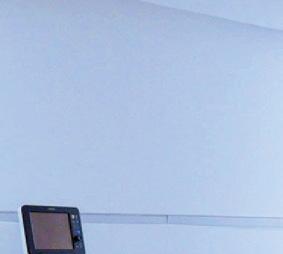



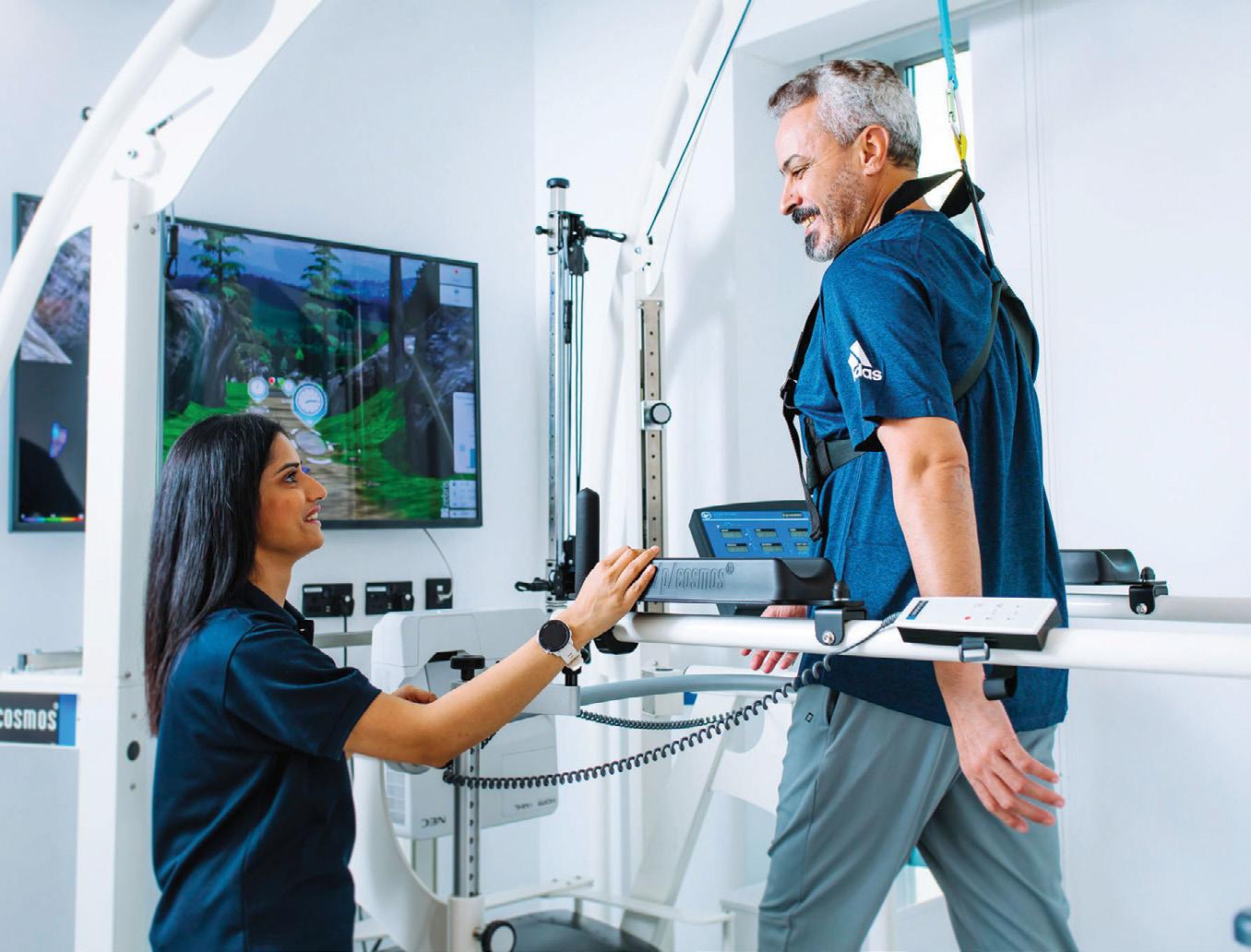
Unlike standard annual executive health checks, Aviv evaluates various aspects of brain function using advanced brain imaging and a battery of neurocognitive tests. This comprehensive assessment empowers senior executives and leaders with their health and performance data

A TWO-DAY DEEP DIVE

On day one, a dedicated team of experts will conduct a variety of medical examinations, including extensive blood tests, physician-led physical tests, vital signs, electrocardiogram (ECG), spirometry and cardiopulmonary exercise tests to measure lung function. Advanced brain imaging technology captures detailed highresolution magnetic resonance imaging (MRI), providing a comprehensive view of



cerebral structure while detecting subtle indicators of age-related degeneration. Meanwhile, intensive computer-based cognitive testing will be conducted by a specialised neuropsychologist along with a thorough interview to assess cognitive functions, including memory, attention, information processing speed and more.

This evaluation is additionally complemented by a detailed nutritional assessment and a precise body composition analysis, ensuring alignment between dietary habits and performance goals. Subsequently, on the second day, specialist consultations and personalised recommendations are shared with
insights into cognitive and physical abilities, areas for improvement and potential signs of age-related decline.


A GOOD INVESTMENT
As the clinics’ experts say: “Envision the assurance that accompanies you as you walk into important meetings –armed with the knowledge that your mind is sharp, your body is at its best, and your health is driving your success.”
To sum it up, Aviv Clinics Dubai’s Executive Health and Performance Check-up isn’t just an annual health check-up; it’s an investment in your success and your future health.


BRAND VIEW
The Aviv Clinics medical evaluation programme has opened a new frontier in medicine, enhancing brain and physical performance, and boosting the reversal of the biology of ageing
Pics: Supplied
Envision the assurance that accompanies you as you walk into important meetings – armed with the knowledge that your mind is sharp, your body is at its best, and your health is driving your success”
Calling all podcasters and content creators!










Whether you are looking to record, edit or manage your podcast, our fully equipped podcast and video recording studio has it all.

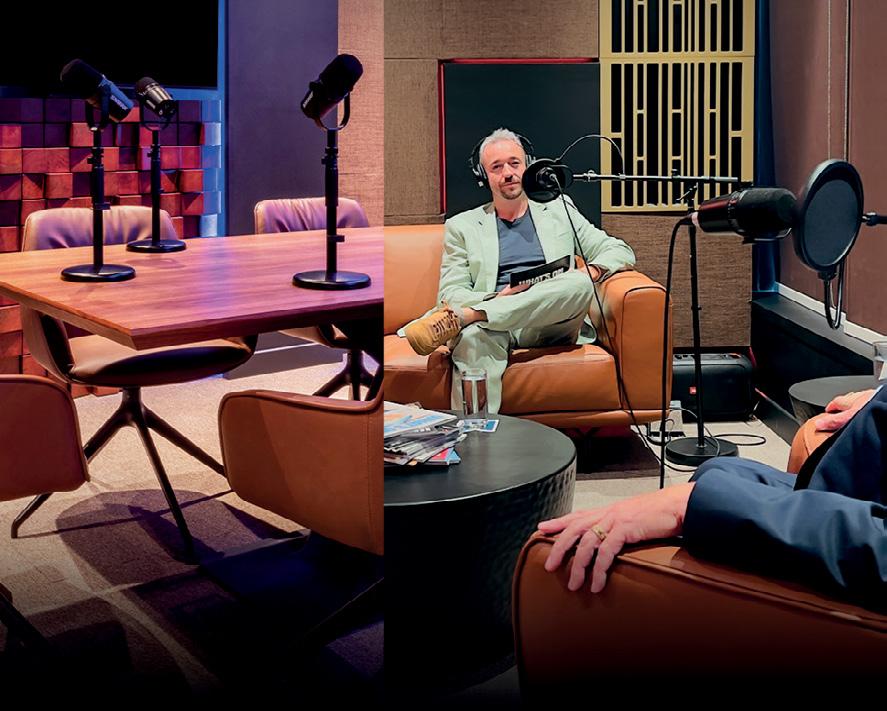
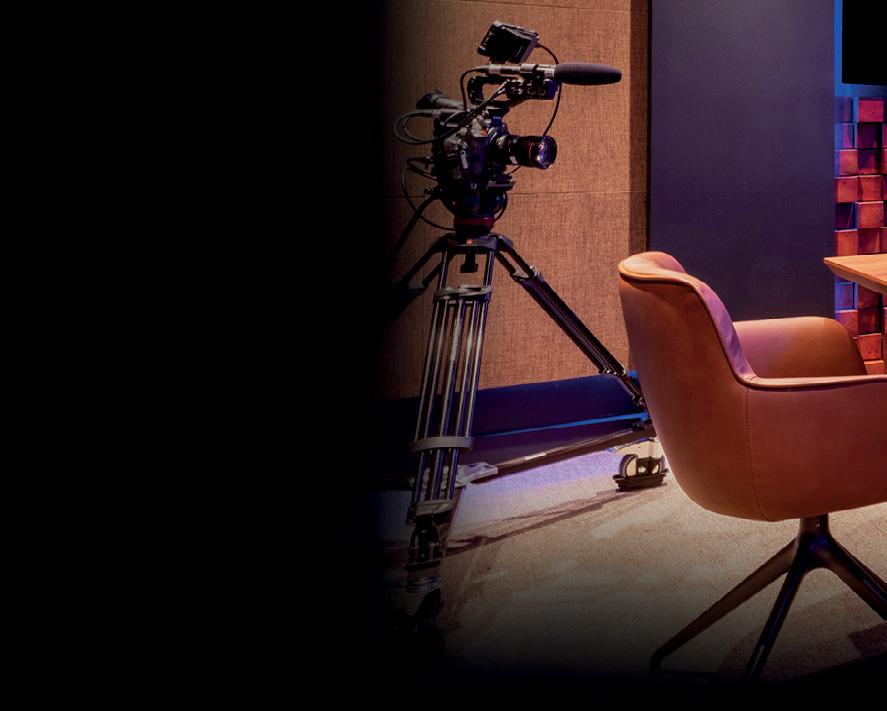

+971 4 427 3000 | podcast@motivate.ae
YOUR STUDIO motivatemedia.com
BOOK
Productive partnerships, seamless solutions
Thanks to a collaboration between Mastercard and Checkout.com, Careem Pay has integrated Mastercard
Send to enable customers in the UAE to access near real-time payments into their Careem Pay wallets.
This development will make it quicker and more convenient to use the Careem app to transfer money and access daily services.
FOCUSED ON SPEEDY AND EASY-TO-USE SOLUTIONS








Unlike a conventional bank transfer which takes at least several hours or even days to complete, Mastercard Send enables people and organisations to send and receive money around the world in near real time, offering speed, convenience, and security.
Mastercard Send is available in 108 countries around the world and is being


rolled out in the UAE with Careem Pay, the financial technology arm of the Middle East ‘Everything App’, Careem. Mastercard Send is paving the way for innovative payment flows in the UAE, such as fast refund for marketplaces, disbursements for retail and delivery industries, as well as new P2P and international money transfer experiences.

PARTNERSHIPS THAT COUNT
Amnah Ajmal, EVP, Market Development, EEMEA, Mastercard, says: “We are delighted to join forces with Checkout. com and Careem to strengthen the
presence of Mastercard Send in the region. In line with our commitment to driving digital transformation across the markets we serve, Mastercard is proactively working with our partners to enhance the choice of innovative payment options available to consumers. We will continue to expand our partner network as we scale Mastercard Send across different segments and use cases.”
“As one of the first Mastercard Send partners in the UAE, we will be able to offer advanced payment services to our customers and provide a seamless user experience during wallet topups. We are dedicated to collaborating with Mastercard to explore new use cases and raise awareness about the many benefits of Mastercard Send among merchants for both funding and disbursements,” says Remo Giovanni Abbondandolo, general manager for MENA at Checkout.com.
Ahmed Salahy, director, Strategic Partnerships, Careem Pay adds:
“The Mastercard Send solution will help Careem Pay fulfill part of our purpose and promise to customers to simplify their payment experiences and access to fintech products.
“Careem Pay enables customers to top up their wallet, transfer and receive money at the click of a button and pay for products and services both on and beyond the Careem’s Everything App.”
BRAND VIEW
A new Mastercard collaboration with Checkout.com is enabling instant wallet top-ups for Careem customers
As one of the first Mastercard Send partners in the UAE, we will be able to o er advanced payment services to our customers and provide a seamless user experience during wallet top-ups”
Supplied
Amnah Ajmal
Pics:
IMPOSING AND IMPECCABLE

WE ROAD TESTED THE METTLE AND MIGHT OF THE ROLLS-ROYCE CULLINAN BLACK BADGE AND CAME AWAY IMPRESSED – AS EXPECTED
BY SHIVAUM PUNJABI

The benchmark of luxury has been redefined with the RollsRoyce Cullinan Black Badge. It leaves onlookers in shock and awe. It is commanding, opulent, sleek and while it may be hard to visualise –also geared to go o -roading.


While the Cullinan has been around since 2018, the Black Badge version was launched at the end of 2019 and start of 2020. However, due to Covid-19, deliveries started in the region around the end of 2021 and the beginning of 2022.


THE LOOKS OF IT


The front end of the Cullinan Black Badge





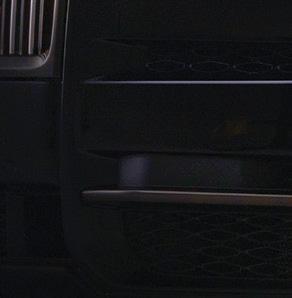



has signature Rolls-Royce elements, such as the vertical grille, headlights and, obviously, the Spirit of Ecstasy. The side profi le has little to show o except for the signature Rolls-Royce suicide doors leading to the opulent cabin and the optional coach stripes, which are hand-painted by a master artisan – and yes, his only job is to paint these lines perfectly on Rolls-Royces.


The front and sides of the car are dramatic as is the rear. At the push of a button, the rear splits open from the centre, revealing a spacious boot with, believe it or not, two automated leatherwrapped seats with a pop-up table known






as the ‘Viewing Suite’. With the Black Badge, external elements such as the grille and Spirit of Ecstasy get coloured in a darkish shade, making them stand out even more. One of the most significant advantages of buying a Rolls-Royce is that you are spoilt for choice when it comes to customisations. Rolls-Royce takes its customers’ wishes very seriously and will go to great lengths to ensure these are delivered.
THE INSIDE STORY















The vehicle’s cabin is the epitome of luxury and refinement. The leather used is thick, luscious and of the highest quality. The


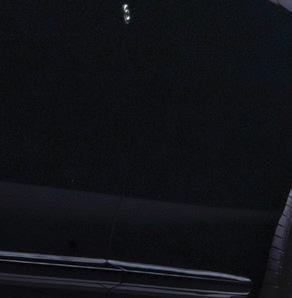








gulfbusiness.com 66 September 2023 Lifestyle / Auto Review
Auto Review
lambswool carpet is designed to let your designer shoes sink in comfortably, making your feet feel as if they are in heaven.
There’s ample space inside. You can spec the Cullinan with an optional two-seat layout for the rear, making a luxurious setting even more comfortable and elegant with proper seat adjustments and massaging features. Another showstopper is the signature Starlight Headliner, featuring thousands of minute fibre optic lights, that transform the roof’s interior into a spellbinding display of a star-lit night sky. These lights also mimic a comet dash across the roof.


The cabin is not just lavish and plush, it is “quiet” as well. If you could hear a pin drop, it would probably be inside the Cullinan.
Rolls-Royce leads the world in NVH (noise, vibrations and harshness) technology, ensuring its passengers enjoy a serene, noise-free driving experience. The British carmaker also o ers interior customisation options for its select clientele.

POWERFUL PERFORMANCE
To propel a behemoth like the Cullinan around, you need something powerful, and Rolls-Royce has bolstered it with a twin-turbo 6.7-litre V12 engine producing 592hp in the Black Badge edition and 563hp in the regular Cullinan, if you can call it that.
The vehicle can do 0-100 kph in 5.1 seconds and comes with AWD (all-wheel drive) as standard. Rolls-Royce went to great lengths to prove the off-road
capability of the Cullinan. It rides on an air suspension that receives information from a road-scanning camera and automatically adjusts the vehicle’s height to compensate for road conditions. Being a Rolls-Royce, it breezes across roads; using mundane words such as ‘drive’ feels oddly inappropriate for this iconic vehicle. Passengers barely feel a thing, and the level of comfort is incomparable.
THE VERDICT

The Rolls-Royce Cullinan epitomises luxury, presence, style and pedigree. No other vehicle can compete with it except those in Rolls-Royce’s stable.

Prices start at Dhs2.1m; there is no upper limit, as Rolls-Royce will spec the car to customers’ requirements.


THE VEHICLE CAN DO 0-100 KPH IN 5.1
gulfbusiness.com September 2023 67 Pics: Supplied
“There’s ample space inside. You can spec the Cullinan with an optional two-seat layout for the rear, making a luxurious setting even more comfortable and elegant with proper seat adjustments and massaging features”
SECONDS
Reimagining property in a digital world
The UAE property market has boomed after a swift postpandemic economic rebound and relaxed residency rules.
With this exponential growth, the value chain gaps in the real estate industry today present numerous opportunities to embrace digital transformation and shape what the ecosystem will look like over the next 10 years.
Digitalisation is rapidly changing the world as we know it – transforming how we work, consume and interact – and the real estate sector is no exception.
Real estate stakeholders such as developers, brokers, agents, investors and property managers should harness innovative technologies to enhance data utilisation, improve reporting capabilities and offer a unified and dependable data source.
This strategic shift allows professionals to maintain a competitive edge,
prioritise strategic business objectives and deliver an enhanced customer experience. The UAE real estate market is growing rapidly, with new developments being built all the time.
This creates huge opportunities for property management solutions companies (proptech) such as Yardi to provide innovative solutions to meet the needs of investors, sellers and end-users.
The global proptech market has grown significantly over the years. It is projected to grow at a compound annual growth rate (CAGR) of 9.3 per cent from $19.6bn in 2023 to $48bn by 2033, according to Future Market Insights.
YARDI IN THE MIDDLE EAST
Yardi prides itself on the continued innovation of its platform with cloudbased, mobile-ready solutions that help clients streamline and modernise business processes that add value to

every aspect of the real estate lifecycle. The company has grown exponentially over the past 10 years in the Middle East to become the leading provider of property, asset and investment management software and mobile apps for all types and sizes of real estate companies and portfolios.
The company’s cloud-based technology helps property and asset managers automate processes, drive efficiencies and reduce costs while providing business intelligence to help minimise risk and improve strategic decision-making.
Yardi started its regional operations in 2012, with two employees and a handful of clients. Today, the company employs more than 80 dedicated professionals and works with over 100 clients in the Middle East, making it one of its fastest-growing regions.
The growth in the UAE property market is creating opportunities for proptech companies such as Yardi to provide innovative solutions that meet the needs of investors, sellers and end-users
Pics: Supplied
The global proptech market expected to grow $19.6bn in 2023
“We launched our flagship product, Yardi Voyager, in 2012 and almost immediately saw high demand across multiple vertical markets. We replaced customised solutions with a softwareas-a-service platform that fulfils all business operation requirements virtually and out of the box. This allowed companies to focus more on their business and worry less about the tools,” explains Said Haider, regional director of Middle East Sales, Yardi.
Yardi is dedicated to developing and supporting software for the region’s real estate industry with a proven track record of success across retail, commercial and residential real estate.
Almost 90 per cent of retail and commercial space in the UAE is operated and managed on the Yardi platform.
We launched our flagship product, Yardi Voyager, in 2012 and almost immediately saw high demand across multiple vertical markets. We replaced customised solutions with a software-as-a-service platform that fulfils all business operation requirements virtually and out of the box. This allowed companies to focus
Given the dynamic nature of the real estate sector, which demands adaptability and real-time access to data, Yardi’s endto-end solutions are highly scalable and cater to various real estate requirements.
The company offers a range of functionalities, including property management, accounting, leasing, maintenance, budgeting, forecasting, marketing, CRM and more.

“We have successfully identified and built requirements within the region into our products to provide clients with innovative technology solutions that will fundamentally change how we live, work and play,” says Haider.
SUCCESS STORIES
Yardi’s solutions have streamlined and automated processes for Al Futtaim Malls, leading to significant time savings. They have saved over 30 hours of data gathering and strategic planning per budgeting cycle, reduced the leasing planning cycle by 40 per cent, and achieved a 50 per cent reduction in time spent on automatic reporting.
“Yardi’s solution for budgeting and forecasting not only saves time during planning cycles, but also promotes user accountability, data reliability and represents one source of truth for forecast
and budget revenue. The output is also customised as per our needs, and we could not be more grateful for that,” says Ian Mollon, general manager of Retail, Finance & Investment at Al Futtaim.
The company’s innovative solutions enabled Dubai’s Emaar Properties to shift from reactive to proactive business planning, empowering data-driven decision-making. This has enabled 50 per cent faster reporting through automation, a 40 per cent reduction in the leasing planning and approval cycle, and a 35 per cent improvement in the lead-to-deal cycle.
“Yardi’s SaaS platform not only enabled us to focus on the core business but also helped standardise the property management software across the group operations both locally and internationally,” says Binoo Joseph, chief information officer at Emaar Properties
“This enabled us to manage retail, commercial and residential portfolios on one single unified platform.”
Furthermore, property investment firm Qatari Diar’s adoption of Yardi’s advanced solutions has significantly contributed to the company’s overall expansion strategies and increased profitability.
“Based on thorough market research, Yardi’s platform stood out as the only cloudbased, end-to-end, fully integrated solution which allows us to manage our entire business lifecycle, including operational, financial, leasing and maintenance activities all in a single database,” said Adnan Al Emadi, head of Asset Management at Qatari Diar.
By enabling data-driven decisionmaking and adopting a more informed risk management approach, Qatari Diar has experienced substantial benefits. These success stories are a clear indication of how Yardi’s solutions are disrupting the real estate and property management sector.
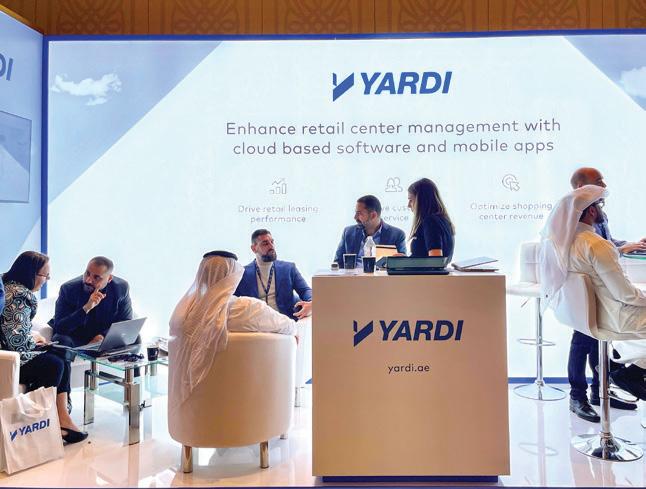
more on their business and worry less about the tools”
BRAND VIEW
Yardi’s solution for budgeting and forecasting not only saves time during planning cycles but also promotes user accountability, data reliability and represents one source of truth for forecast and budget revenue. The output is also customised as per our needs, and we could not be more grateful for that”
The SME Story


A dedicated hub for the regional startup and SME ecosystem
Unlocking the potential of technology
We highlight the journeys of two innovative startups that have leveraged technology to address challenges faced by communities and businesses

scalable technology platform was no easy feat. We needed a system that could seamlessly integrate with various online sales channels, process real-time data, and deliver actionable insights. It demanded substantial investment and constant refinement to meet the high standards we set.
What inspired you to start Growdash?
The idea for the business stemmed from our experience working in the food delivery industry, with Talabat and Deliveroo, and witnessing the challenges that restaurants faced in e ectively leveraging data to drive growth. The turning point was when we realised the immense potential of analytics and business intelligence in transforming the way restaurants operate and make data-driven decisions. The motivation to start Growdash came from a deep passion for empowering restaurants with advanced tools to maximise their sales and profitability.
Fuelled by a change in consumer behaviour, particularly driven by the pandemic, it is projected that by 2025, online sales channels will contribute to more than 50 per cent of a restaurant’s business.

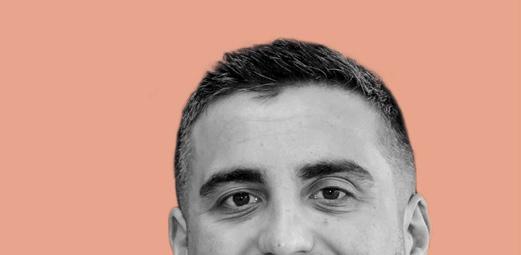
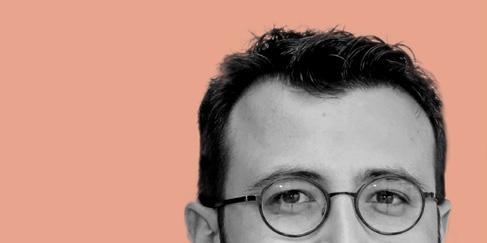
The adoption of a data-driven approach is essential for restaurants to gain insights, improve e ciency, enhance customer relationships, optimise menus, and increase revenue while striving to remain profitable in a super competitive environment.
What were the challenges you faced in the initial stages?
We encountered several significant challenges that truly tested our determination and problem-solving abilities. The restaurant industry is incredibly dynamic and competitive, with unique pain points that needed addressing.
Understanding the specific needs of restaurant owners and operators was crucial to developing a solution that could make a meaningful impact. Creating a robust and
Introducing a data-driven approach and convincing restaurant owners to embrace it, required building trust and showcasing the value of our solution. We had to demonstrate that our platform could genuinely empower them to drive growth and profitability. Like any startup, securing su cient funding to fuel our growth was also a significant challenge. We needed financial support to invest in technology development, marketing e orts, and expanding our team.
The restaurant analytics industry already had established players, and we faced competition from other companies vying for market share. Standing out in a crowded landscape and showcasing our unique value proposition was essential.
Assembling a team of talented individuals who shared our vision and passion was critical. Finding the right mix of skills and expertise, especially in the early stages, required careful selection and negotiation. Our success depended on forming partnerships with online sales channels like Talabat and Deliveroo. This involved strategic negotiations and
gulfbusiness.com 70 September 2023
SEPT 23
INTERVIEW
Sean Trevaskis and Enver Sorkun, founders, Growdash
seamless integration to provide the best possible service to our clients.
Our journey has taught us the value of resilience, adaptability, and relentless pursuit of our vision, making Growdash the transformative platform it is today.
Can you explain Growdash’s business model?
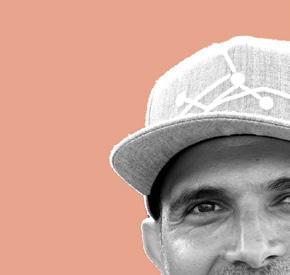
We operate on a subscription-based business model, providing restaurants with tiered pricing plans to access our platform’s comprehensive analytics and features. We o er real-time data insights, advanced analytics and actionable recommendations, allowing restaurants to make data-driven decisions for growth and profitability.
Our subscription model ensures that restaurants have full access to our platform’s capabilities, empowering them to optimise their online sales channels, enhance marketing campaigns, and drive bottom-line profitability.
Growdash’s solution seamlessly integrates with popular online sales channels like Talabat and Deliveroo. This integration streamlines the data aggregation process, making it easy for restaurant owners and operators to access and interpret the data, ultimately improving their online sales performance.
What are your plans to raise capital and expand in the region?
We have just closed a $750,000 pre-seed round of funding led by Flat6Labs. The round also included participation from Plus VC, Judah VC, TPN Investments as well as a list of angel investors, including former Talabat CEO, Abdulhamid Alomar, and serial entrepreneur, Zeid Husban. We also plan to raise our seed round in Q4 this year.

We will use our recent funding to execute our ambitious expansion plans across new markets and broaden our client base. We are actively exploring opportunities to launch in new markets such as Qatar and Saudi Arabia.
Our expansion strategy is focused on markets where online food delivery and ordering are thriving and where restaurants are seeking advanced analytics solutions to drive growth.
What inspired the creation of Mruna?
Mruna is a loose translation of the Arabic word for resilience. Launched in 2019, we o er a multitude of services catering to ‘urban resilience’, including a decentralised solution for wastewater treatment. The idea to start the company can be traced back to when I was appointed as a sustainability consultant at the Dubai Expo 2020 project in 2018. My role was to achieve the CEEQUAL Sustainability Certification Credential for the project’s infrastructure. During this time, I witnessed firsthand the amount of time, energy and resources that went into building a sewer network.


Traditional wastewater utilities consist of a centralised plant attended by a small army of skilled operators and a vast sewer network. Surprisingly, 80 per cent of the construction cost is for the sewer network, which includes pumping stations, concrete sewer lines, precast manholes and engineers to get the job done. This got me thinking about why we spend a fortune to send precious water many kilometres away to a treatment plant and then bring it right back in a tanker to irrigate the landscaping. This process has a high carbon footprint and is expensive to boot.
I also observed similar practices in Lebanon, where we have our headquarters, and decided to reimagine our relationship with urban water management.
Tell us about your o ering and its USP. It’s very expensive to connect communities to sewer networks even in a country such as the UAE, where you see
billions of dirhams being spent on building mega infrastructure. Wastewater from residential and commercial areas is usually collected in underground tanks with vacuum trucks transporting the wastewater to treatment facilities. Annually, 270,000 such trips clog the streets of Dubai.
Increasingly, businesses are looking to save water and achieve their net zero goals. Reusing water – instead of paying to send it across town to a plant – is preferable. However, conventional, centralised solutions are expensive and o ten an eye sore. This is where we step in. Our BiomWeb solution is a modular decentralised wastewater treatment system that treats water on-site. We o er it as a service and a product, so we can either install and operate the system for the client or sell them the equipment. We capture the entire value chain from drain to drip irrigation in one seamless service. The solution consists of three components:
1. Patented PP (polypropylene plastic) tanks that hold water-loving plants (creating an aquatic habitat) that break down organic compounds
2. Integrated digital sensors and pumps 3. A remote monitoring app that dynamically controls the process (drain to drip irrigation)
Our team has developed the so tware and manufactures the systems in-house. Our business model mainly focuses on providing the solution for a monthly fee.
Give us an overview of your funding and how you plan to utilise it. We have received funds, awards and equity-free support from accelerators, including Berytech in Lebanon, CEWAS in Switzerland and the Global Infrastructure Hub in Australia. Most importantly, our key customers in the humanitarian space (UNICEF), and real estate development (Aldar), have
OUR BIOMWEB SOLUTION IS A MODULAR DECENTRALISED WASTEWATER TREATMENT SYSTEM THAT TREATS WATER ON-SITE
gulfbusiness.com September 2023 71
The SME Story
Ziad Hussami, co-founder, Mruna
developed innovative programmes that have helped us circumvent typical procurement hurdles. Using our grant money we opened our own manufacturing facilities, improved our unit economics, and our ability to quickly iterate and improve our product designs to our clients’ needs.
I am proud to say that we are now a revenue-generating company and licenced to operate in Abu Dhabi, Dubai and Sharjah.

In the near term, we will raise debt to service our clients and establish traction across the Emirates. In the medium term, we will raise our first seed round to scale our service model in Saudi Arabia,
BRAND VIEW
upgrade our factory to improve our unit economics, and enhance our tech to exploit machine learning.
Any expansion plans in the pipeline?
Our expansion plans are primarily focused in the UAE, where we are working with our clients and stakeholders to support the adoption of a circular water management process sensitive to the region’s climate and needs. In the near term, we plan to make sewage trucks obsolete with onsite water recycling to reuse water for gardening. In the long term, we want to help our clients design new communities
Mission wellbeing
Gary Blowers is on a “lofty’ mission, and it is to help people put their wellbeing first. He founded the Dubai-based startup LVL Wellbeing with the primary goal of changing habits among employees and employers, which includes prioritising their wellbeing and avoiding what he experienced years before.
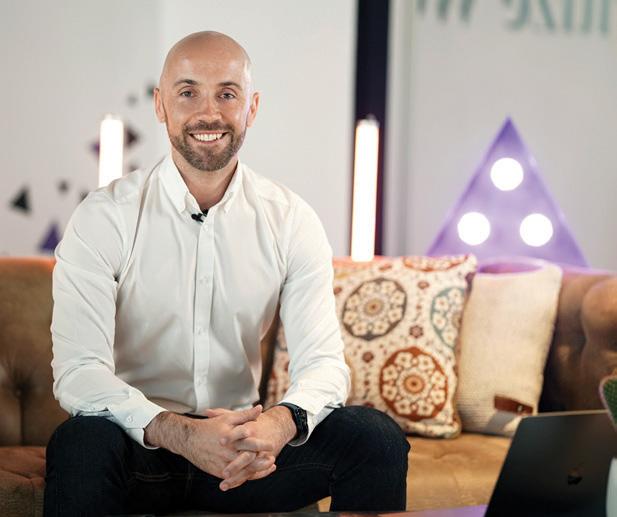
HIS JOURNEY
Prior to starting LVL, Blowers ran a marketing business that worked with multinational companies and government entities. Through (in his own words) poor prioritisation, Blowers burnt out in 2017 after working too many hours per day, not sleeping enough and not keeping up with sports and exercise, which had been part of his daily life up until that point. It was at this low point that Blowers decided something had to
change and that’s when he founded LVL Wellbeing, the UAE’s pioneering B2B wellbeing app that enables employees to prioritise their health - both physical and mental - around their working lifestyle. Blowers believes that taking time during a busy workday to invest in a healthy body and mind isn’t a professional liability but a benefit. It can improve productivity, professional relationships, and long-term wellbeing.
BUILDING THE BRAND
Under the leadership of Blowers, LVL Wellbeing has pioneered a holistic and integrated approach to workplace wellbeing. The company has formulated partnerships and associations with some of the most prominent organisations in the region, focusing on employee wellbeing and building an
based on our nature-based wastewater treatment systems. Last year, we installed our first system as a service for Aldar, Abu Dhabi’s largest real estate developer. This year, we are already looking at installing systems for new green communities.
How has MBRIF helped you with your business?

Since joining MBRIF in 2022, we have received valuable training from experts in product development, marketing, sales and pitching. It has helped us spread our wings and engage with the overall business ecosystem in the UAE.
identifiable return on investment.

identifiable return on investment. Dubai-based members can also benefit from the state-of-the-art LVL Downtown studio to access on-demand mind and body wellbeing sessions.
FUNDING ITS FUTURE
In August, LVL Wellbeing closed a series A funding round of $10m led by Abu Dhabi-based Multiply Group. The funds will fuel further development of the app and its features. It will support the launch of its Arabic language app, and drive the company’s expansion into Saudi Arabia as part of its organic regional growth plans. The funding round concluded after several new business wins, including an exciting new hospitality partnership.
Visit lvl-wellbeing.com for more updates.
gulfbusiness.com 72 September 2023
LVL Wellbeing’s founder Gary Blowers is focused on disrupting workplace wellness in the region
The SME Story
Packed with potential
Saudi Arabia, a nation traditionally known more for its natural resources, is now staking its claim as a global fintech leader. The scale of its leap in digital development, as well as its sheer pace, has been extraordinary.
This marks a national journey towards its Vision 2030 initiative, a blueprint for socio-economic reform, with one part of the vision being to triple the kingdom’s fintech firms and digitalise 70 per cent of all financial transactions by 2025.
What are the trends behind this metamorphosis? And what is prompting this unprecedented growth?



A ROBUST APPROACH TOWARD THE FUTURE



First, the broader context: the Middle East and Africa (MEA) region is engaged in a significant effort to recalibrate its economic focus, moving from over-reliance on government expenditure and the energy sector to a more balanced portfolio diversified by private sector investment.



Consequently, Saudi Arabia’s broader digital strategy is being supported by the Financial Sector Development Programme (FSDP). The FSDP’s overarching goal is to cultivate a thriving financial services sector within the kingdom. Fintech services have


evolved into one of the most coveted sectors, with an escalating demand fuelled by an uptick in urbanisation.
The numbers alone are staggering: the size of Saudi Arabia’s fintech market is projected to increase from $39.04m in 2023
gulfbusiness.com September 2023 73
Pic: Getty Images
The SME Story / Fintech
The size of Saudi Arabia’s dynamic fintech market is projected to increase from $39.04m in 2023 to $69.23m by 2028. Here’s what will drive its growth
Nauman Hassan, regional director – MENA, Paymentology
The SME Story / Fintech
to $69.23m by 2028, marking a compound annual growth rate (CAGR) of 12.14 per cent during this forecast period (20232028). The kingdom is stepping boldly towards becoming a cashless society, with cashless payments exceeding cash for the first time in the kingdom, reaching 57 per cent in 2021.
DRIVING FORCES BEHIND THE FINTECH REVOLUTION
Several converging trends are creating this growth – first, a high smartphone penetration rate. With a total of 42.5 million cellular mobile connections early in 2023, equivalent to 116 per cent of the total population, mobile payment solutions are in demand in the kingdom. There are also widely accessible 5G and cloud services.
Meanwhile, there is also a growing popularity towards e-commerce, not just among consumers, but from an institutional level – with Saudi Arabia creating new government initiatives under the Ministry of Commerce to encourage the sector in the kingdom.
Underpinning all of this is the Middle East’s significant transient and immigrant workforce. The prominence of remittances, as foreign workers send money to their home countries, introduces another dimension to the region’s financial profile. Taken together, these factors are all accelerating the current growth of the fintech industry in Saudi Arabia.
THE NEED FOR NEXTGENERATION PROCESSORS
These changes are prompting a rethink of how payments are made, necessitating next-generation processors and advanced financial technologies. With Saudi Arabia’s fintech industry easing its regulatory
framework and advancing its digital transition, opportunities are abundant.
Firms such as Paymentology are fuelling the rise of startups and neobanks throughout the kingdom, providing crucial technical infrastructure that enables them to launch and scale. These include Tweeq, a prominent Saudi fintech firm that was among the pioneers to obtain an e-money licence from the Saudi Central Bank (SAMA) in November 2022.
With its official SAMA licence, Tweeq has launched its mobile-first super-app.
THE ROLE OF GEN Z IN THE FINTECH REVOLUTION
The Tweeq super app is designed to cater to the preferences of millennials and Generation Z, ultimately equipping them with the tools to transact in a streamlined digital manner.
Unsurprisingly, these younger generations already display the highest fintech adoption rates. In Saudi Arabia, fintech usage among individuals aged 16 to 39 years surpassed the 80 per cent threshold.
These young generations are not just consumers in the evolving fintech landscape but also innovators – including trailblazing entrepreneurs who are not just adopting fintech but actively shaping its trajectory. A prime example is the teenfocused fintech startup Zywa, started by
THE OPPORTUNITIES THAT LIE AHEAD
Besides the above, there is high domestic demand for financial services as well as a boom in the kingdom’s fintech funding pipeline. The past few years have seen record-breaking funding growth, with the fintech sector in Saudi Arabia raising $402.2m (SAR1.5bn) between September 2021 and August 2022.
Fintech companies have gained investments from both domestic and international firms, including Sequoia, 500 Global and Mastercard.
There were 16 venture capital investments in the kingdom’s fintech sector from January to August 2022, amassing a total deal value of $157.2m. This is a significant surge compared to 2020, which saw $7.8m across seven venture deals.
In conclusion, the remarkable growth of Saudi Arabia’s fintech sector is making it one market to keep watching. Driven by a series of complementary factors, the escalating momentum shows the country’s commitment to digital evolution for decades to come.
gulfbusiness.com 74 September 2023
Alok Kumar and Nuha Hashem, who were born and raised in Saudi Arabia.
“FINTECH COMPANIES HAVE GAINED INVESTMENTS FROM BOTH DOMESTIC AND INTERNATIONAL FIRMS, INCLUDING SEQUOIA, 500 GLOBAL AND MASTERCARD”
$69.23M $39.04M
THE SIZE OF SAUDI ARABIA’S FINTECH MARKET IS PROJECTED TO INCREASE FROM $39.04M IN 2023 TO $69.23M BY 2028
ONE GOAL OF VISION 2030 IS TO TRIPLE THE KINGDOM’S FINTECH FIRMS AND DIGITALISE 70 PER CENT OF ALL FINANCIAL TRANSACTIONS BY 2025
GETAWAY WITH POOL BRUNCH
AED 1,250 per night for 2 adults on twin-sharing
Stay in a Deluxe room for 2 adults excluding breakfast
Complimentary access to La Piscina on Saturday
Complimentary Sun Splash Brunch at LaPiscina on Sunday for 2 persons including unlimited food & soft drinks
Late checkout till 3pm on Sunday
BOOK DIRECT: www.palazzoversace.ae

P RO M O C ODE : DGBR09
Offer valid until 30th September 2023 | Rates are inclusive of all taxes and Tourism Dirham
Palazzo Versace Dubai, Jaddaf Waterfront, PO Box 128431, Dubai, UAE ǀ T: +971 4 556 8888, F: +971 4 556 8899 ǀ www.palazzoversace.ae
ULTIMATE











































































































































































































































































































































































































 BY NEESHA SALIAN
BY NEESHA SALIAN






 BY MARISHA SINGH
BY MARISHA SINGH
















 Alan O’Neill Managing director of Kara, change consultant and speaker
Alan O’Neill Managing director of Kara, change consultant and speaker




















































































































































































































 Limited Edition Clock by David Galbraith
Photograph by Joachim Guay
Limited Edition Clock by David Galbraith
Photograph by Joachim Guay



































 BY MARISHA SINGH
BY MARISHA SINGH











































 BY NEESHA SALIAN
BY NEESHA SALIAN



















































































































































